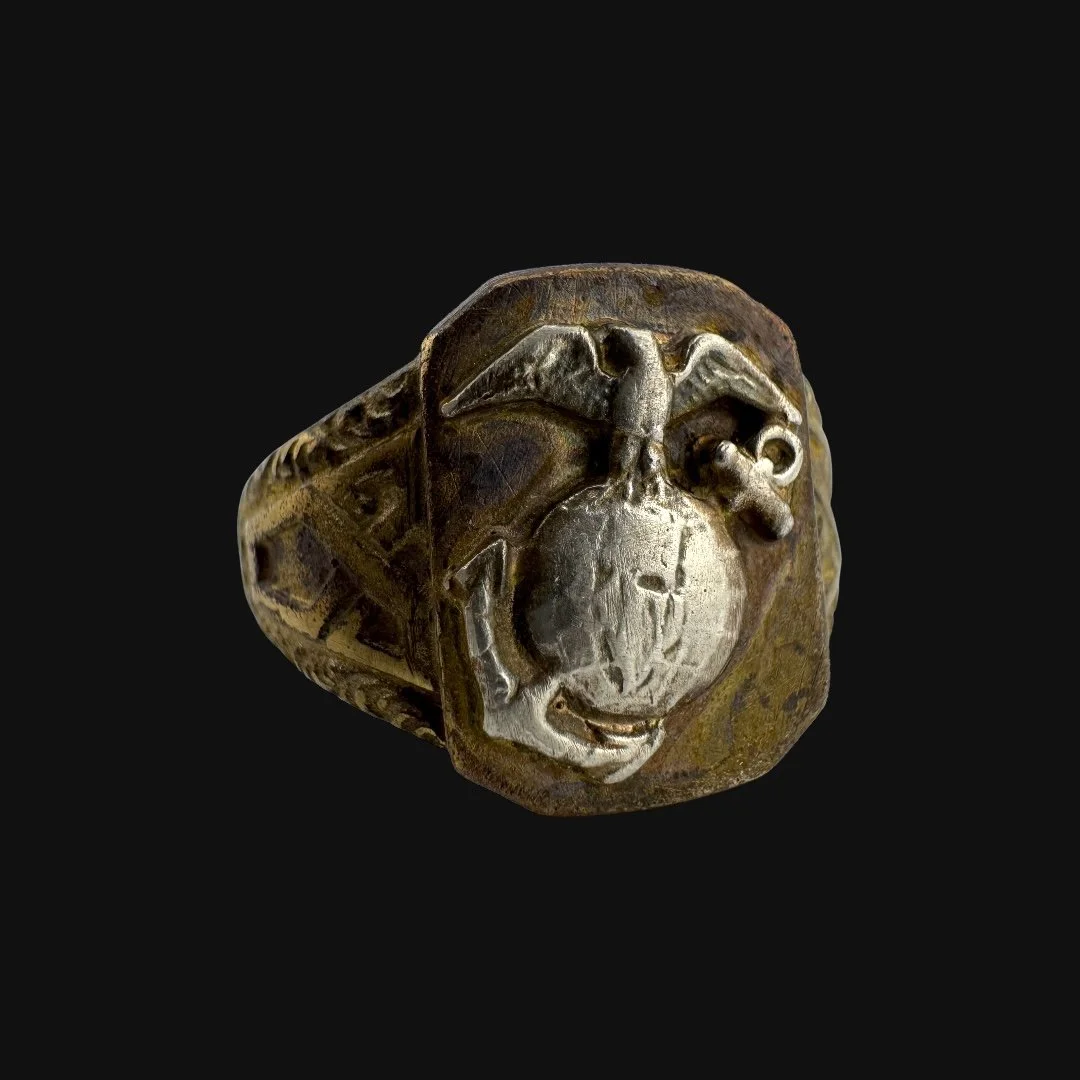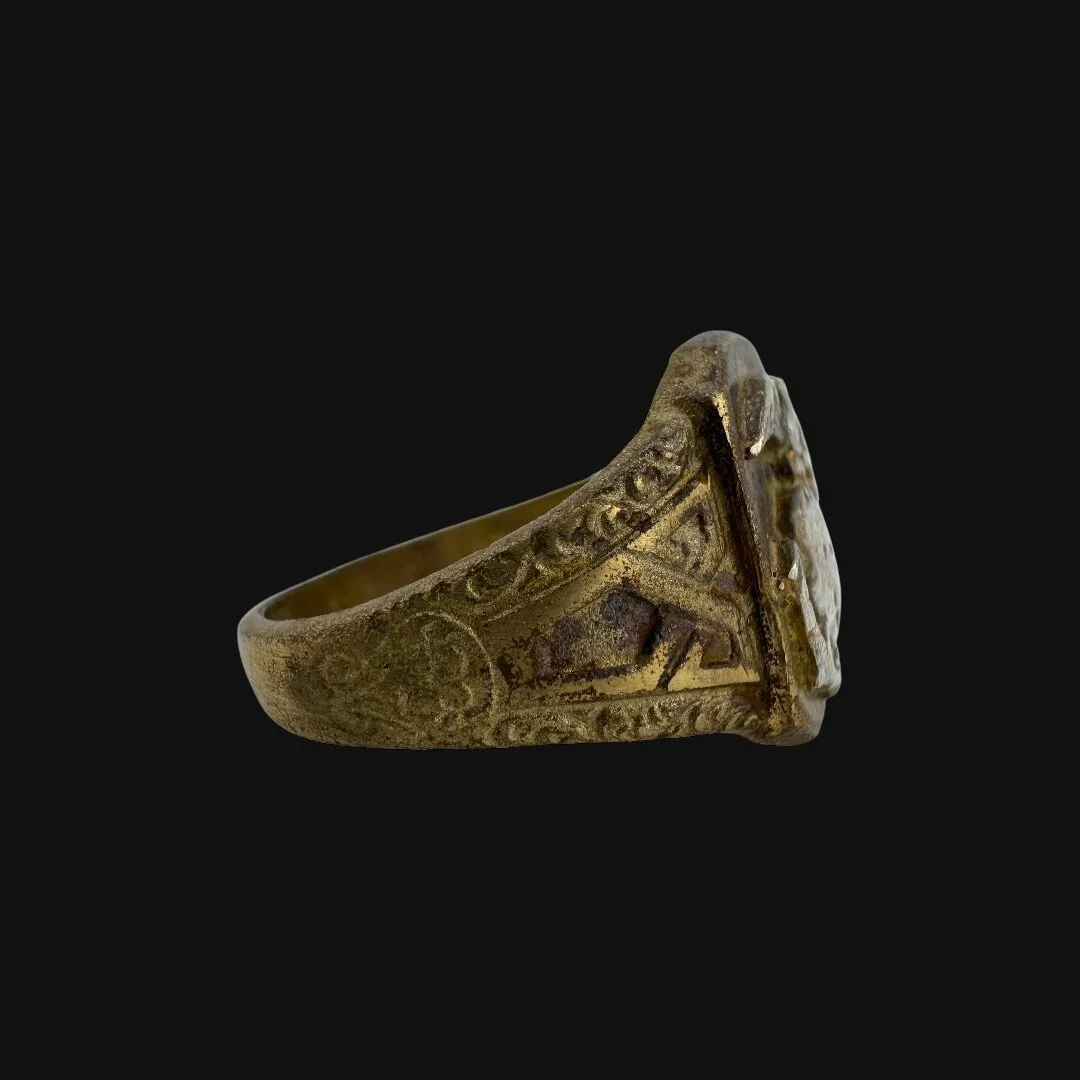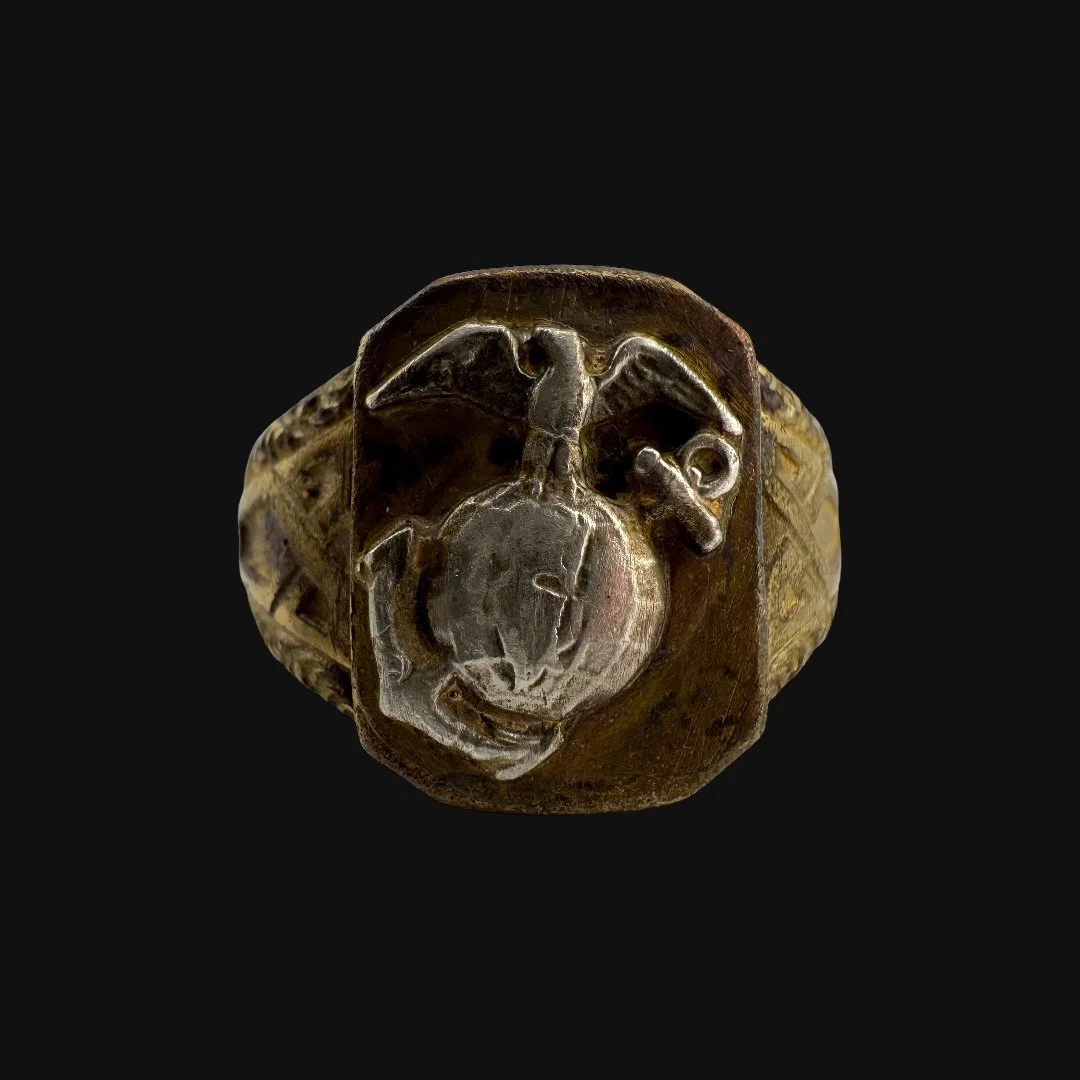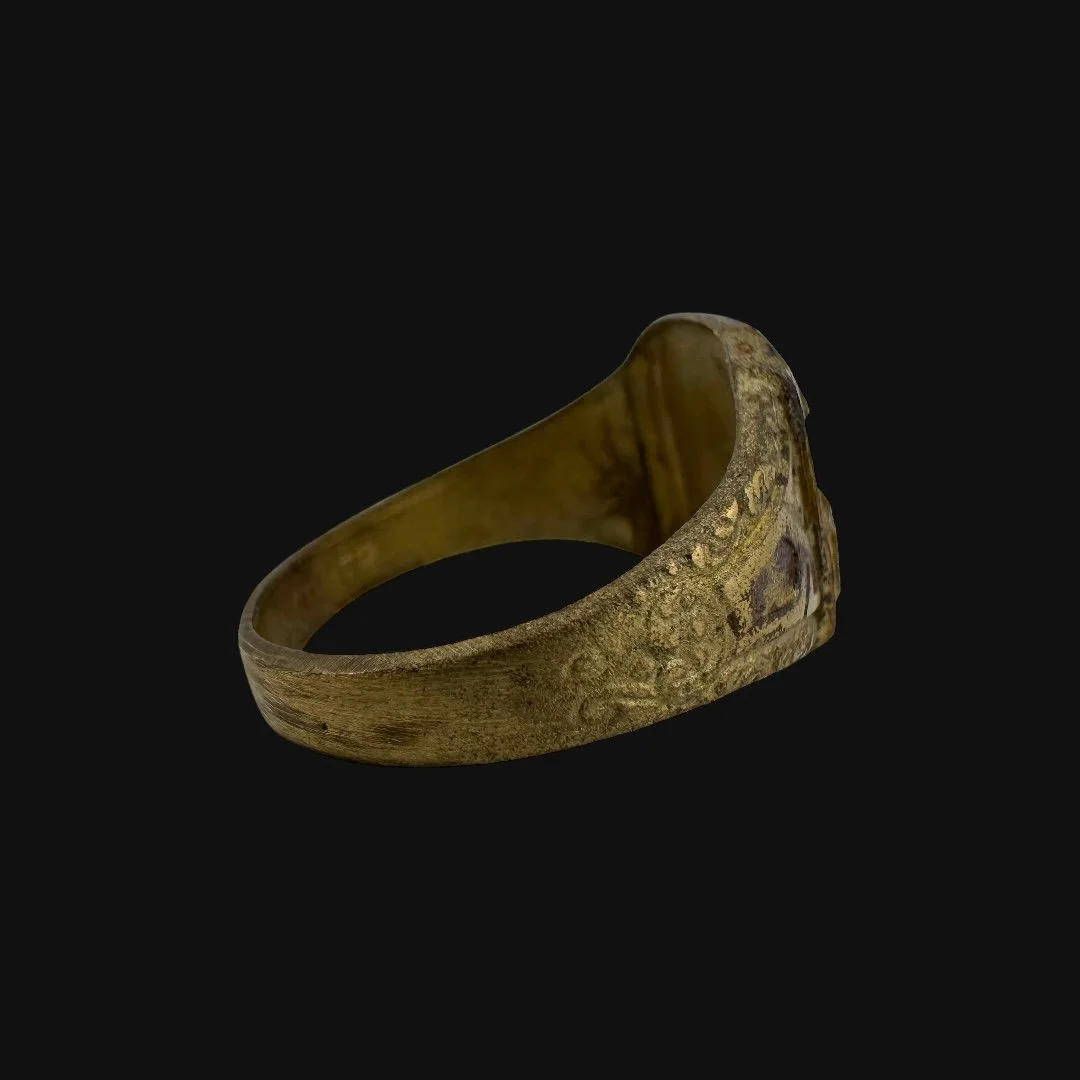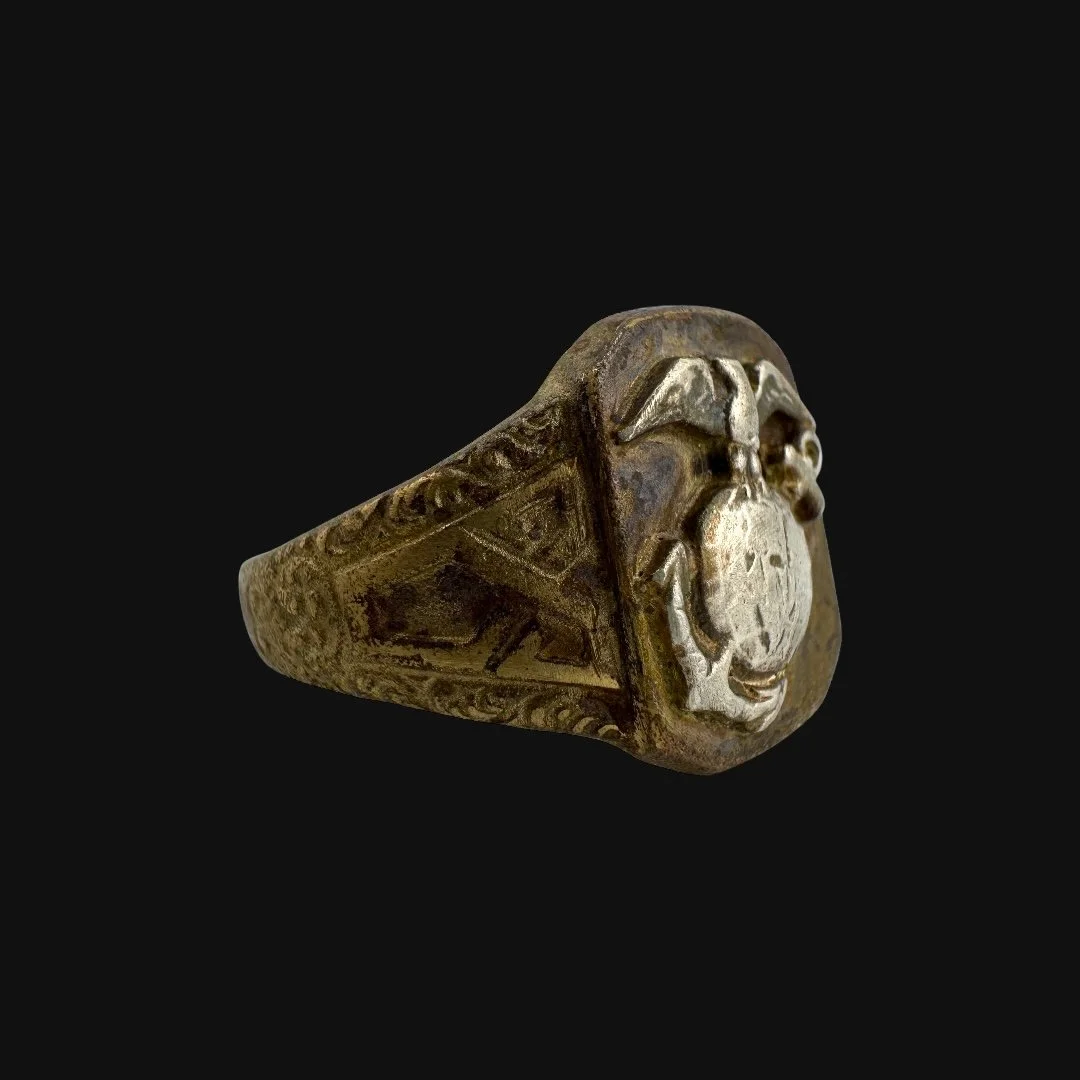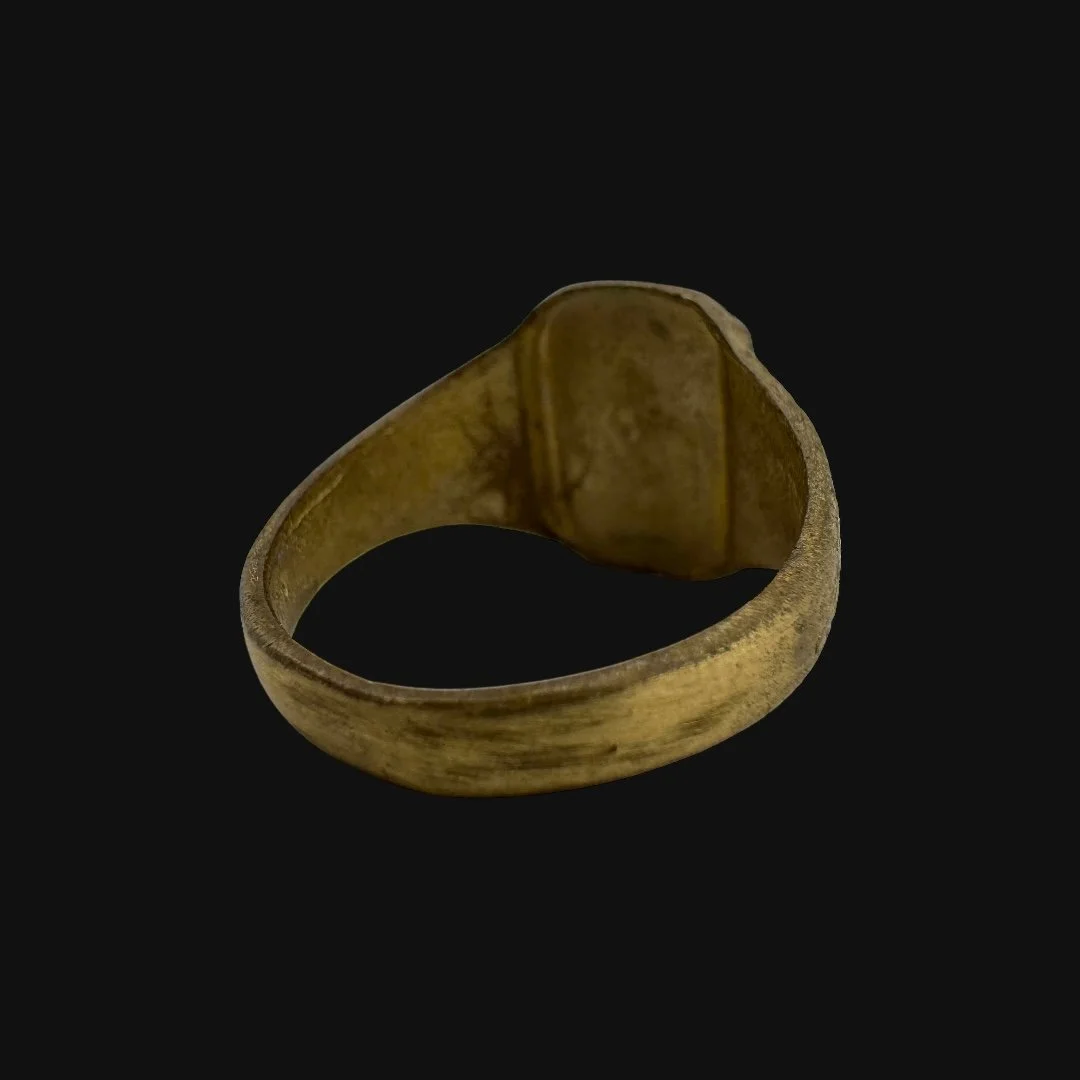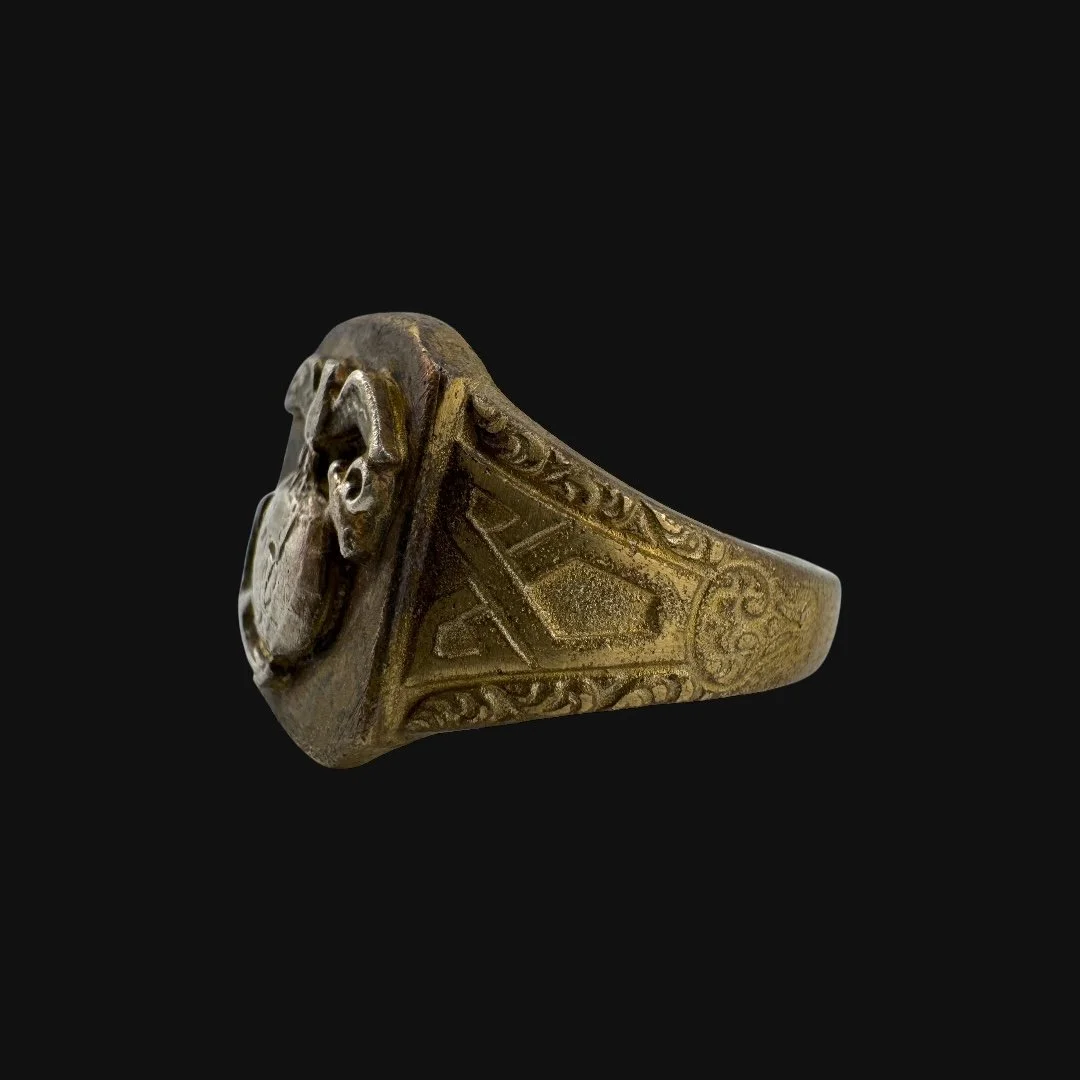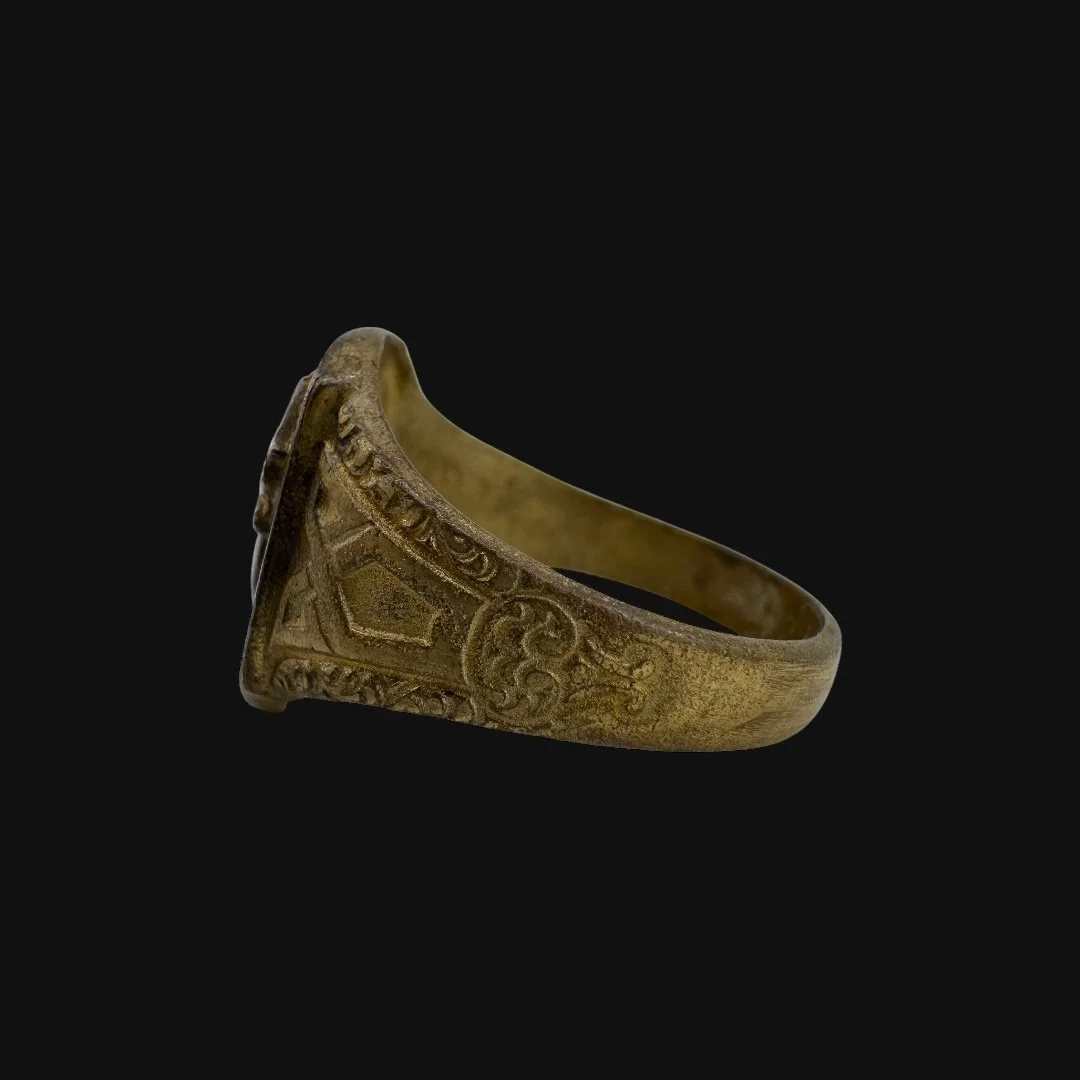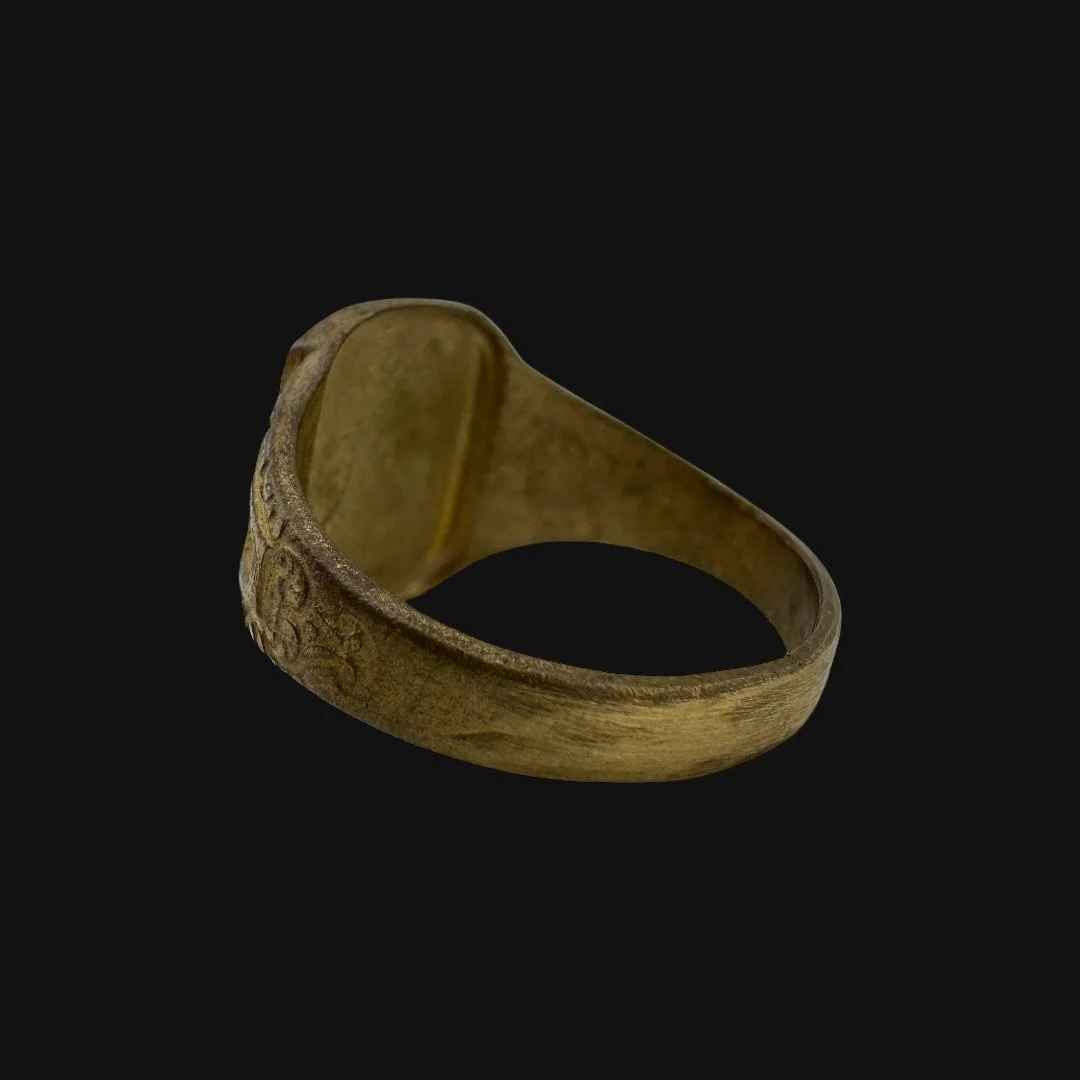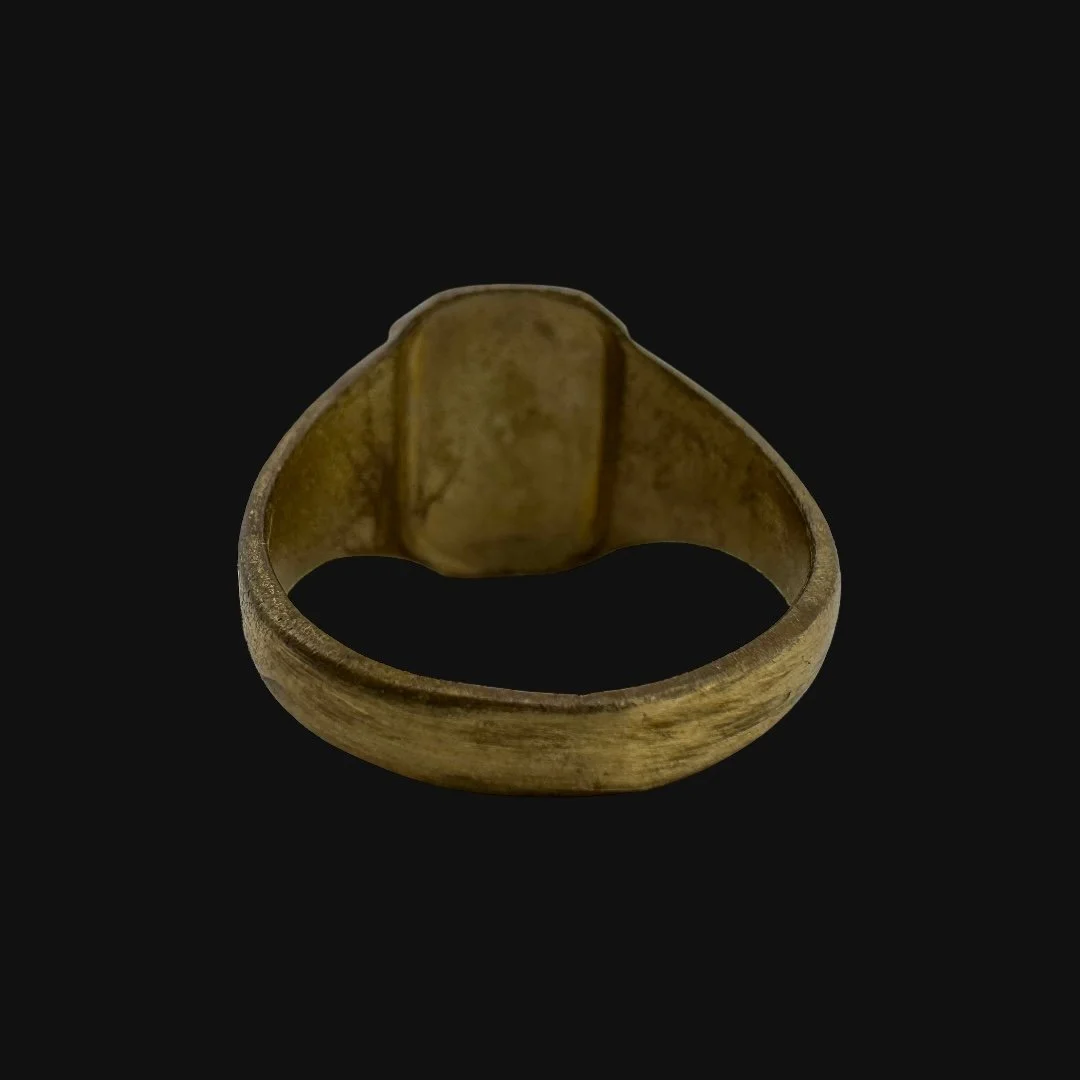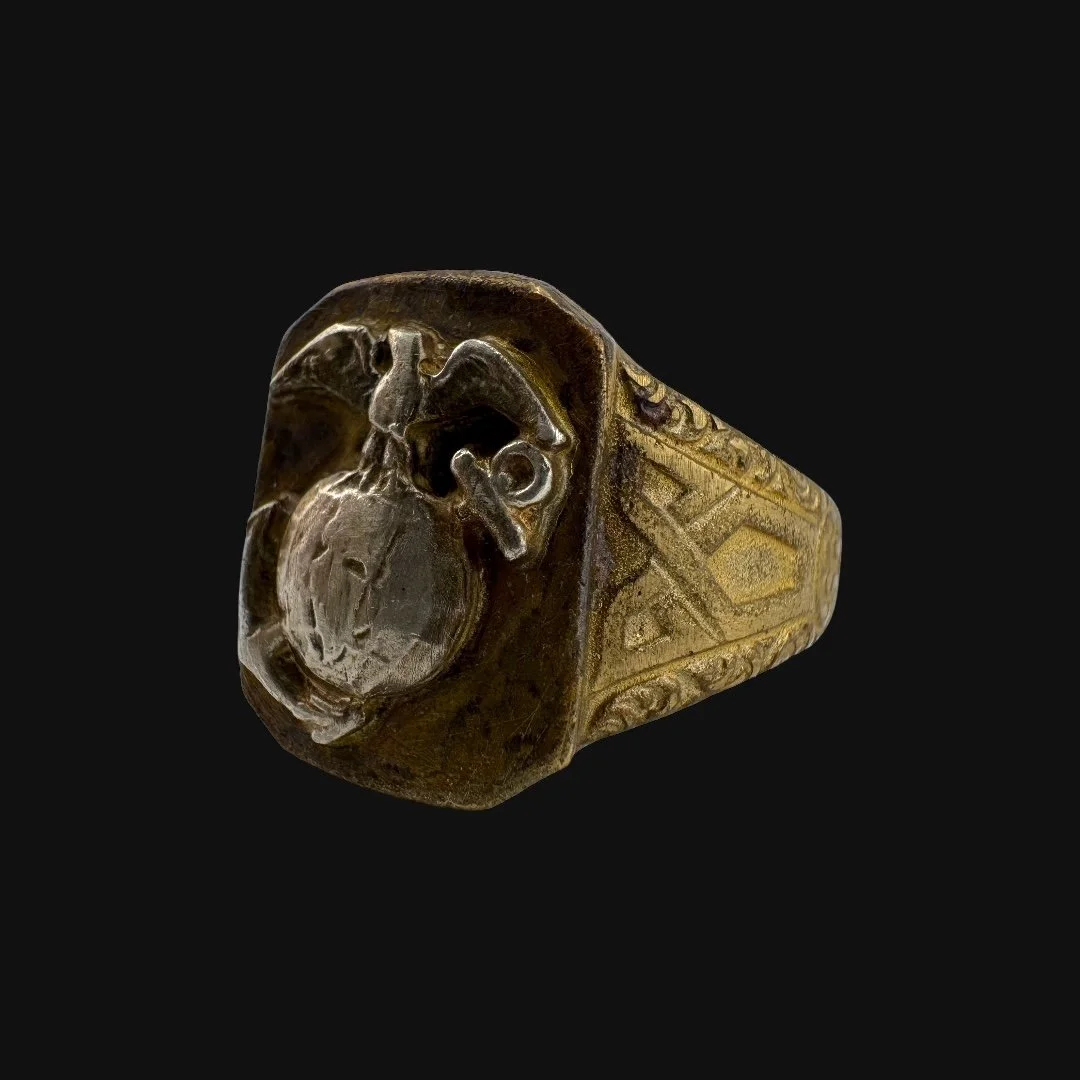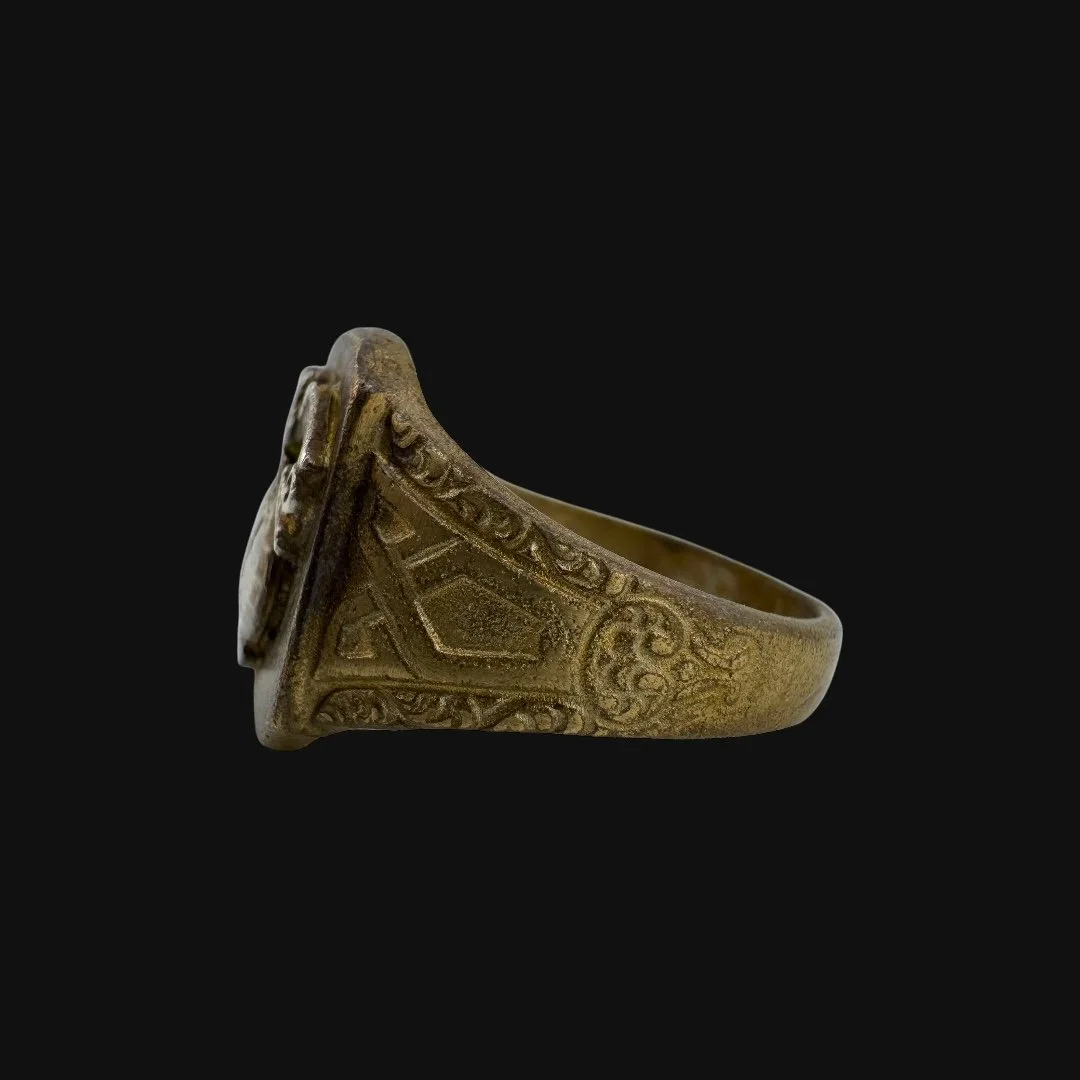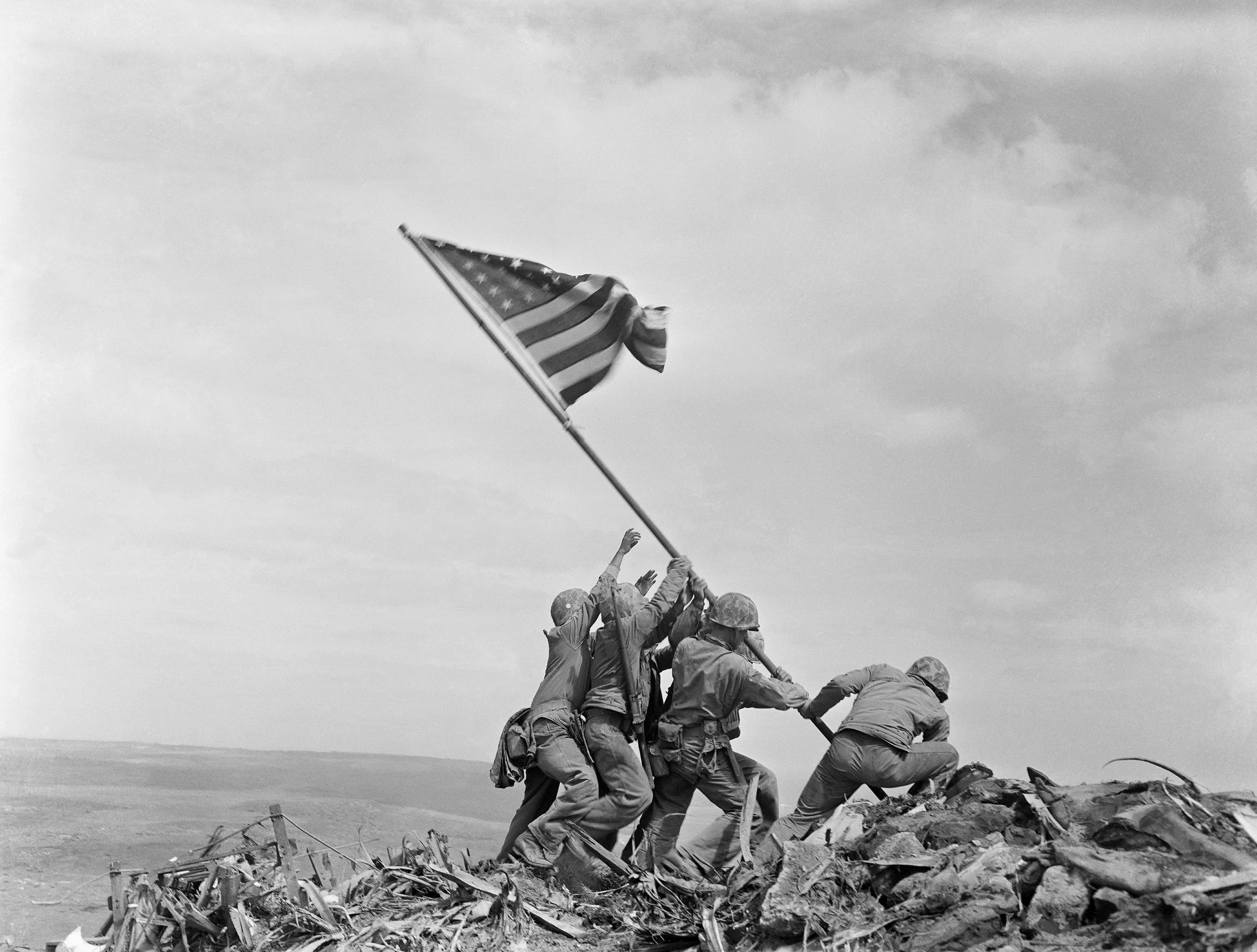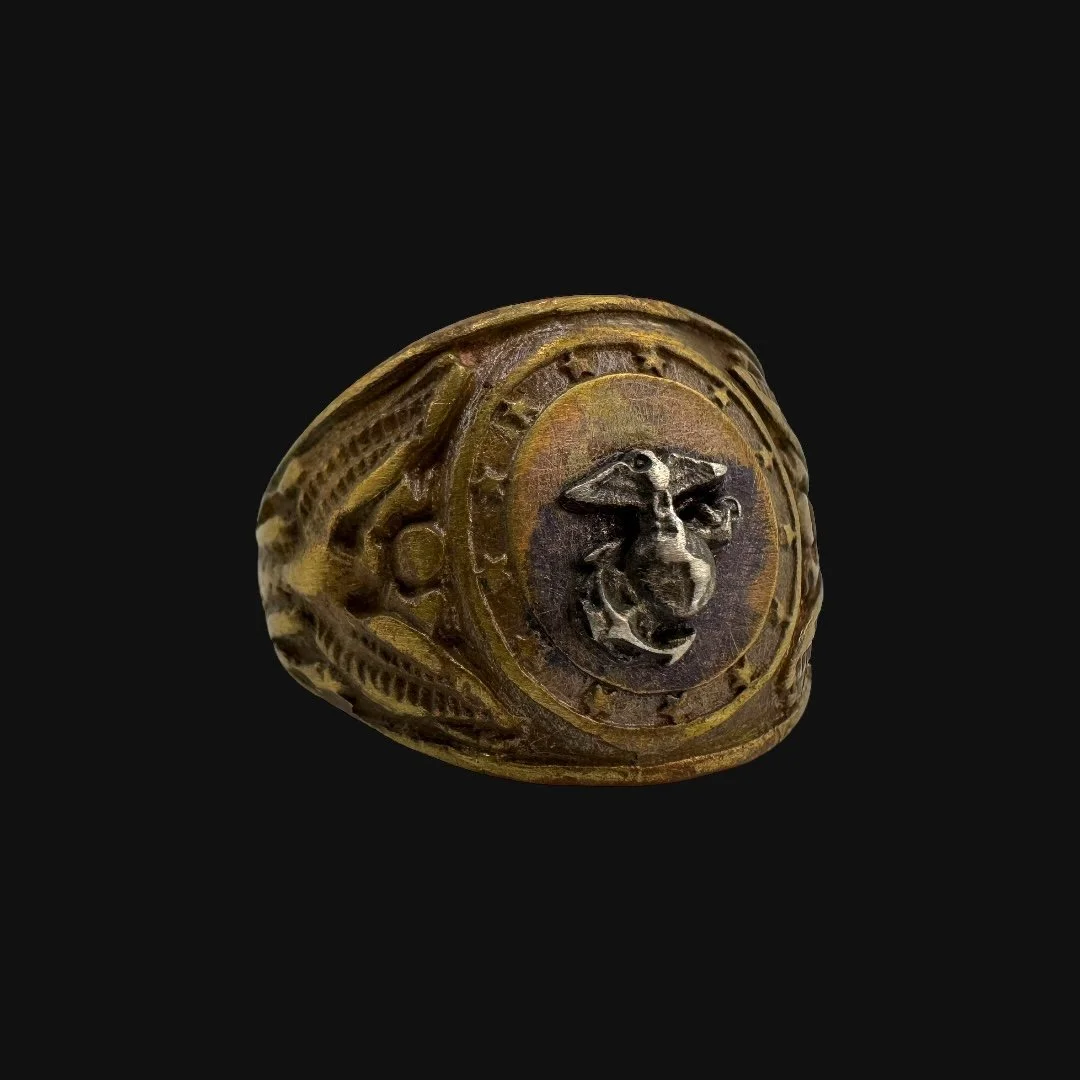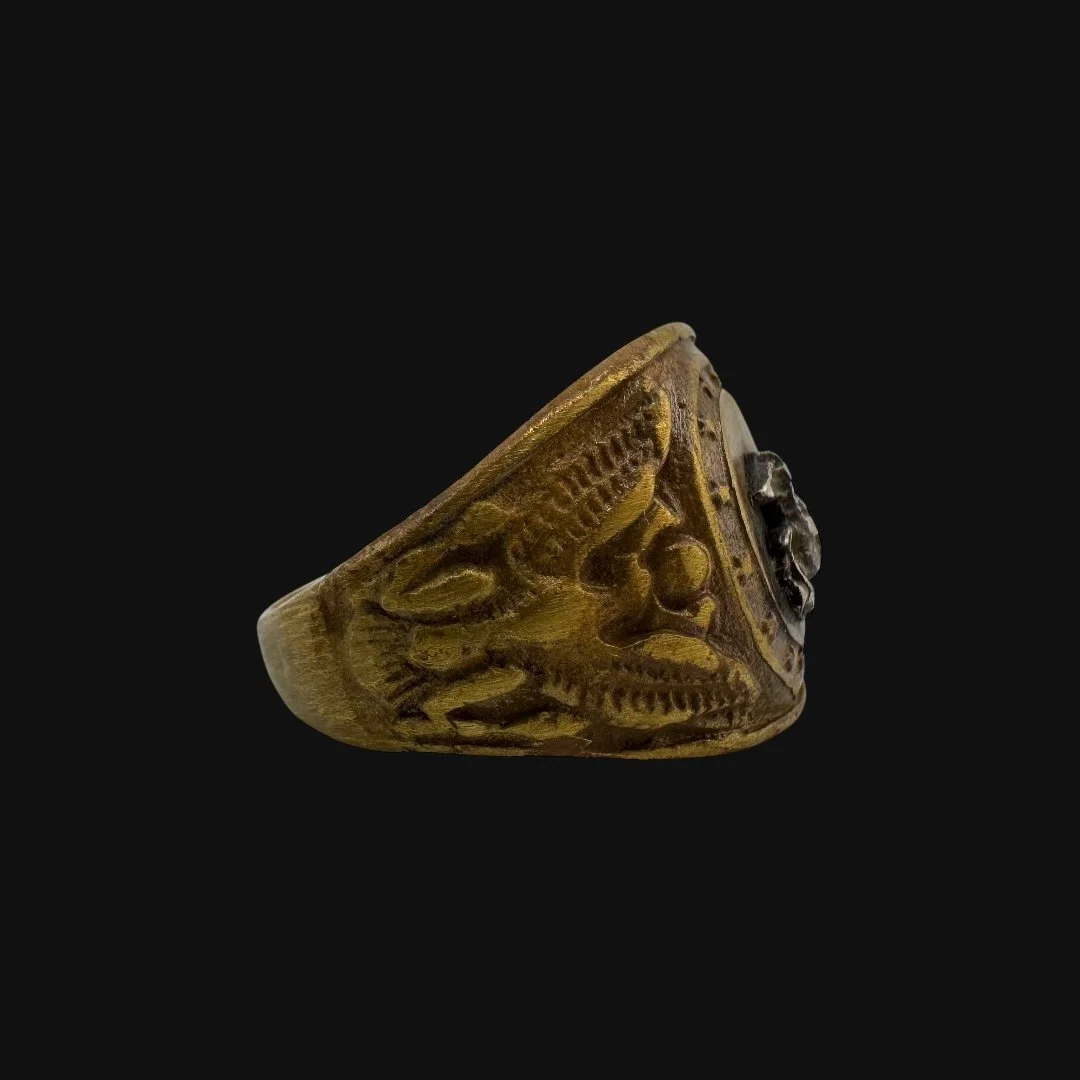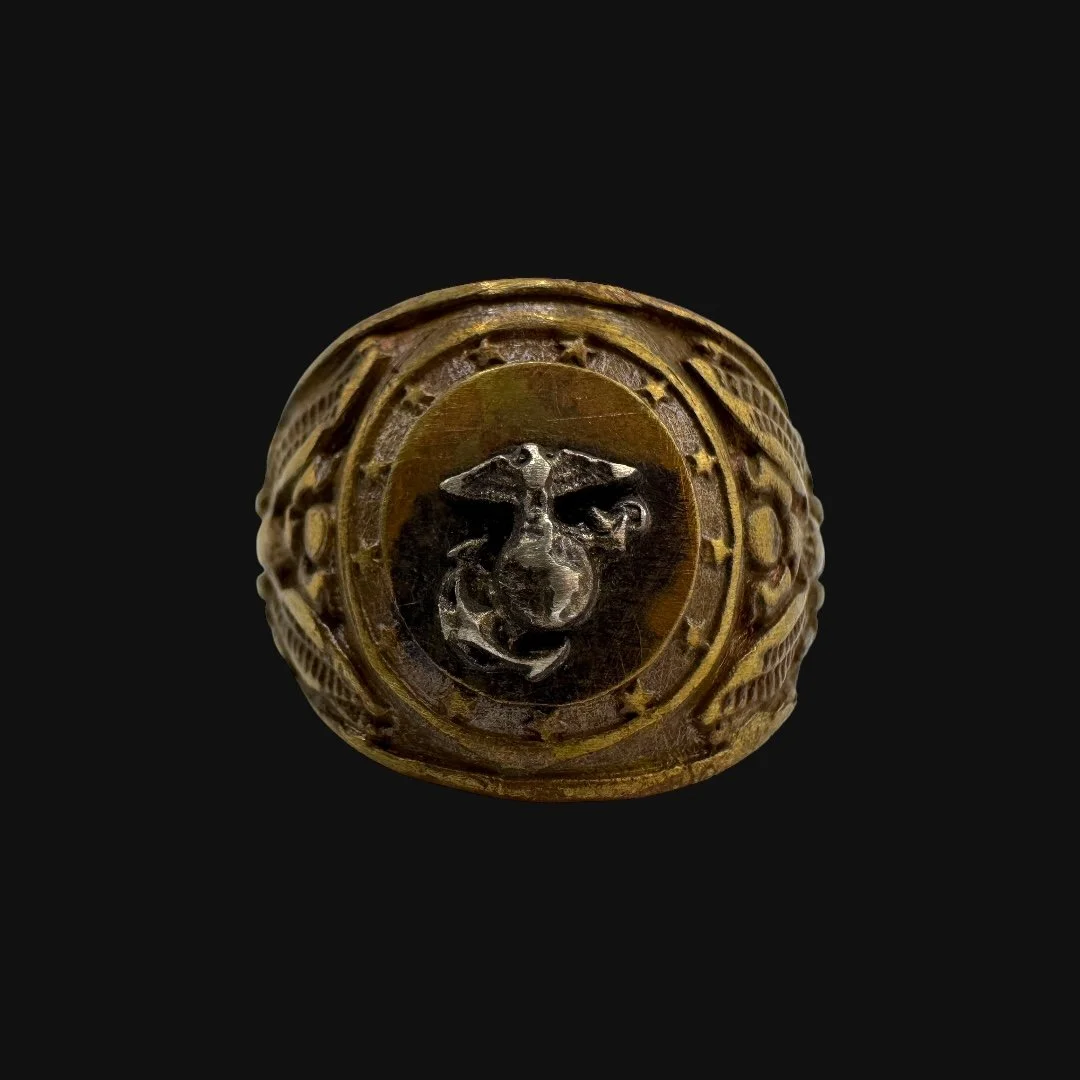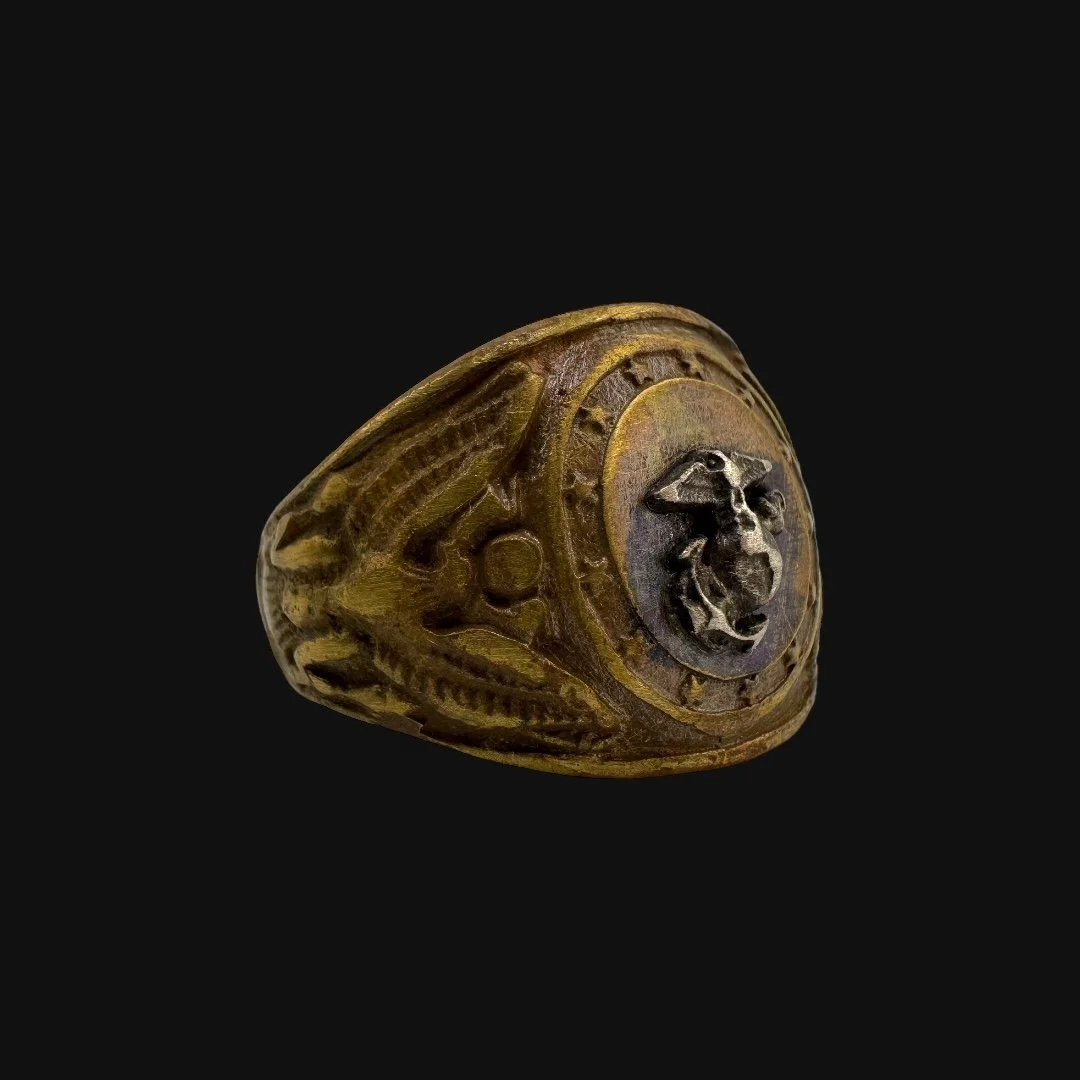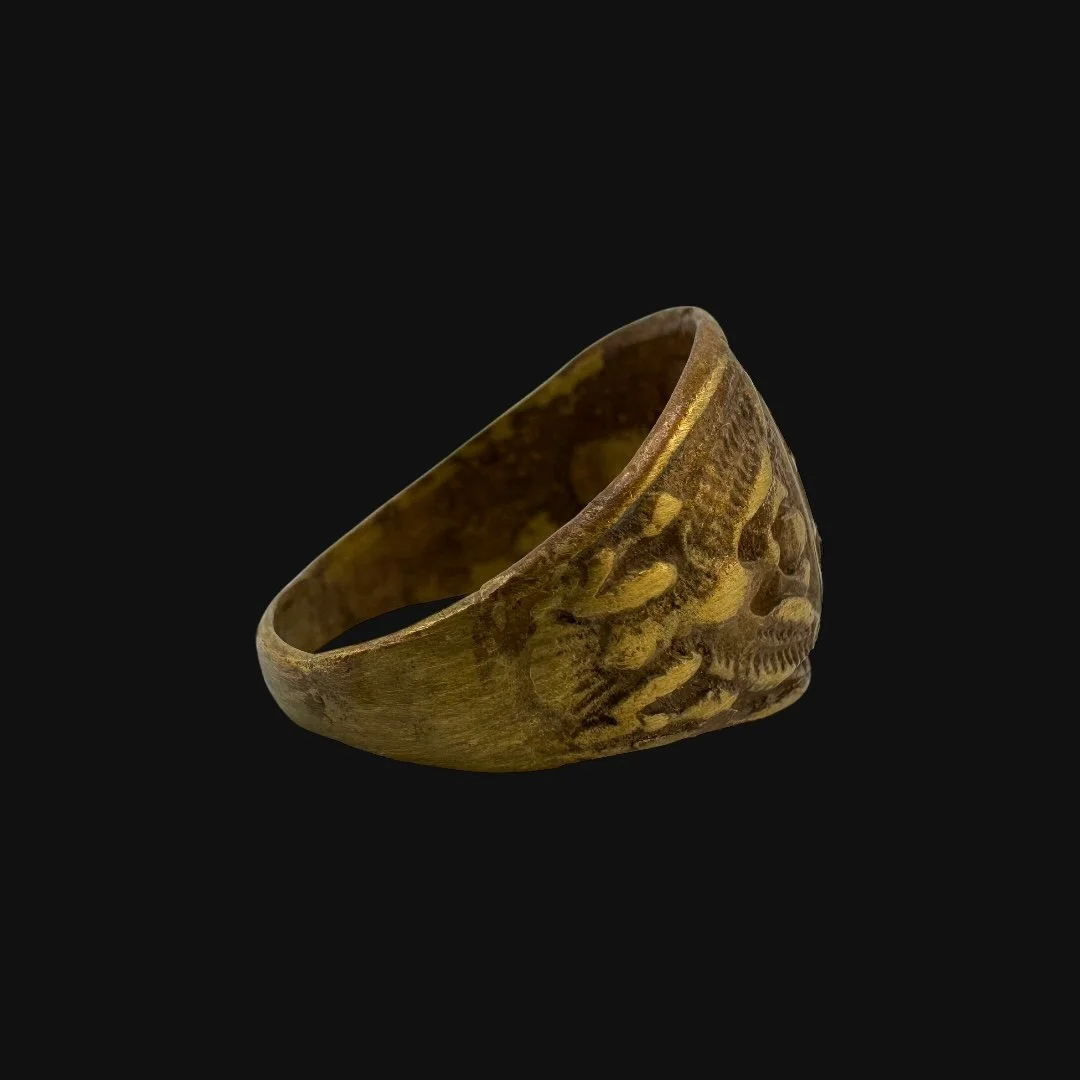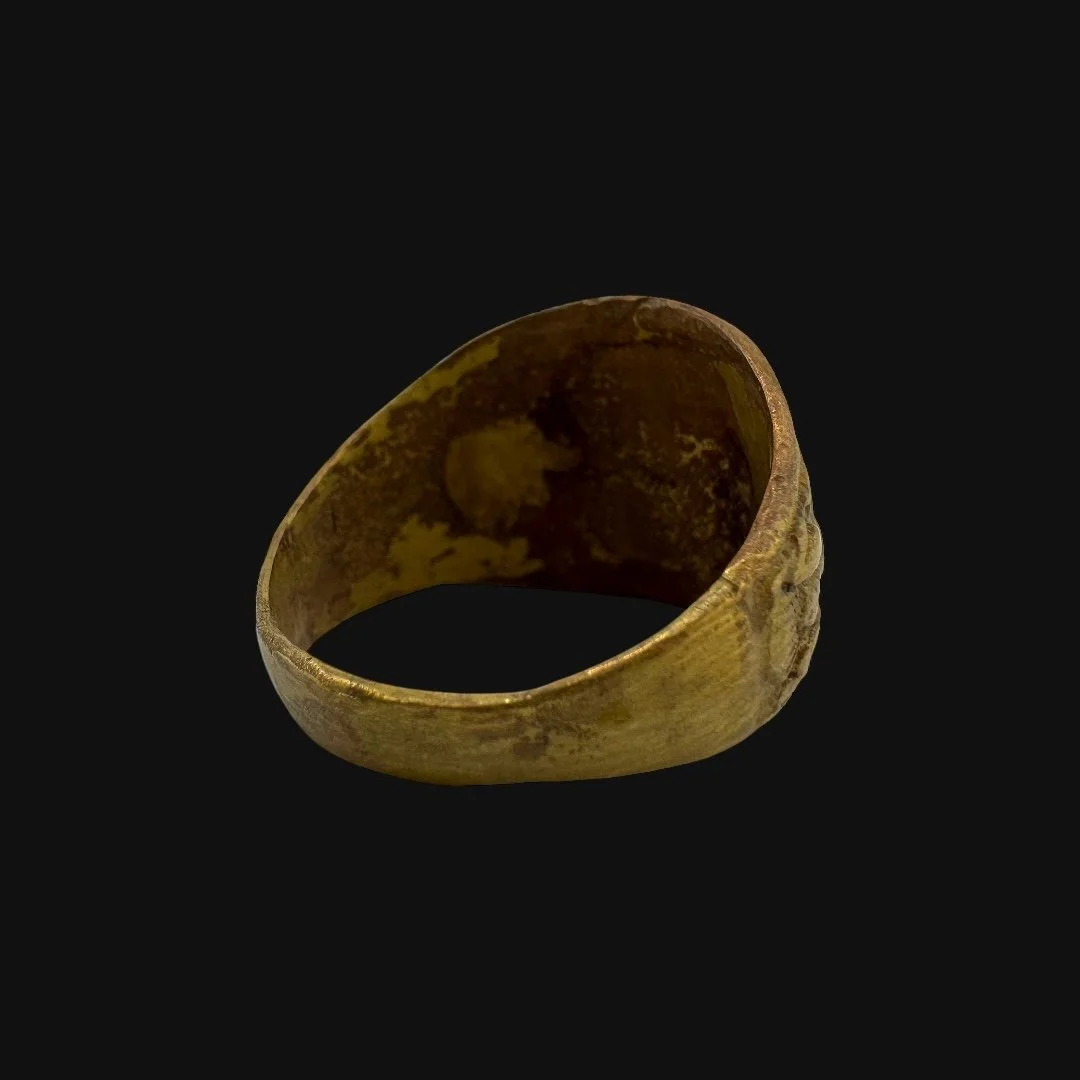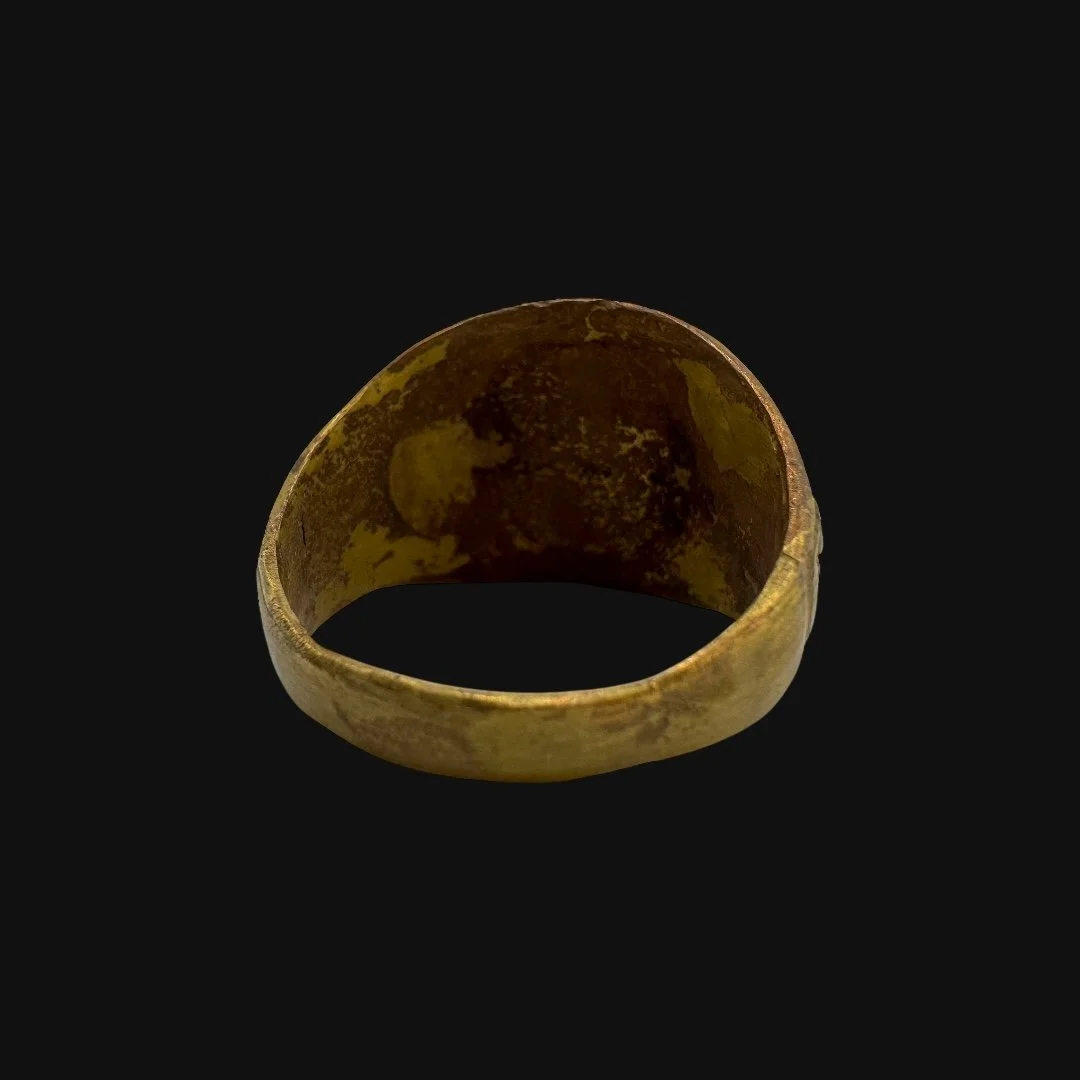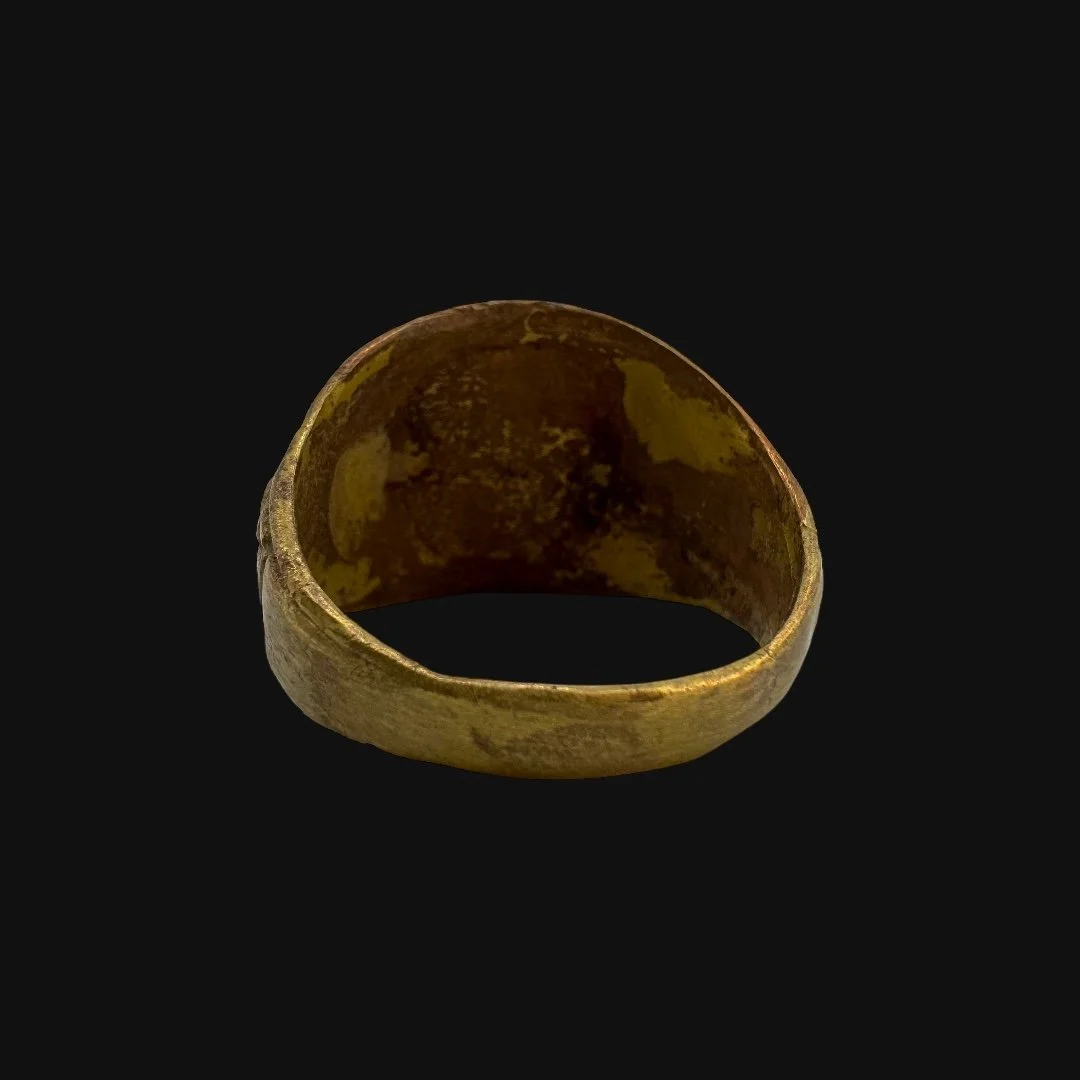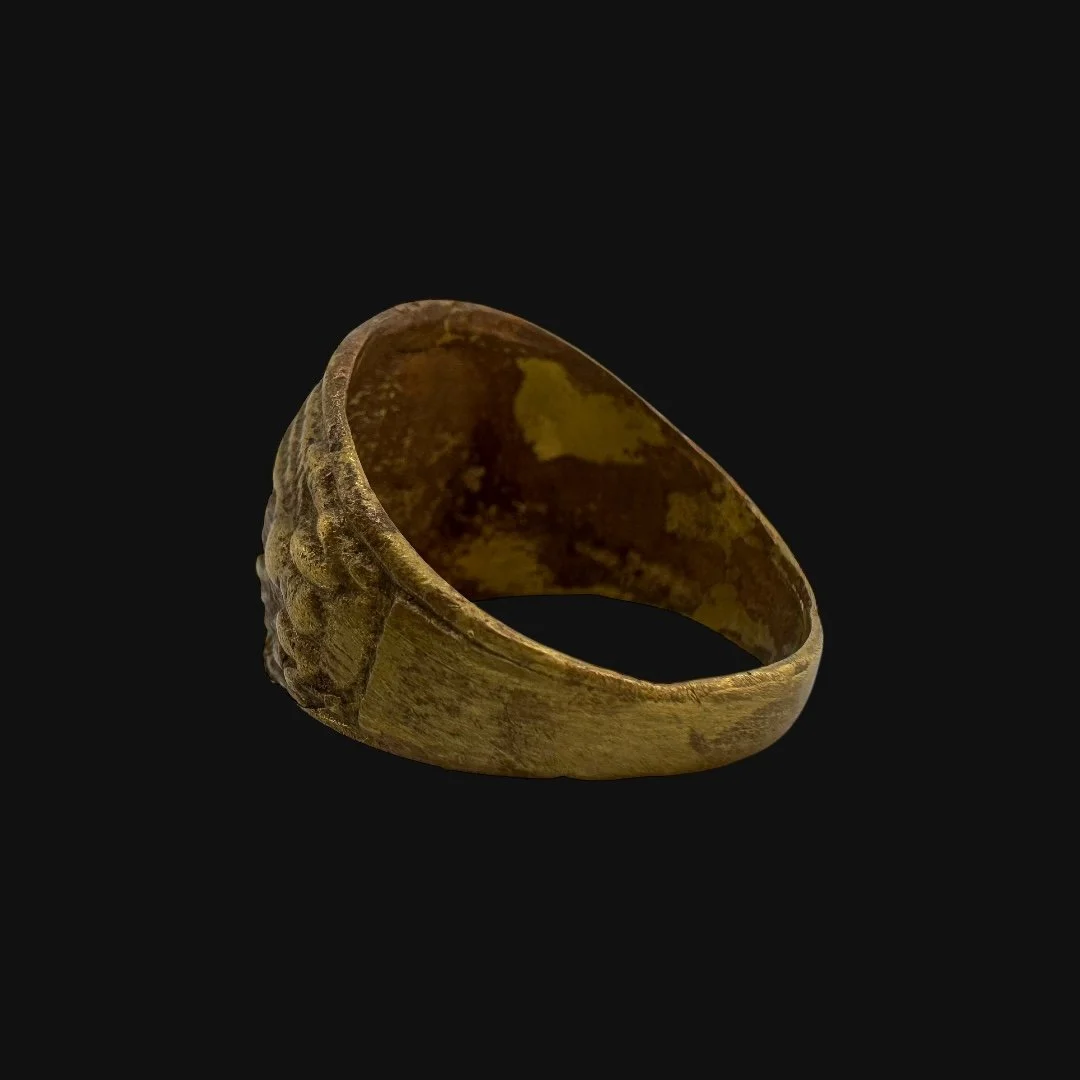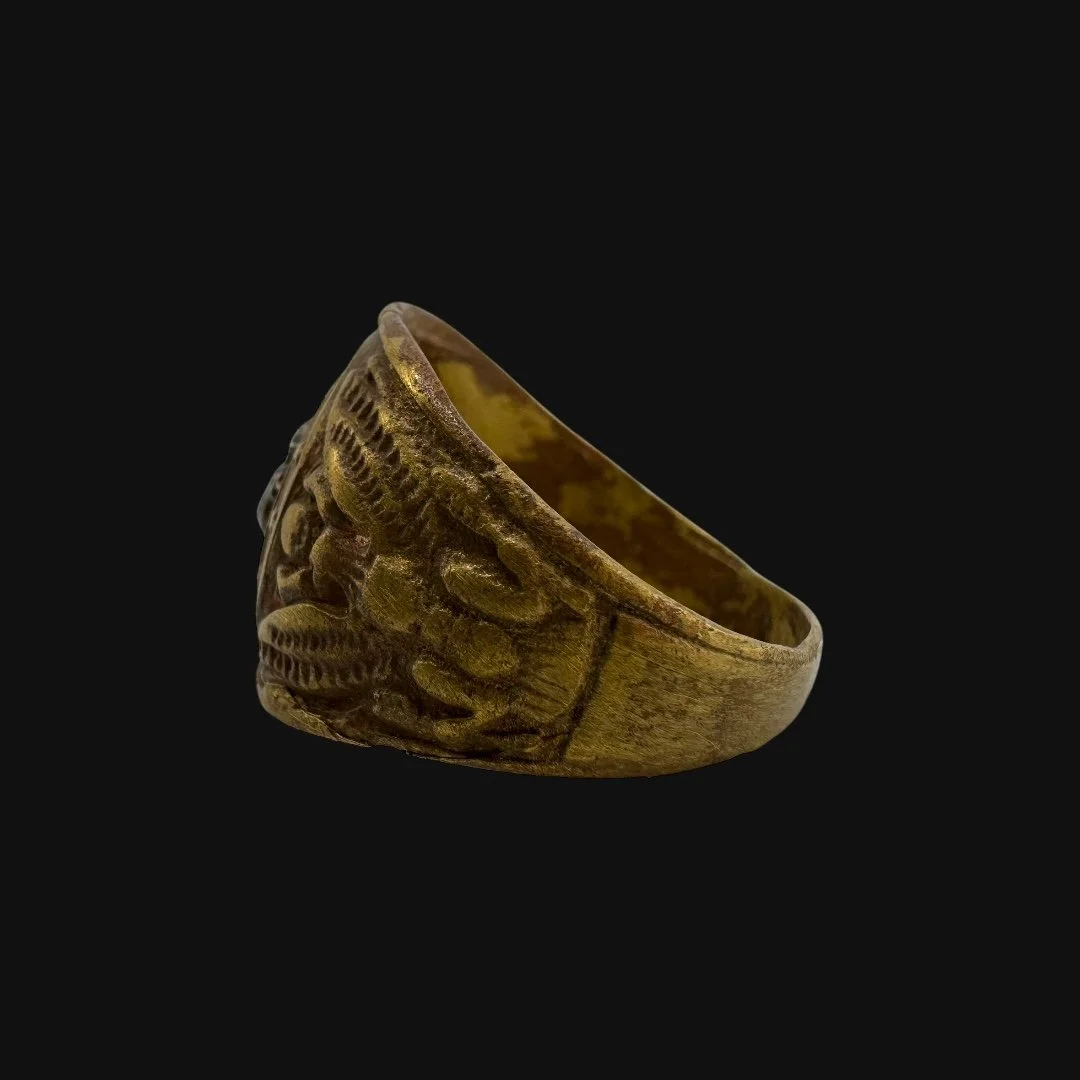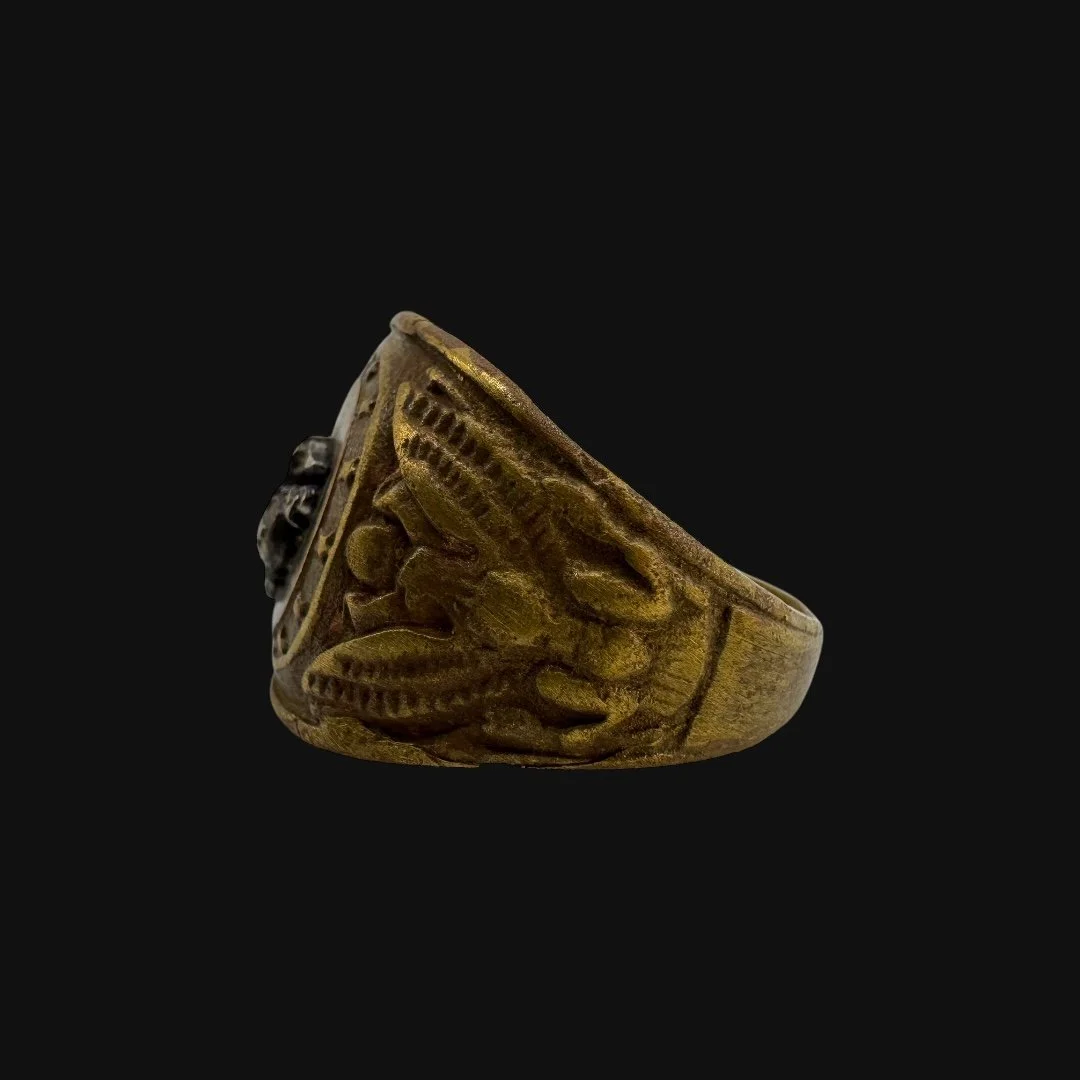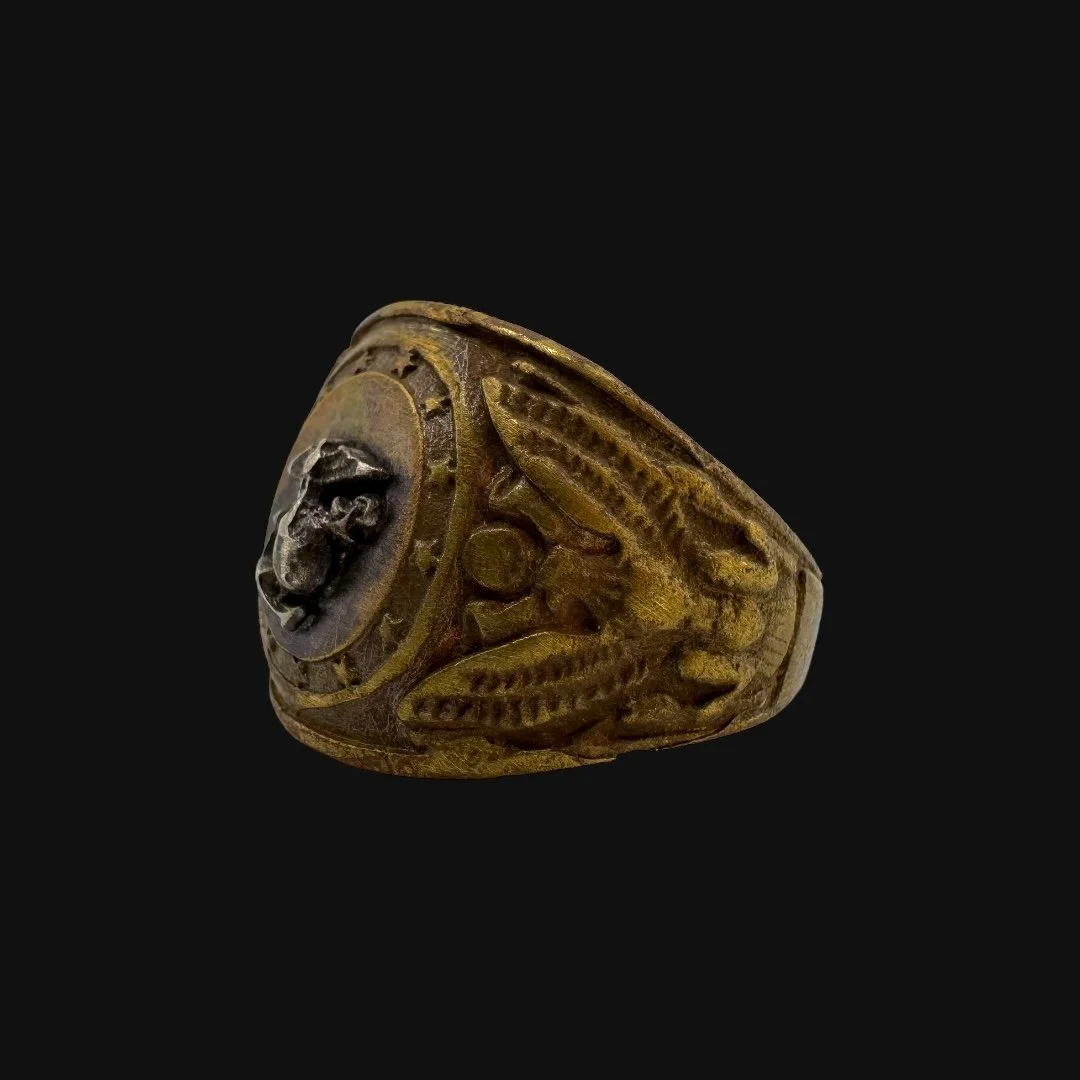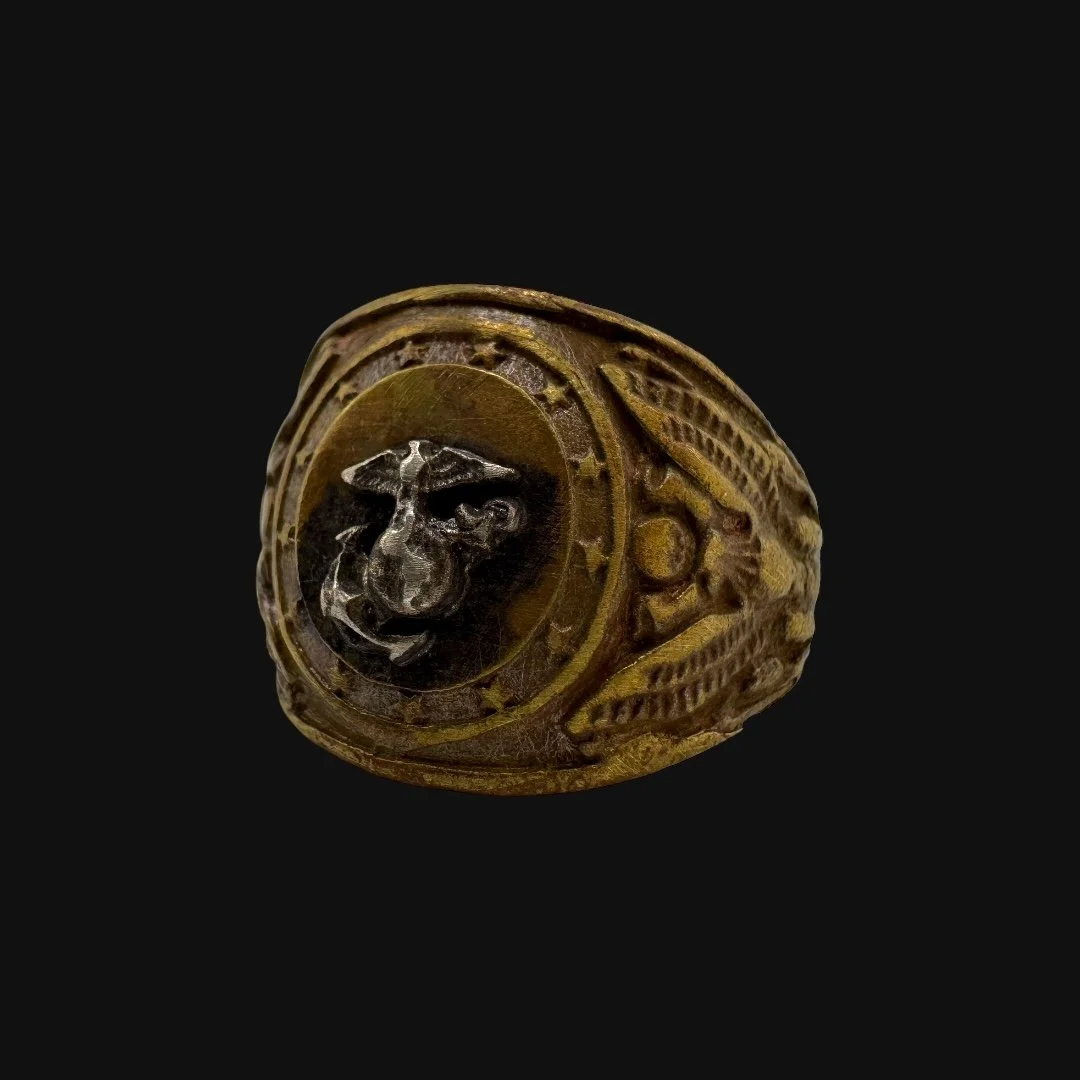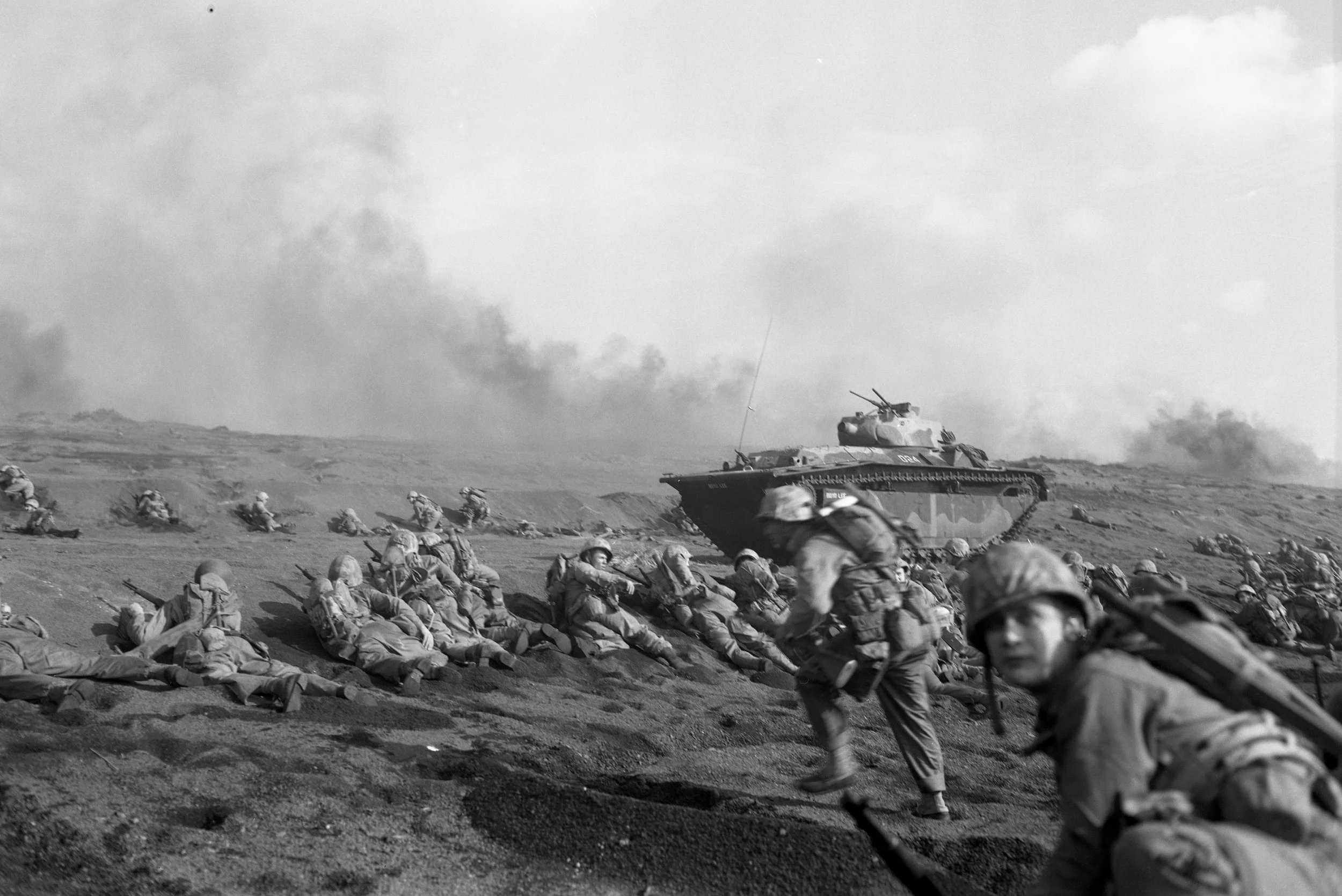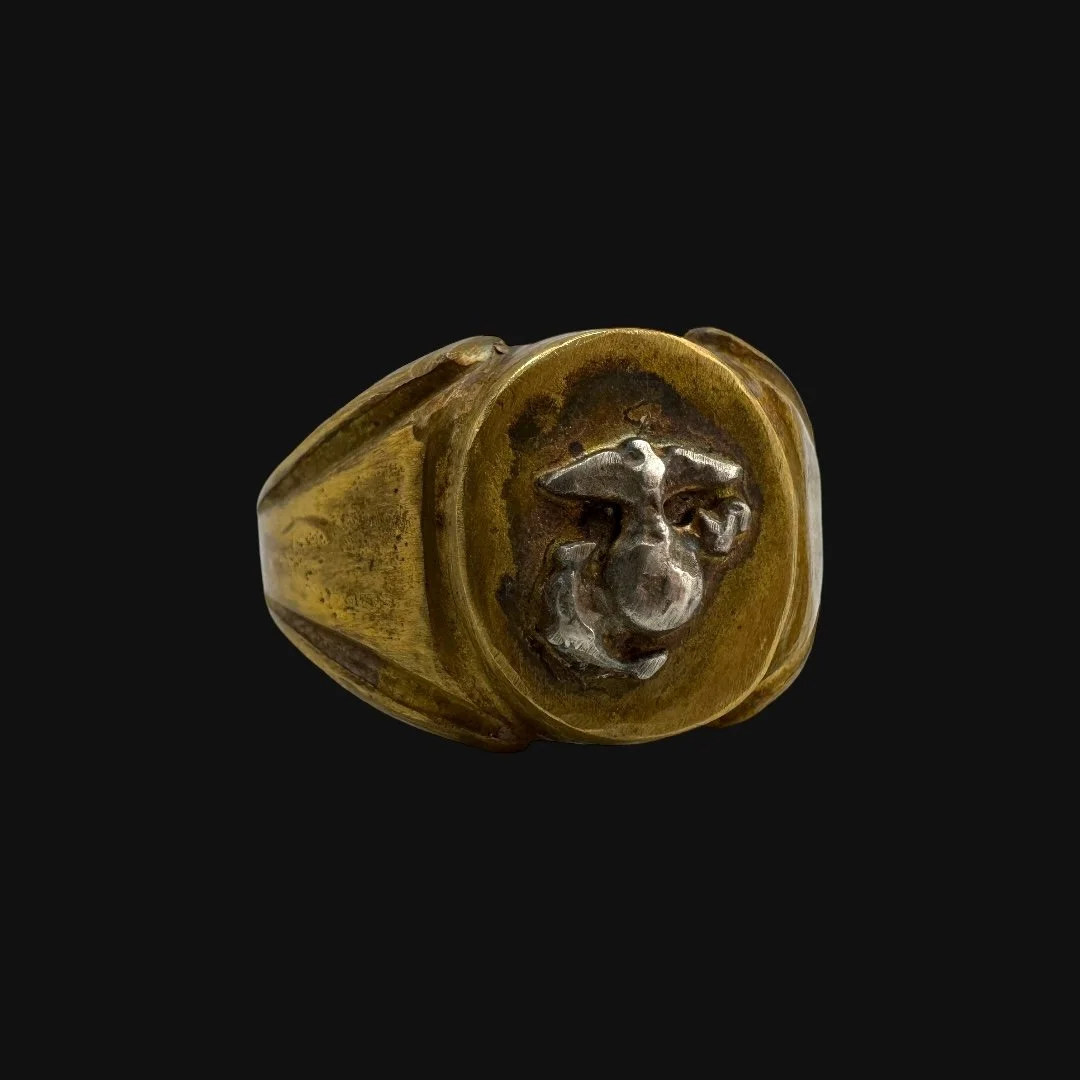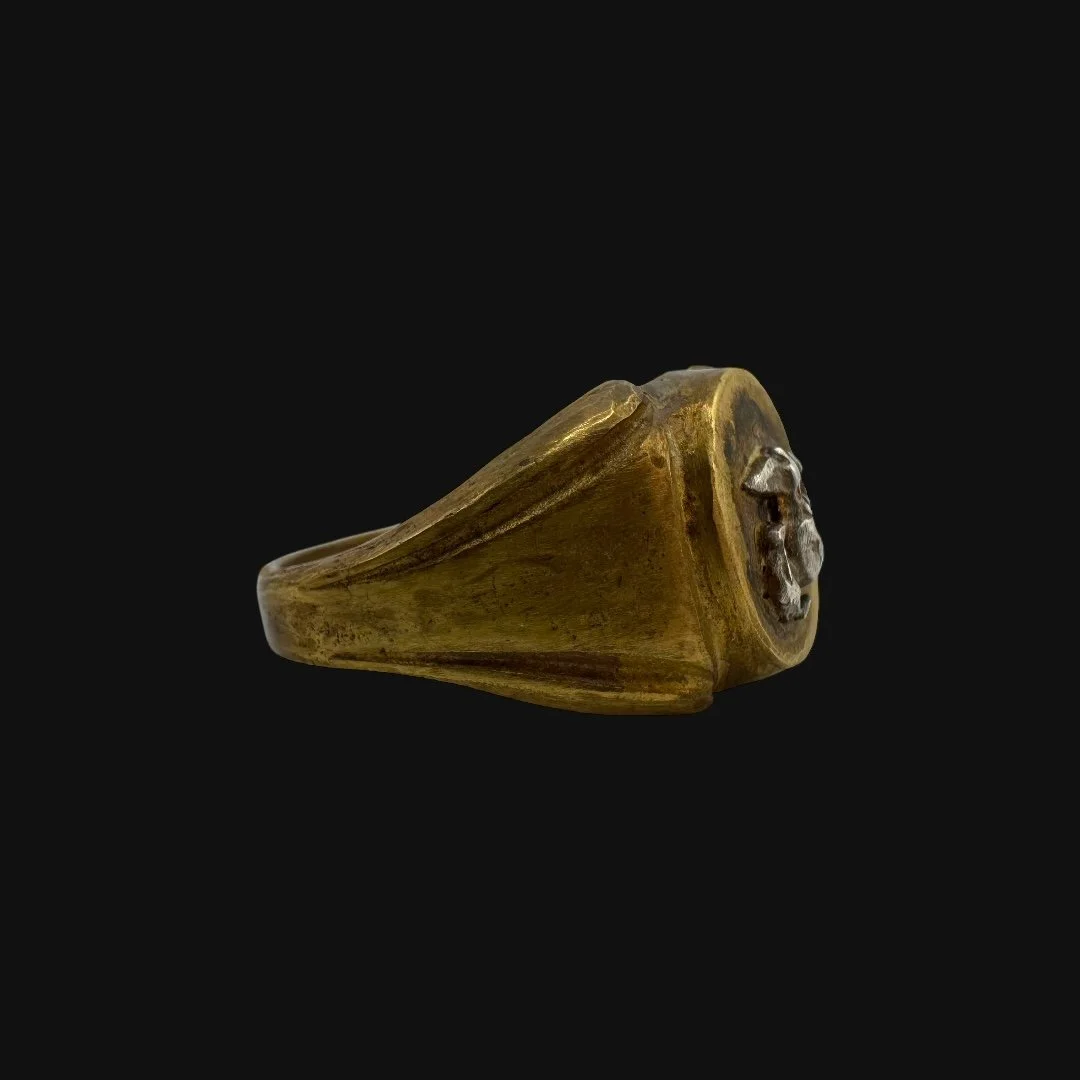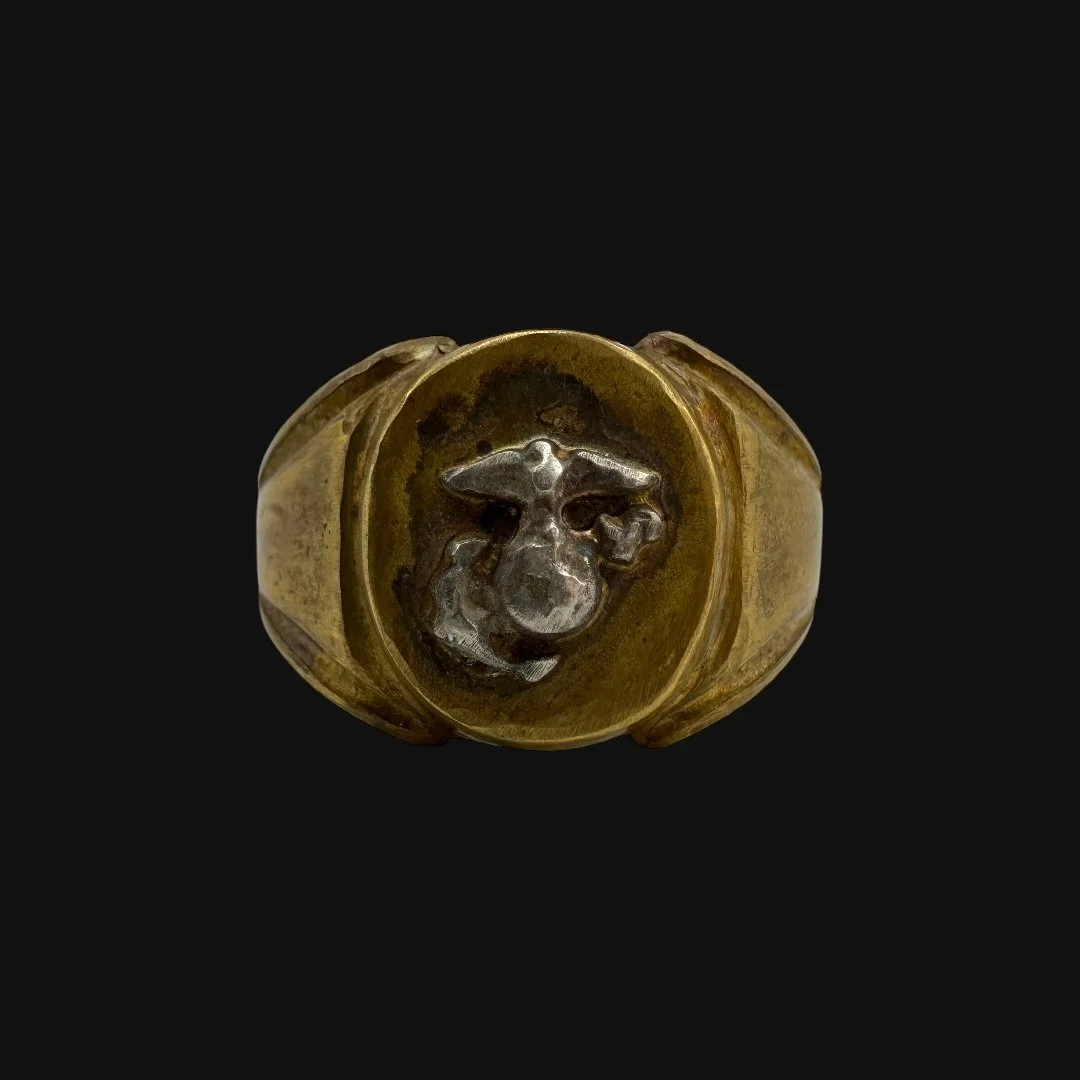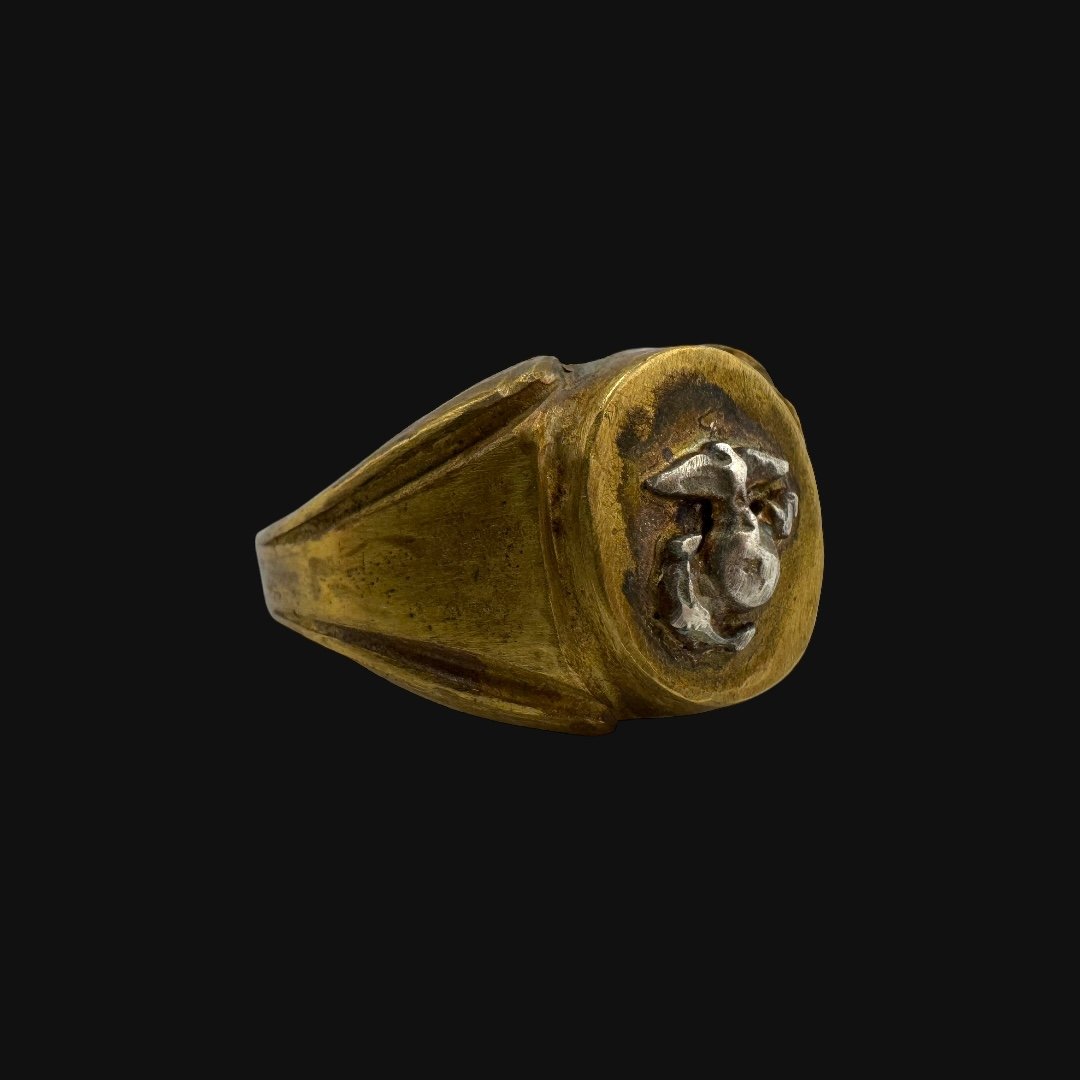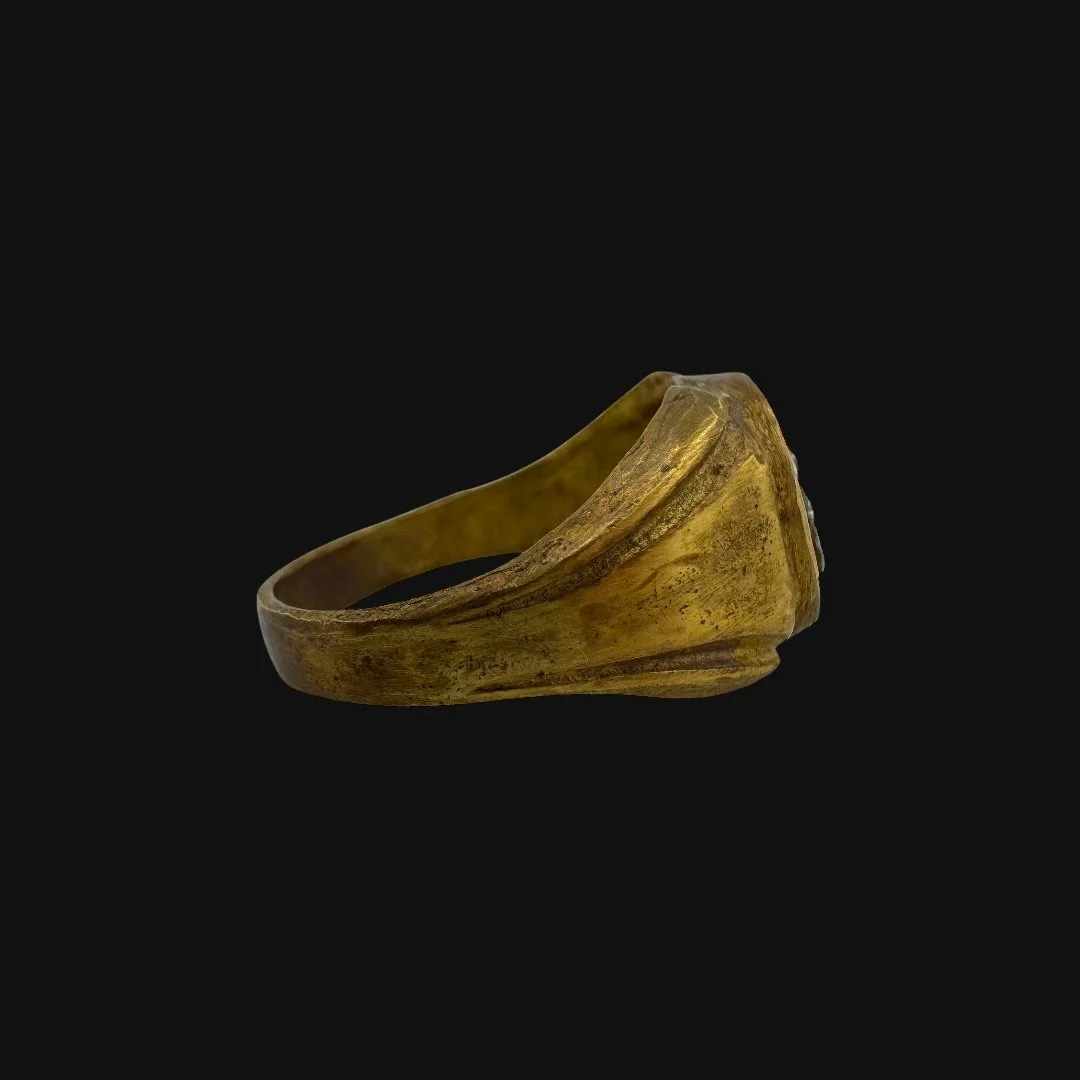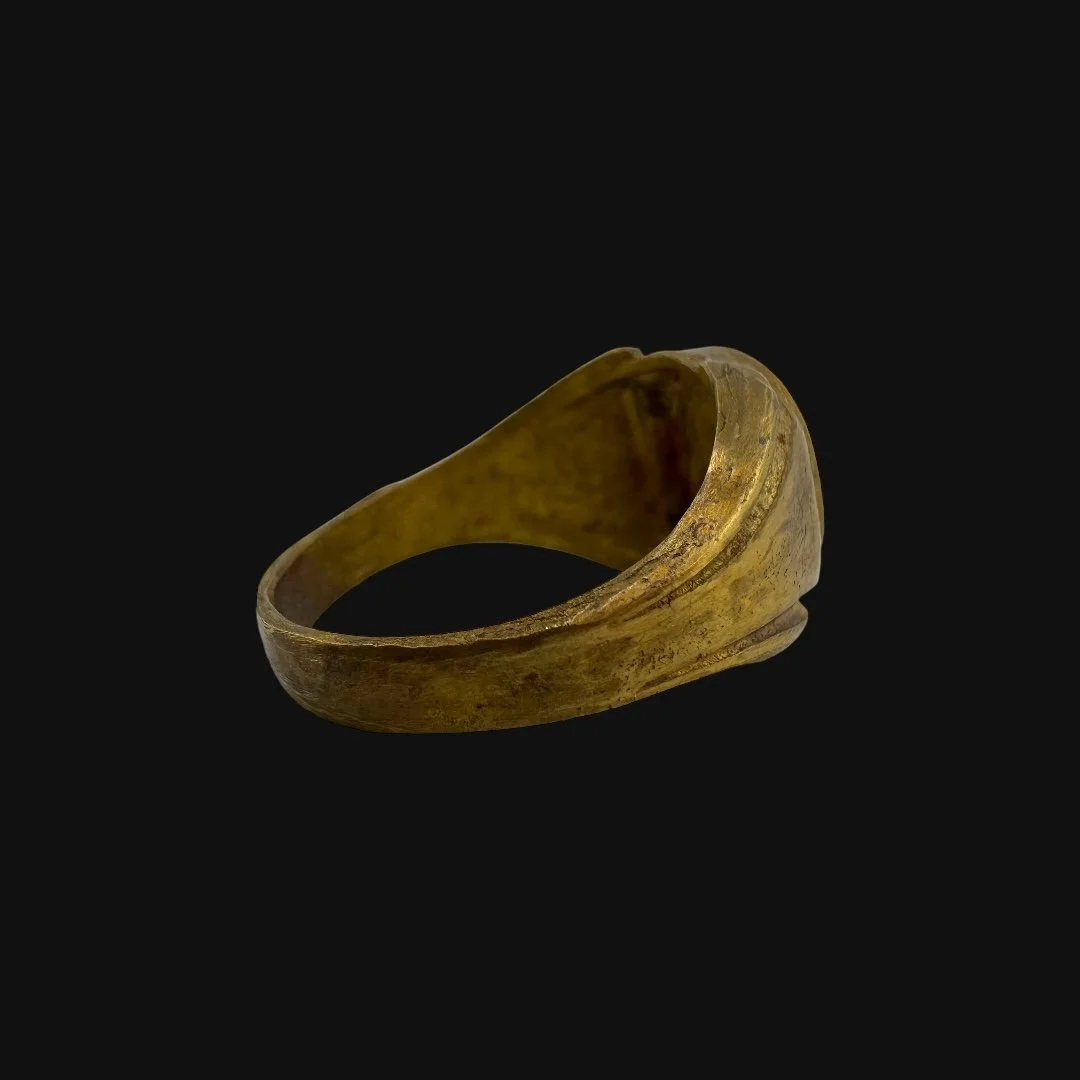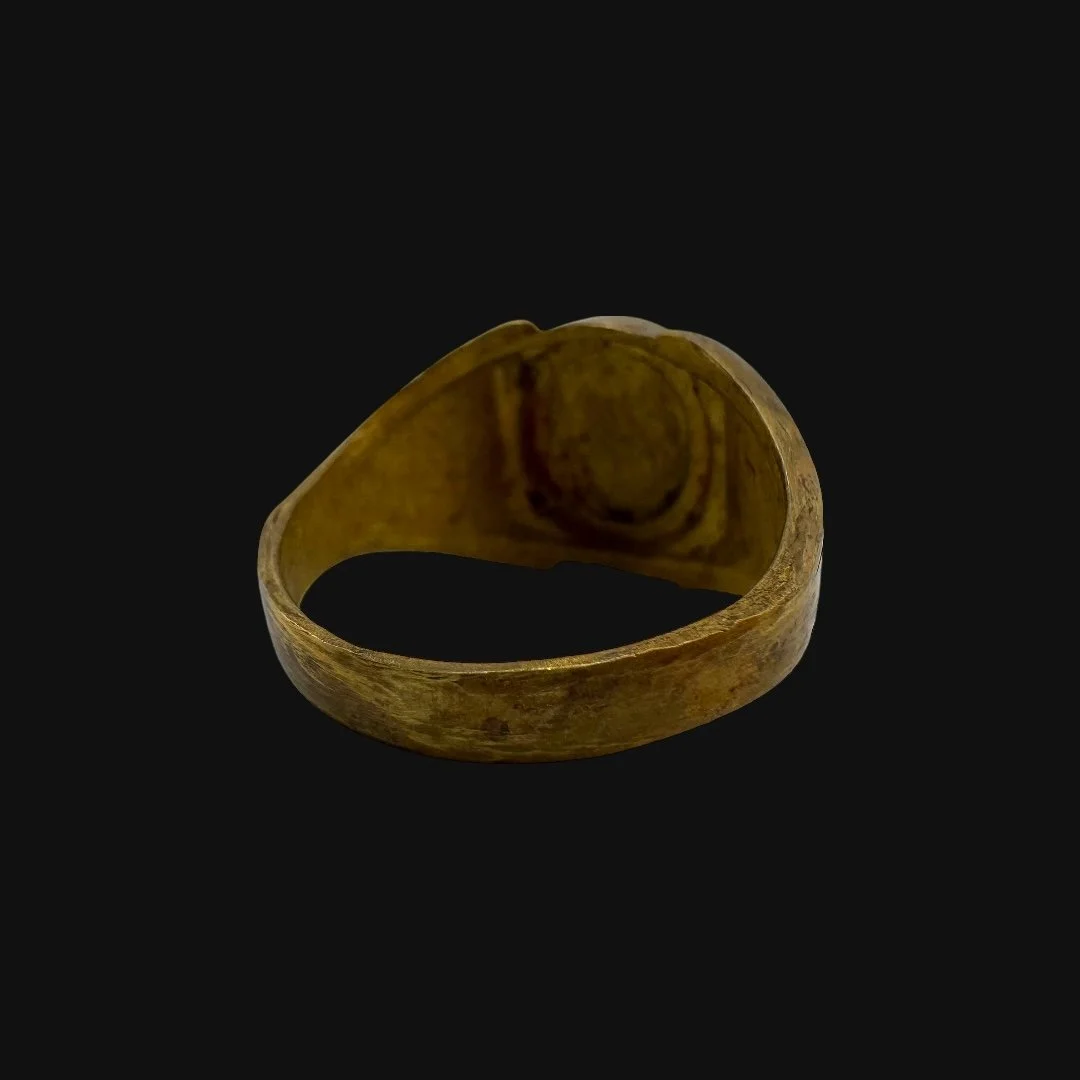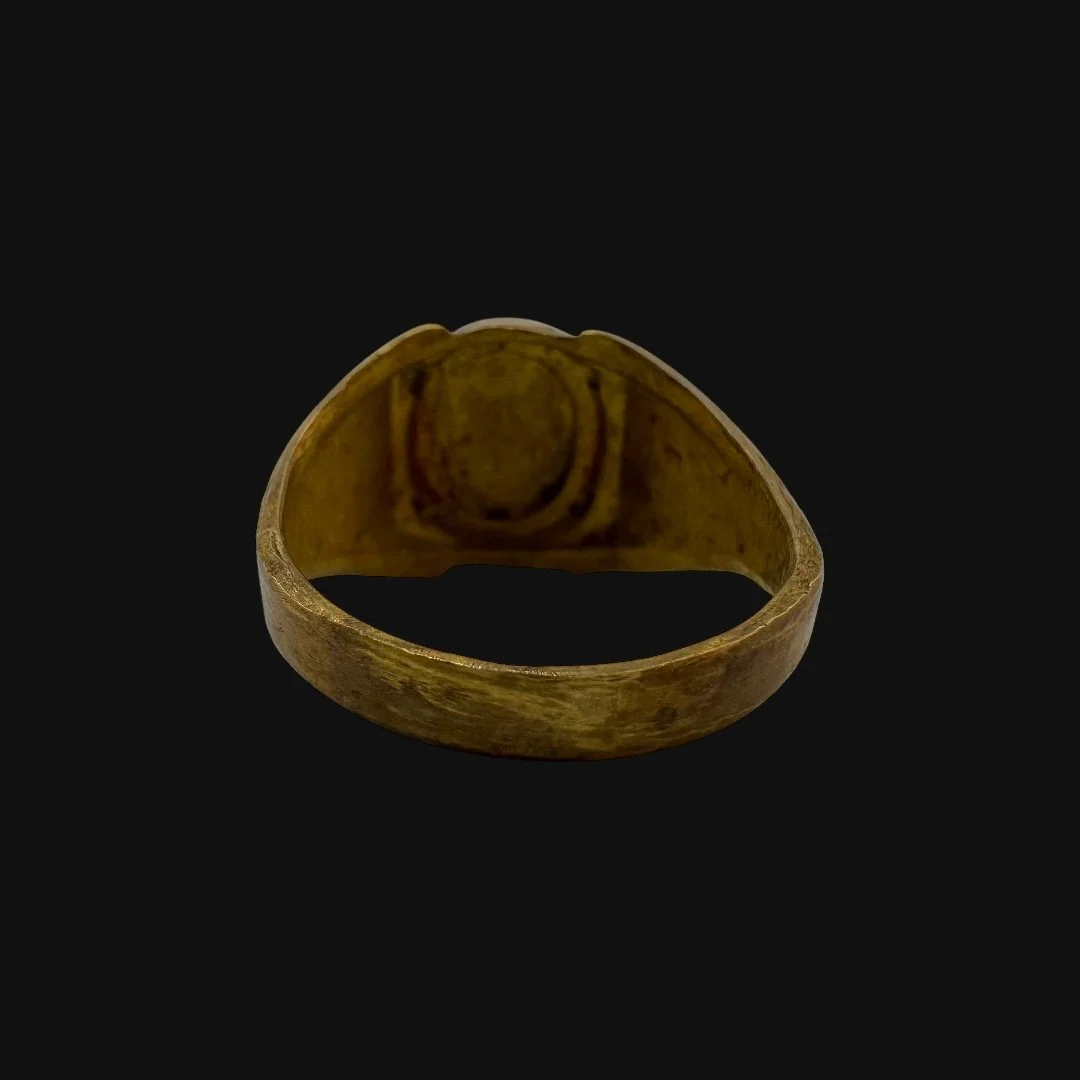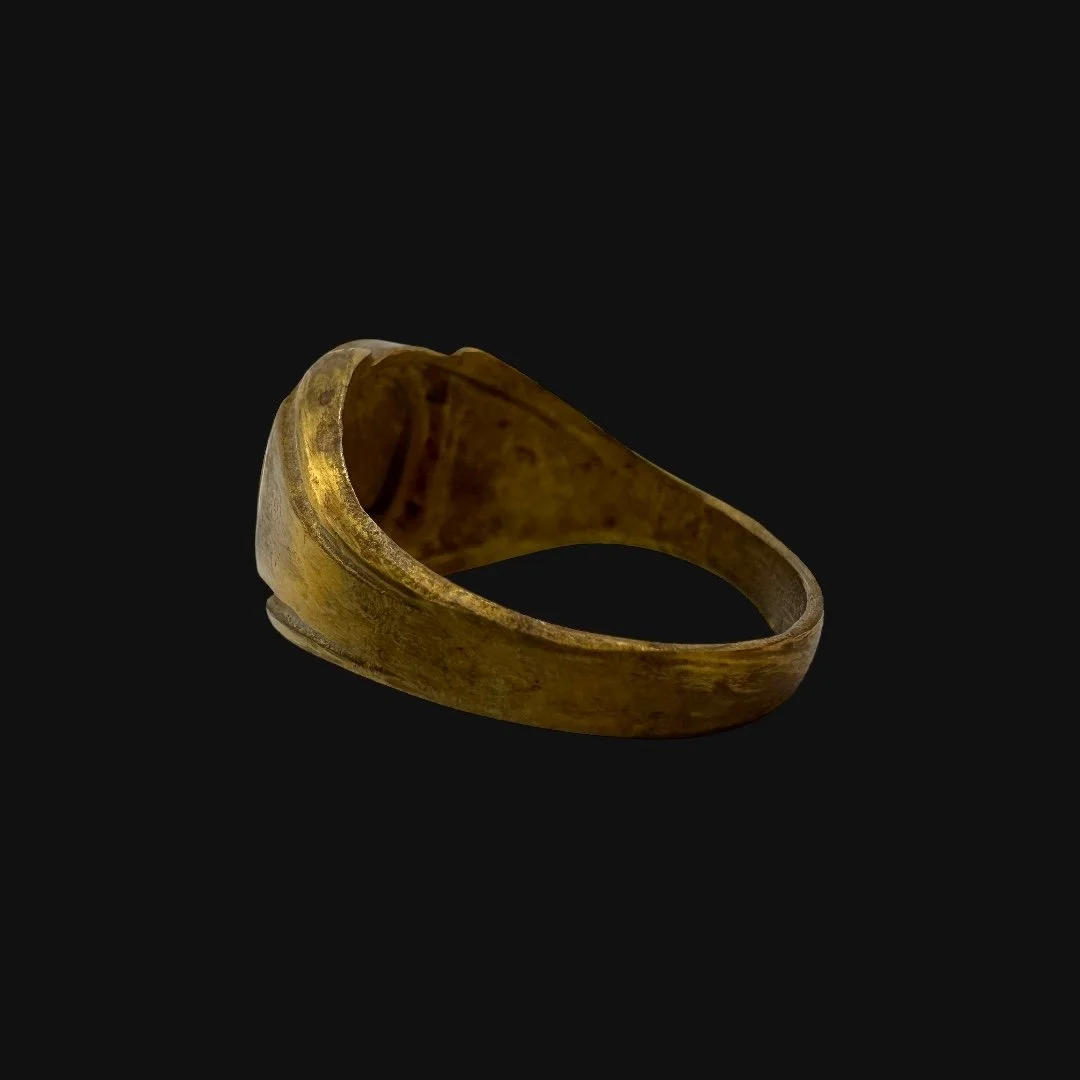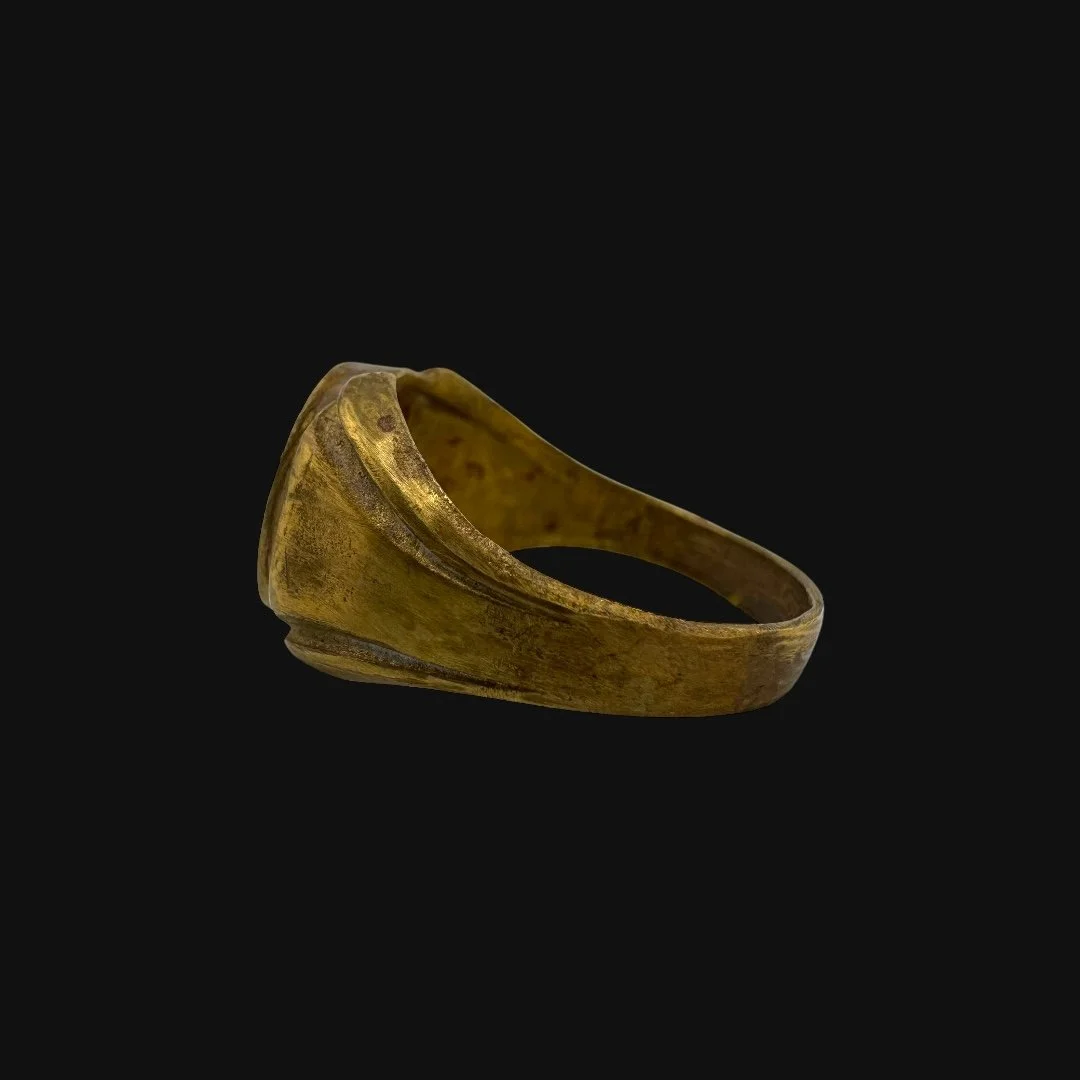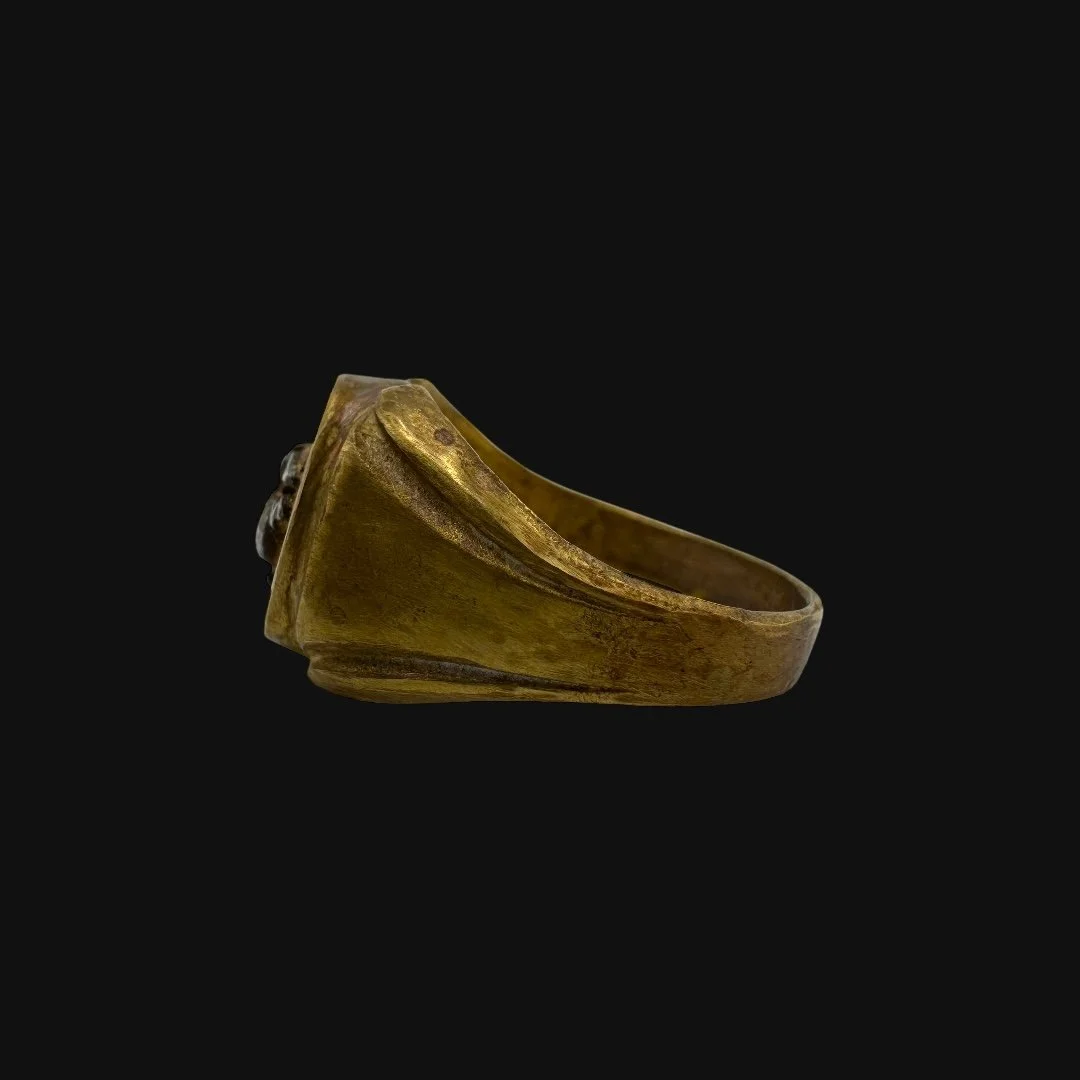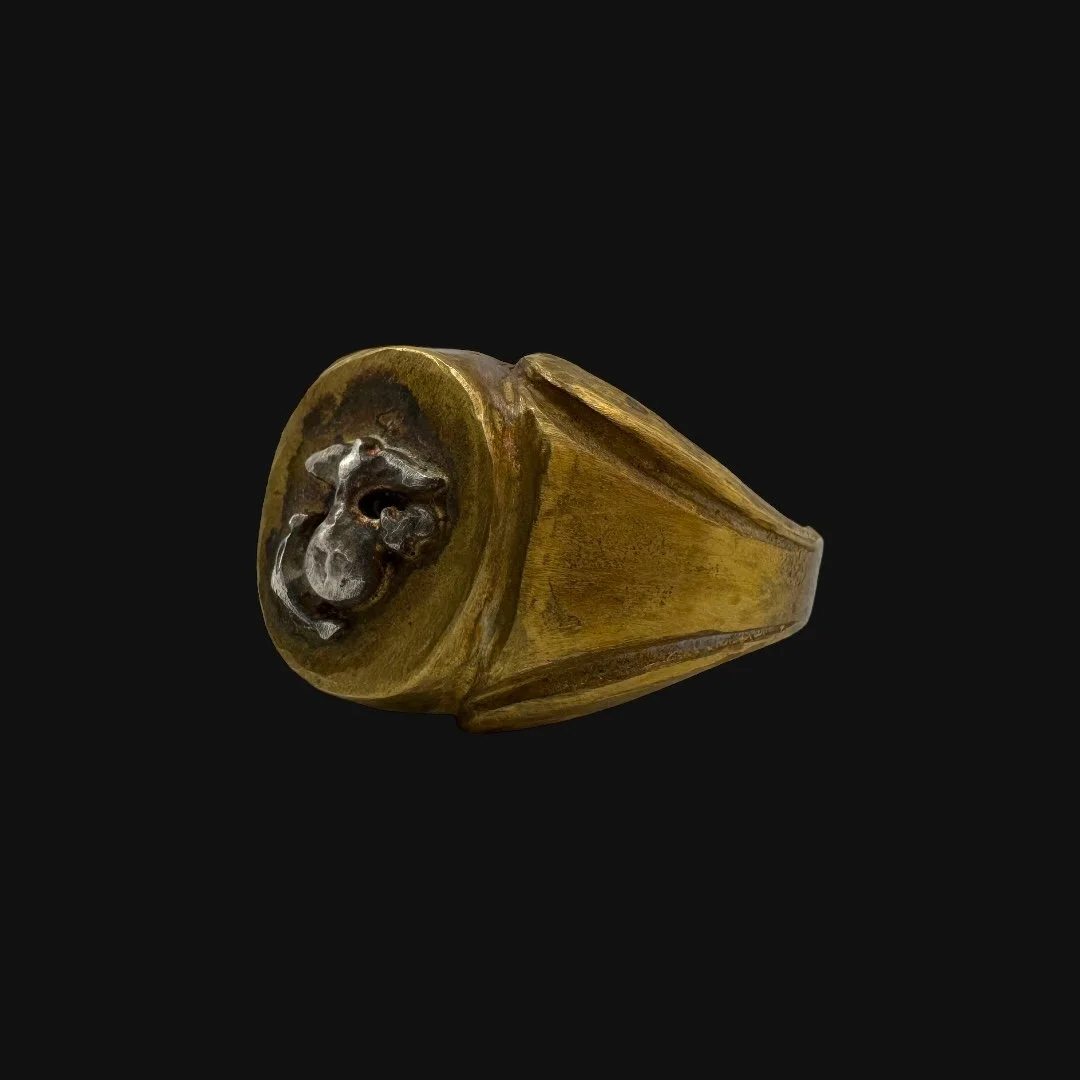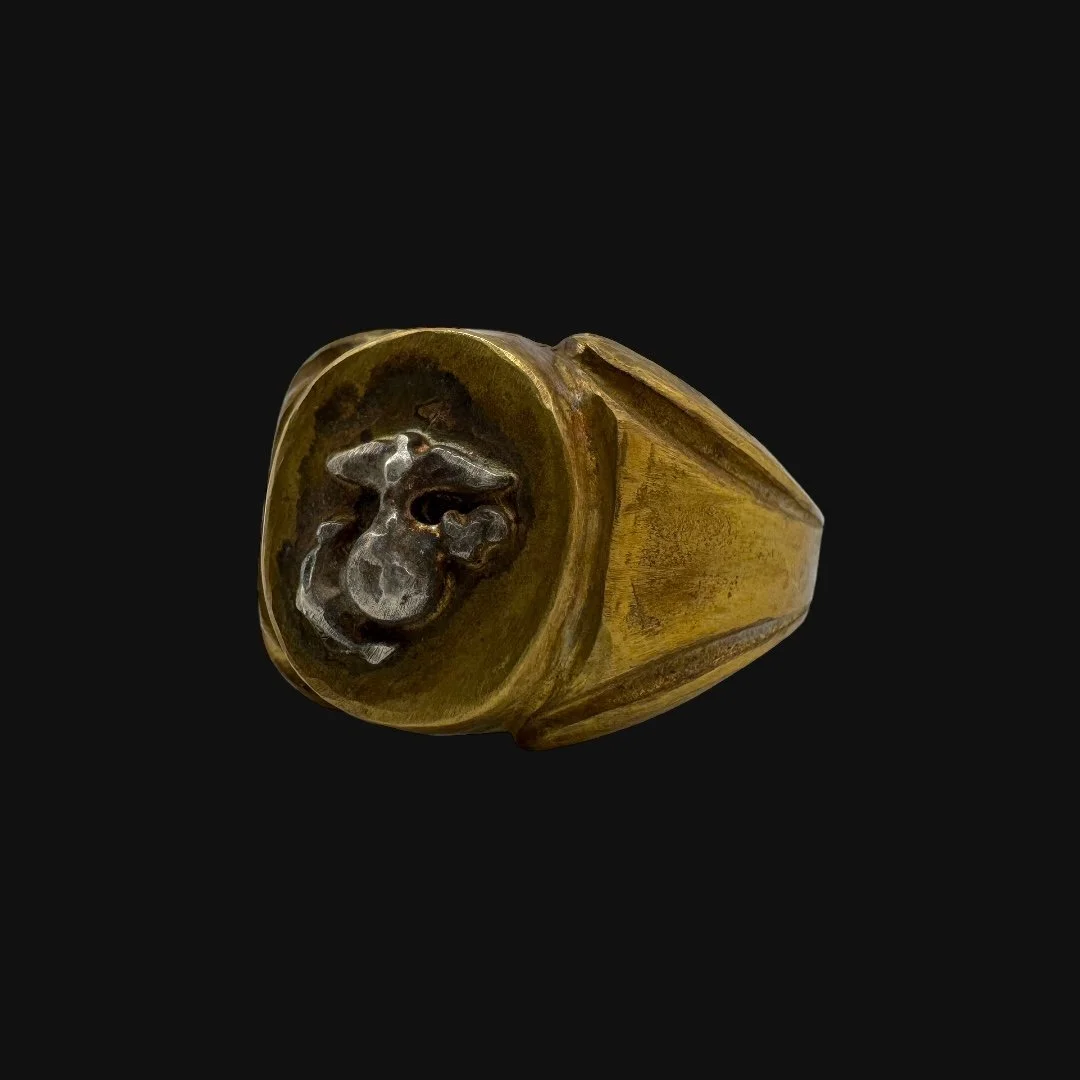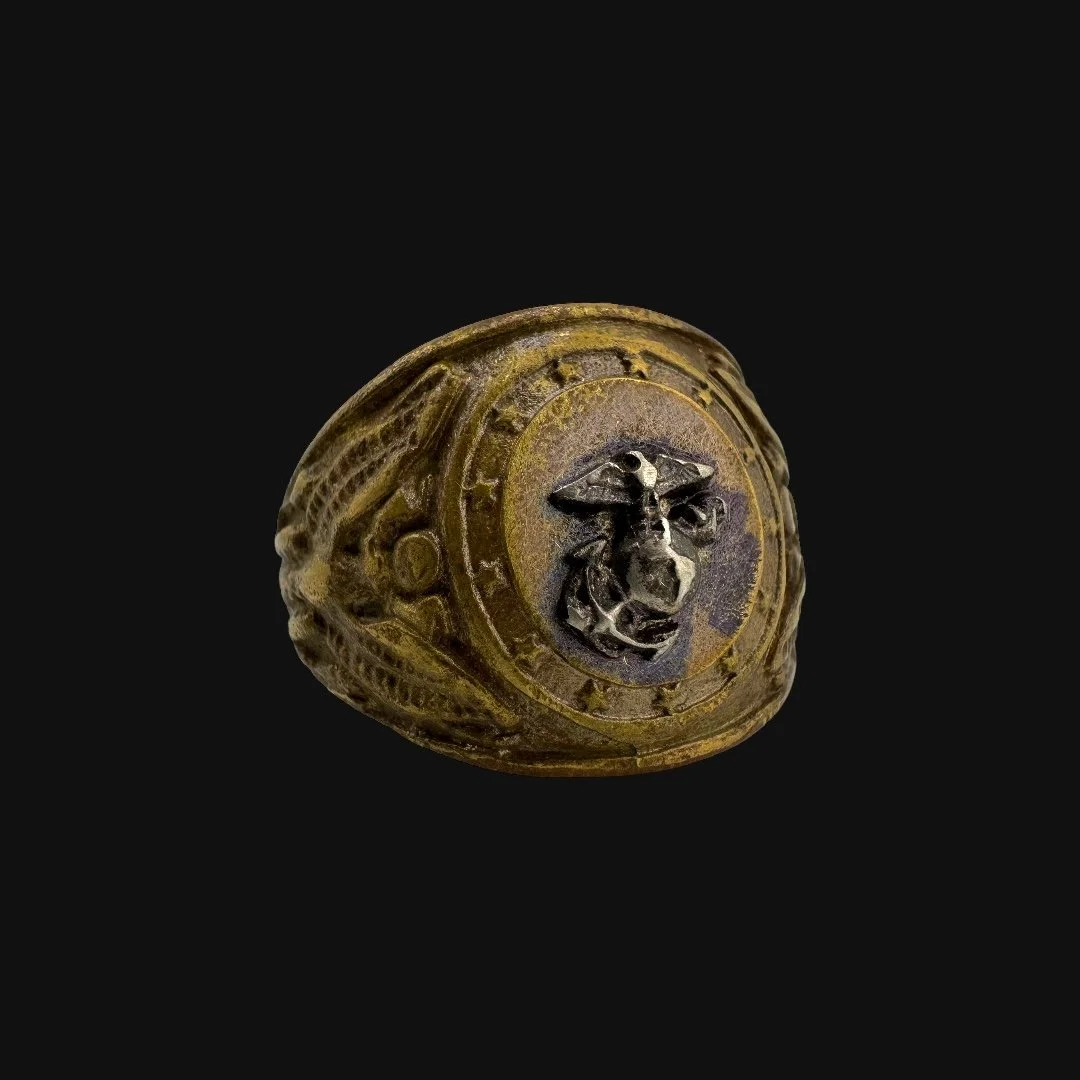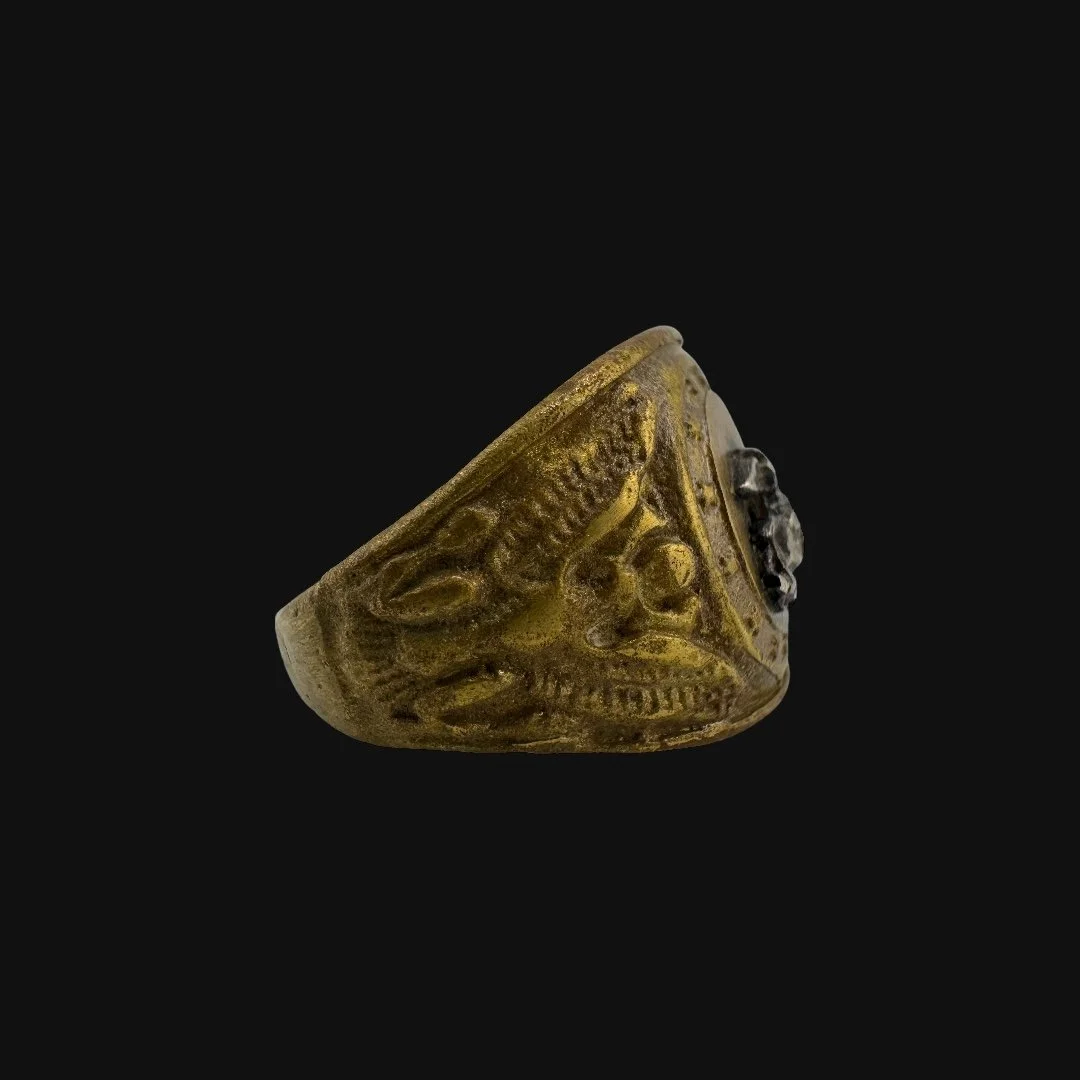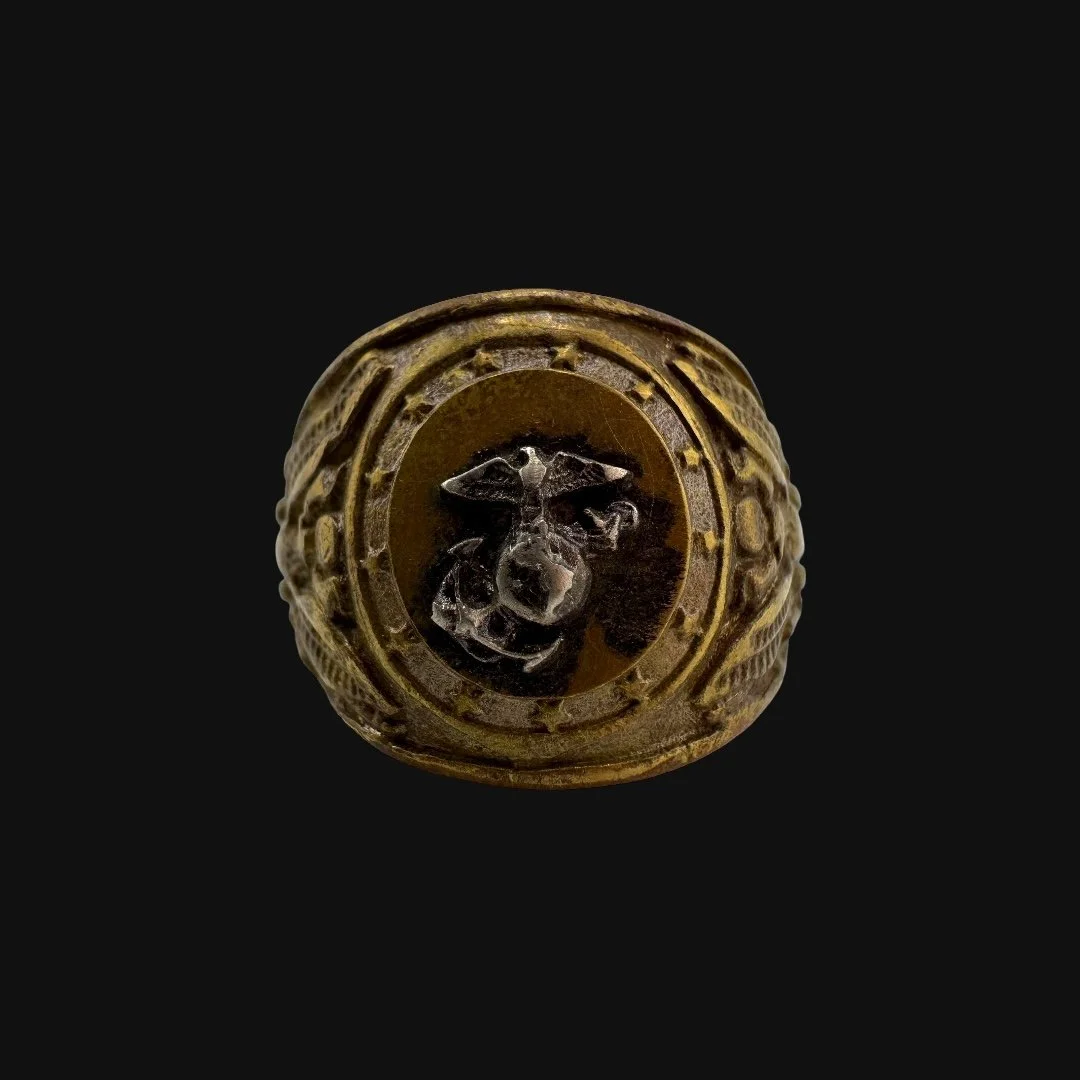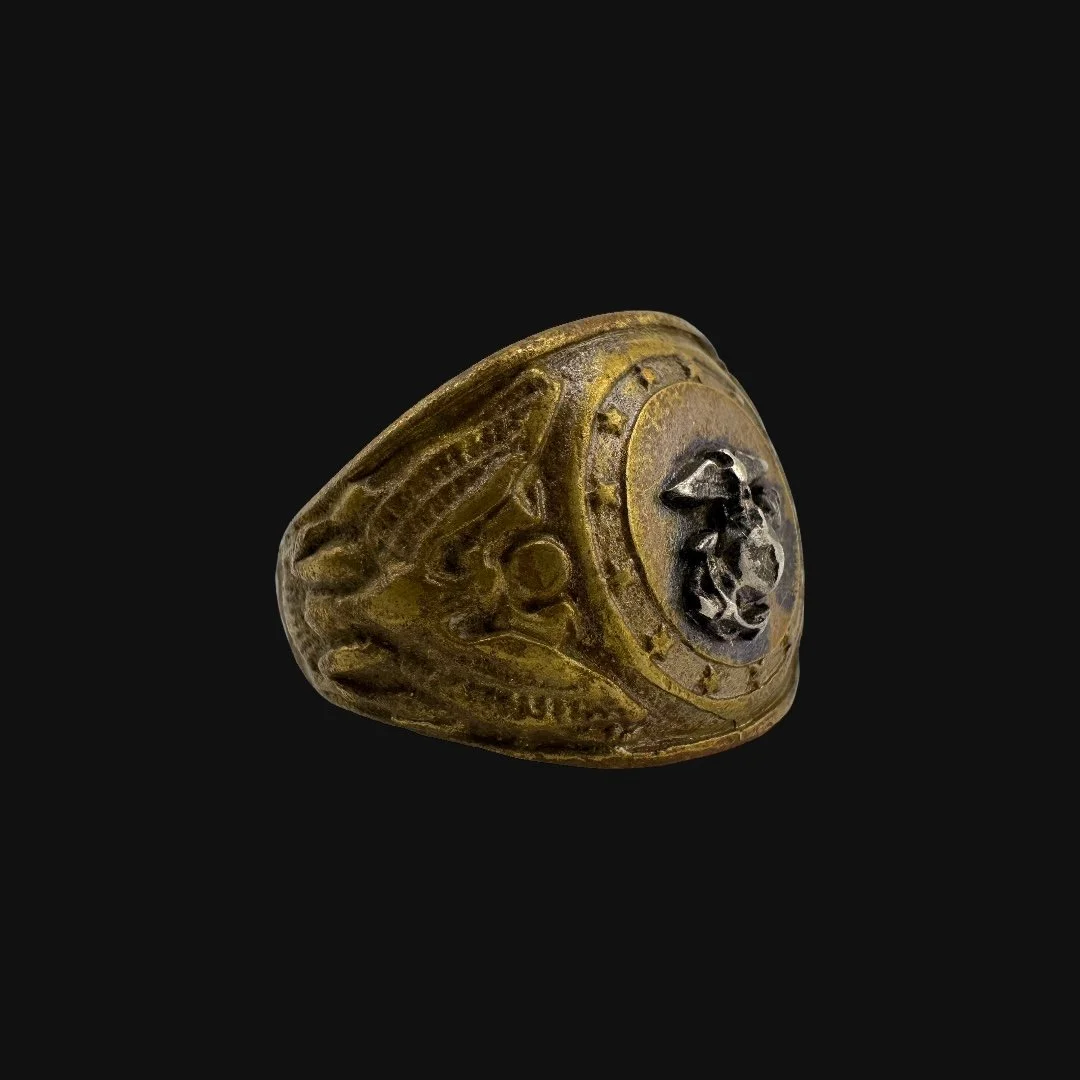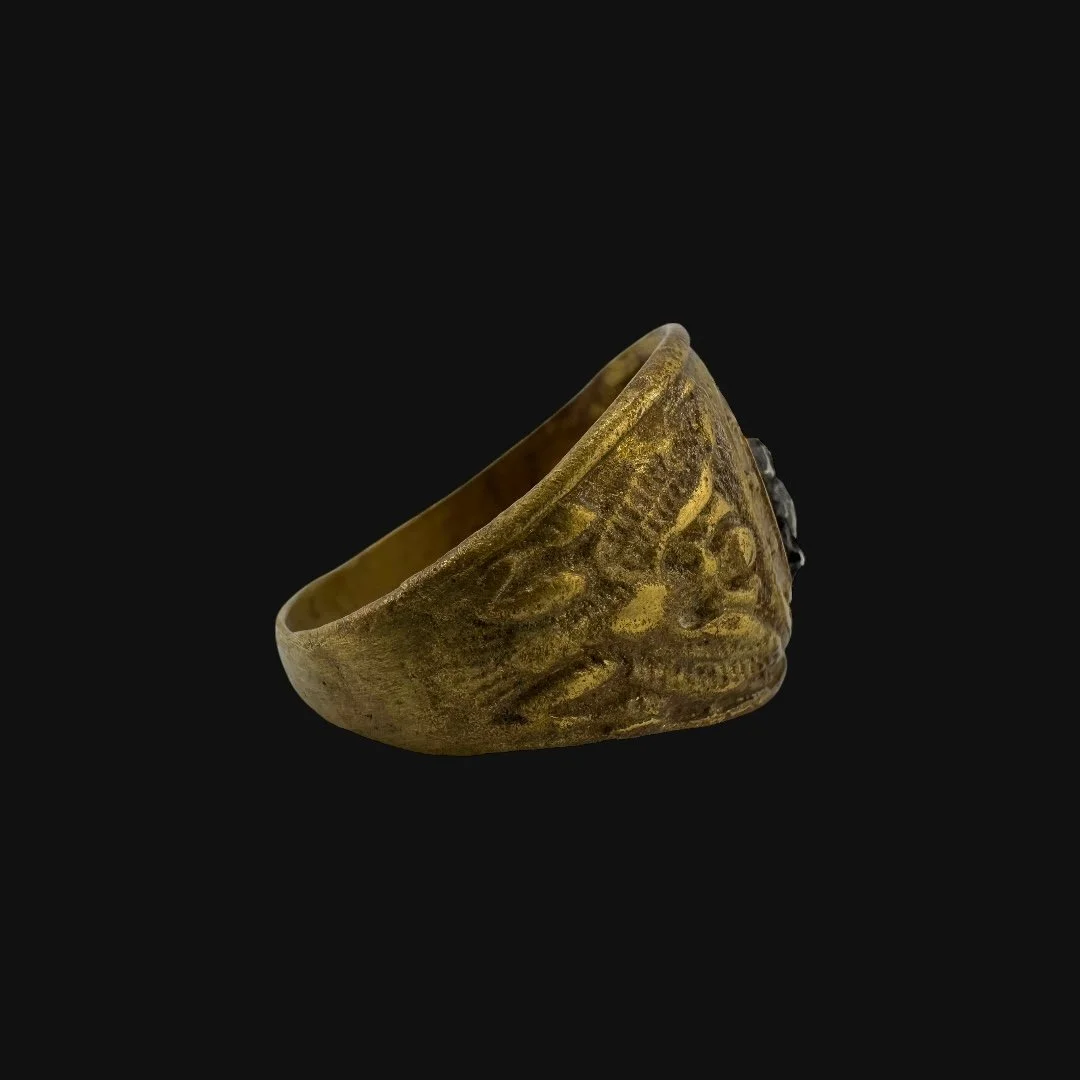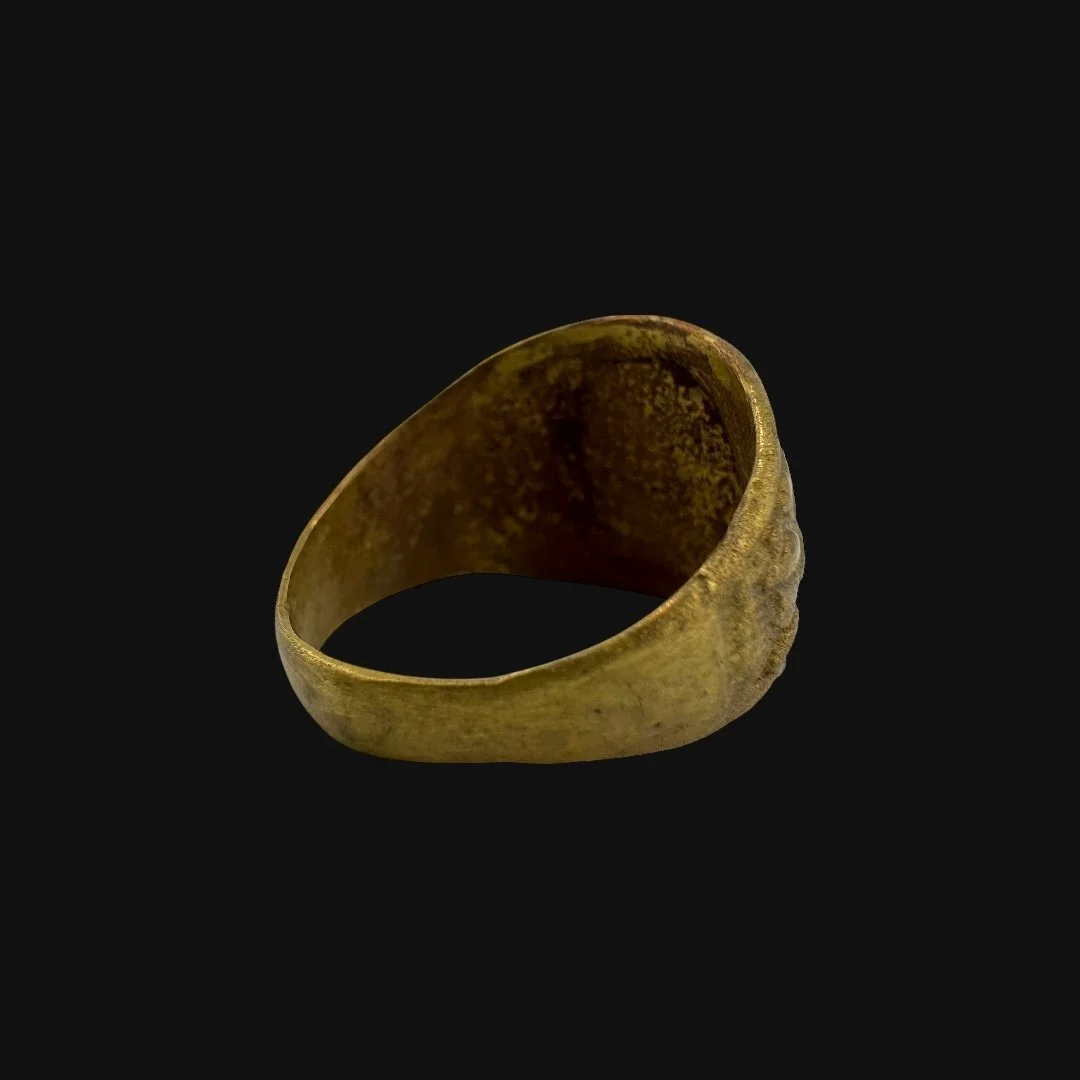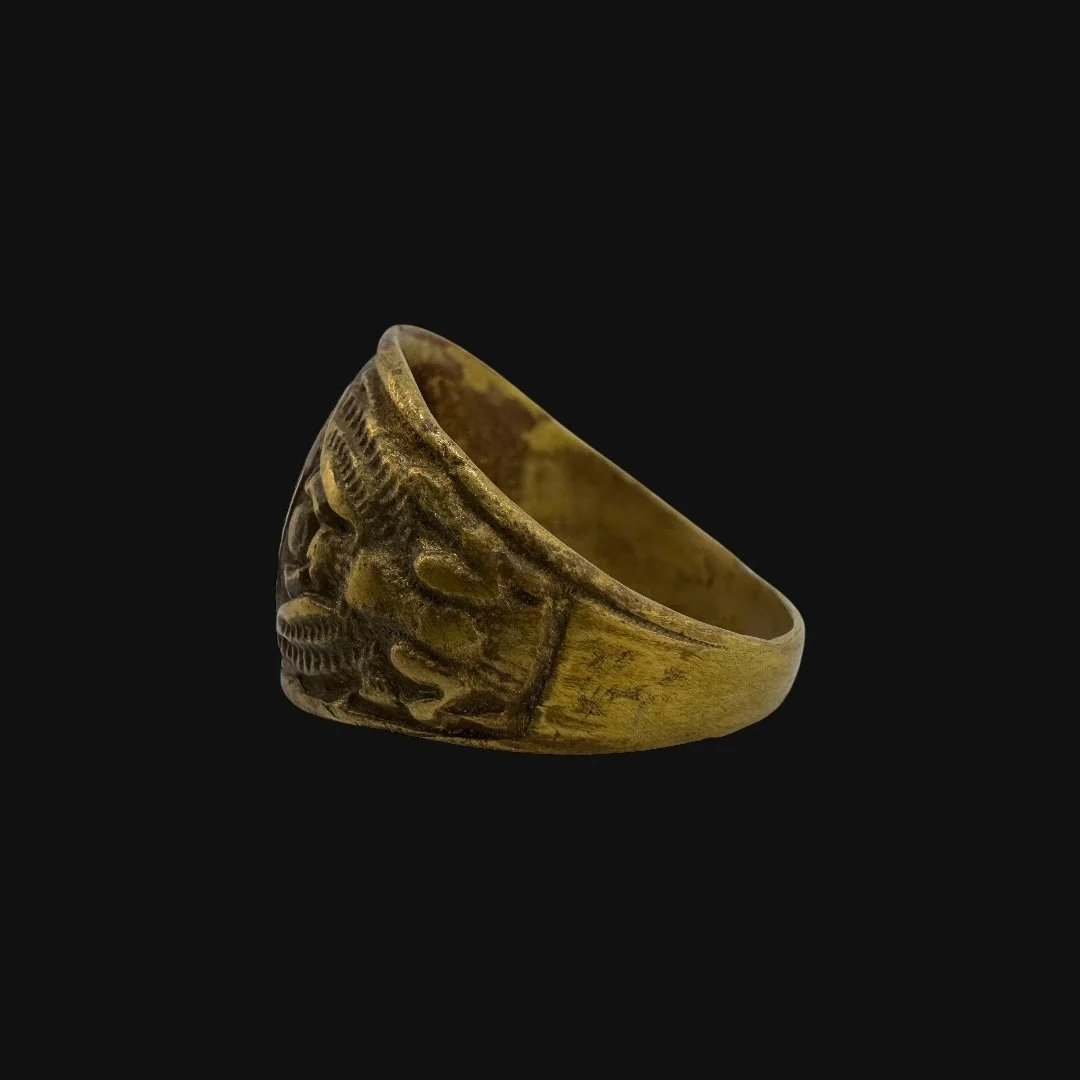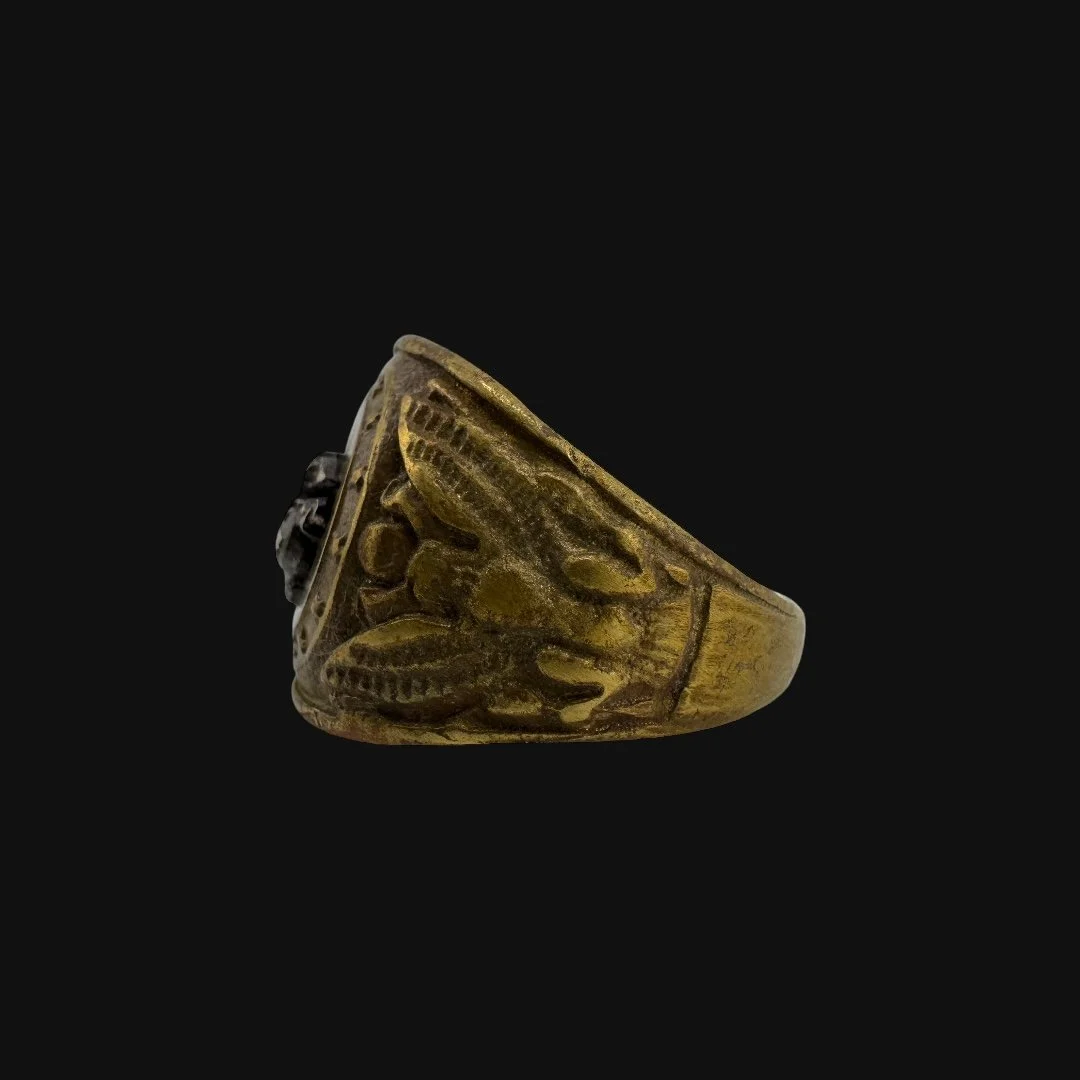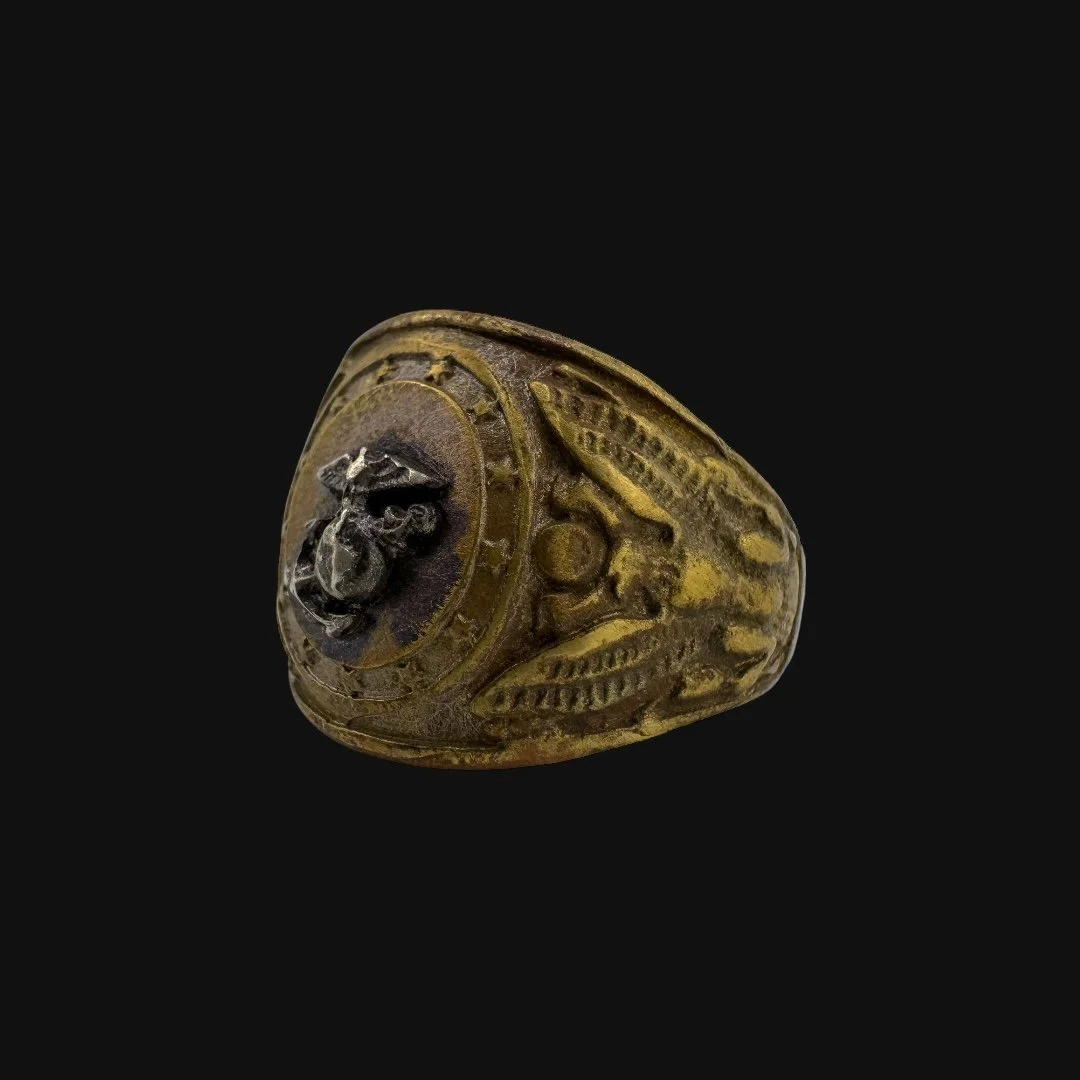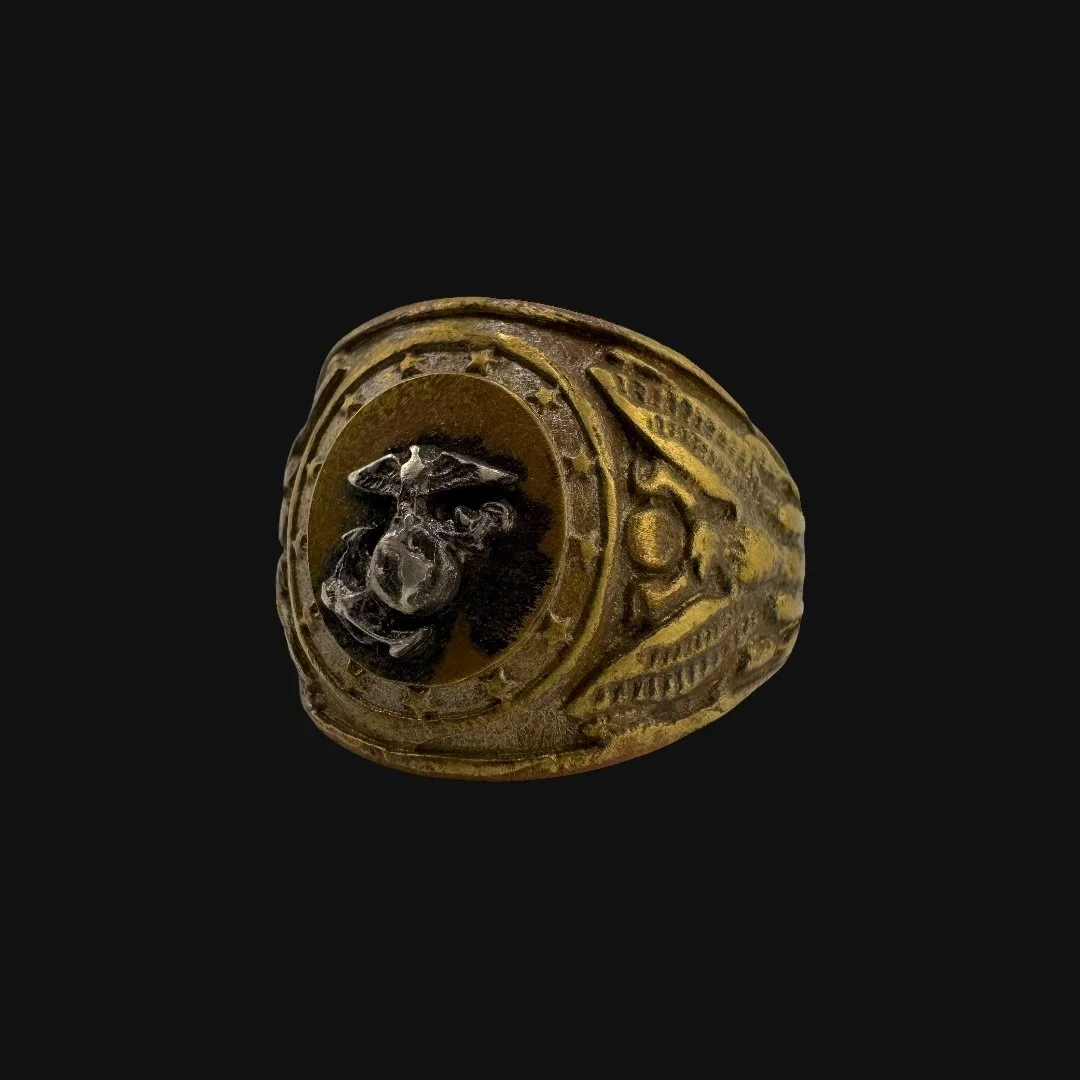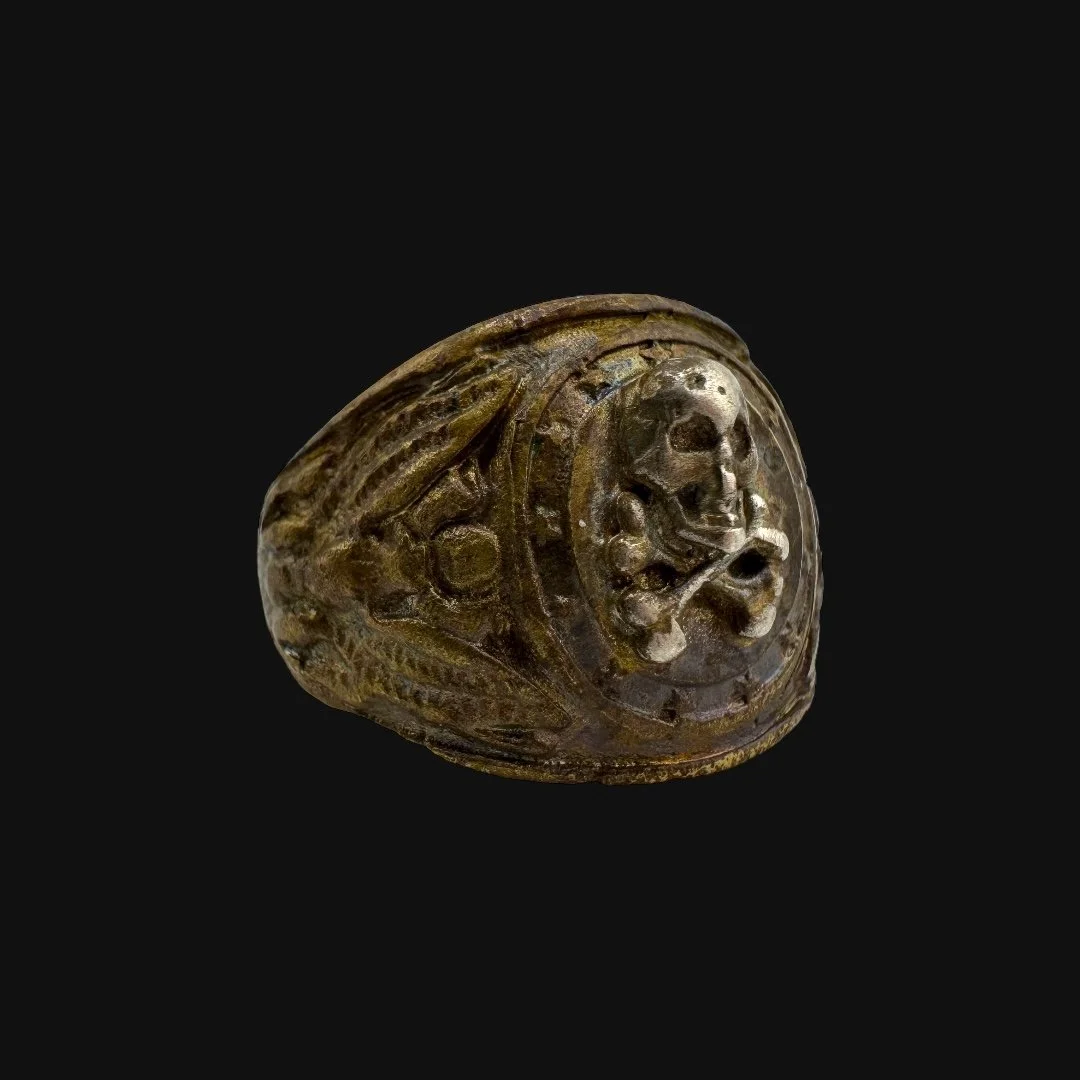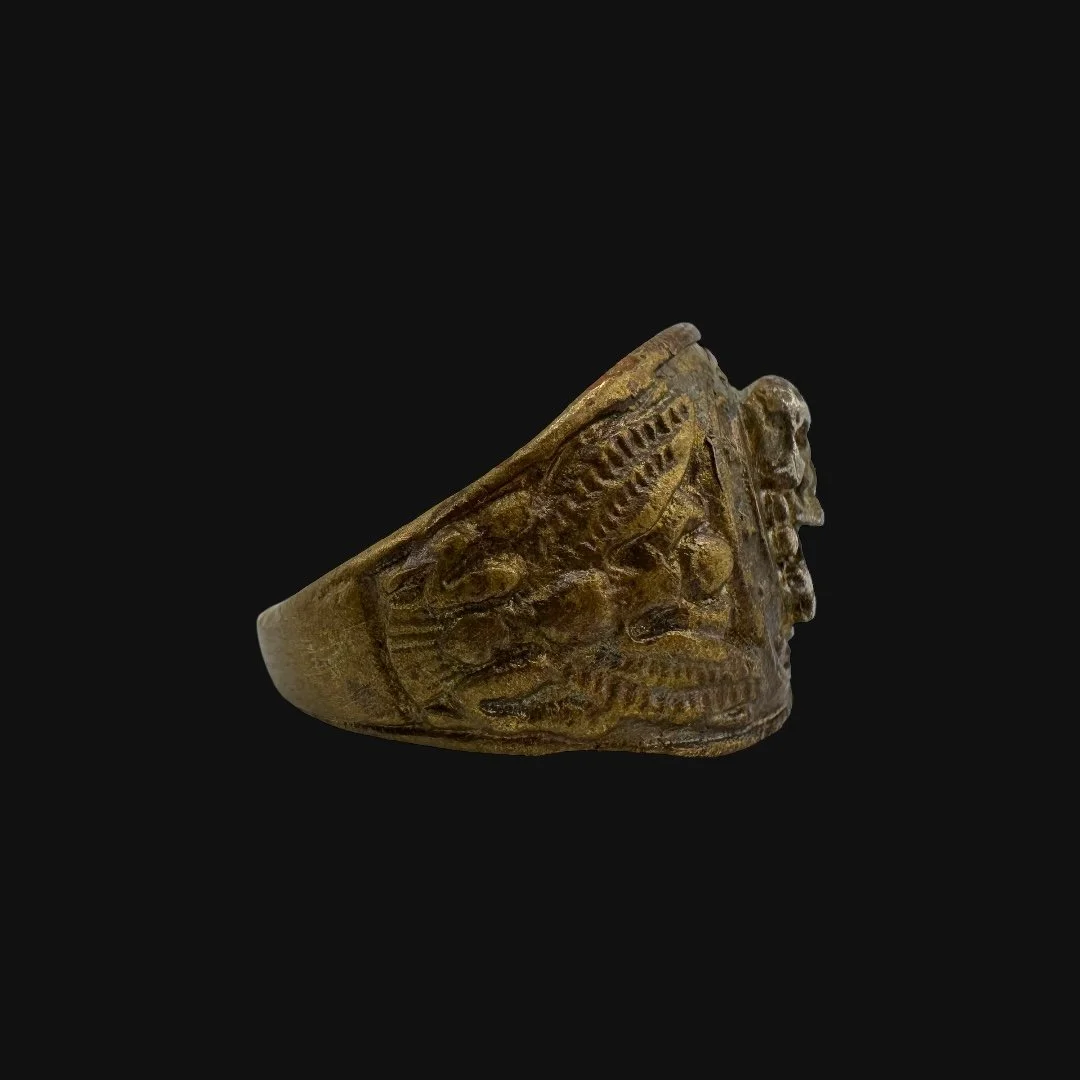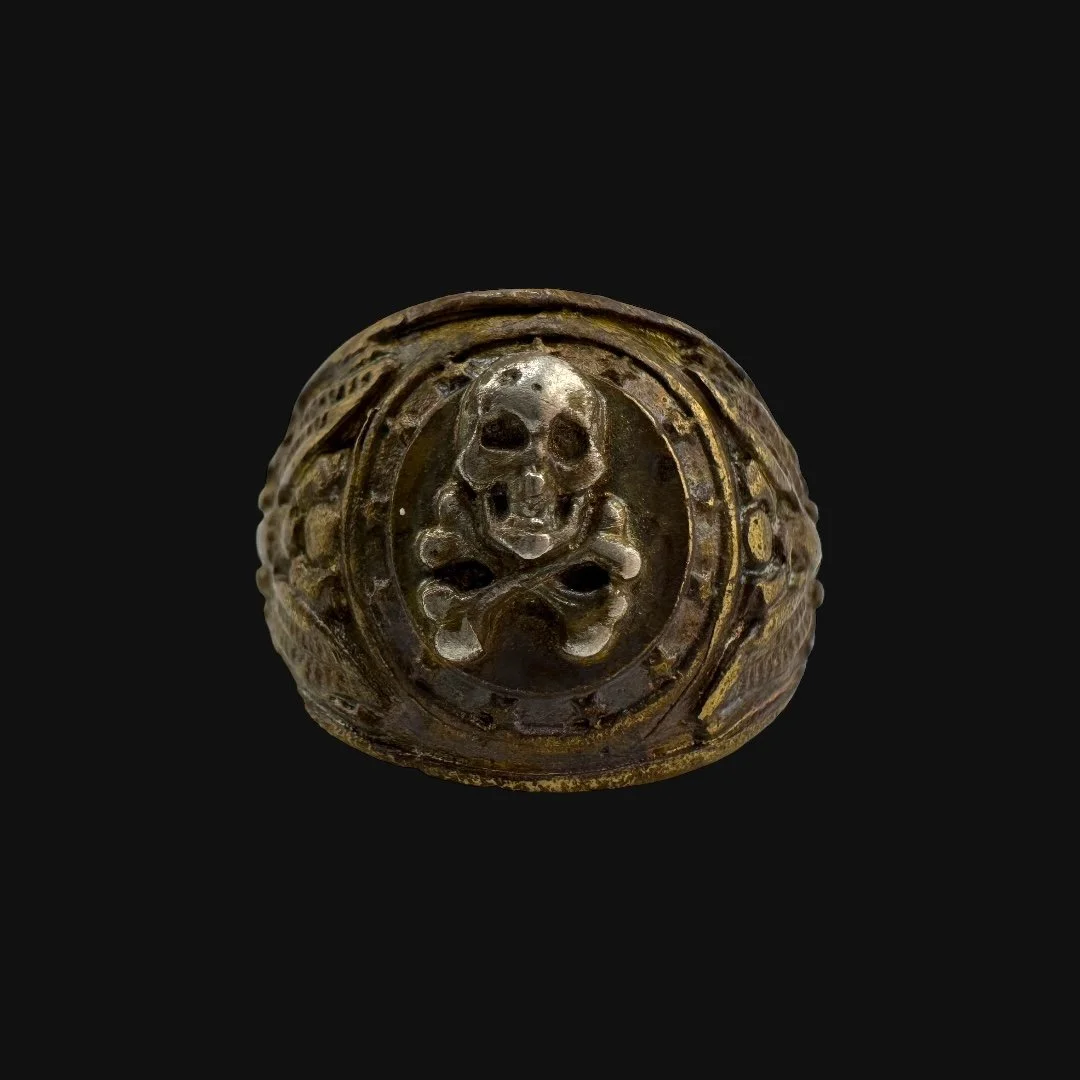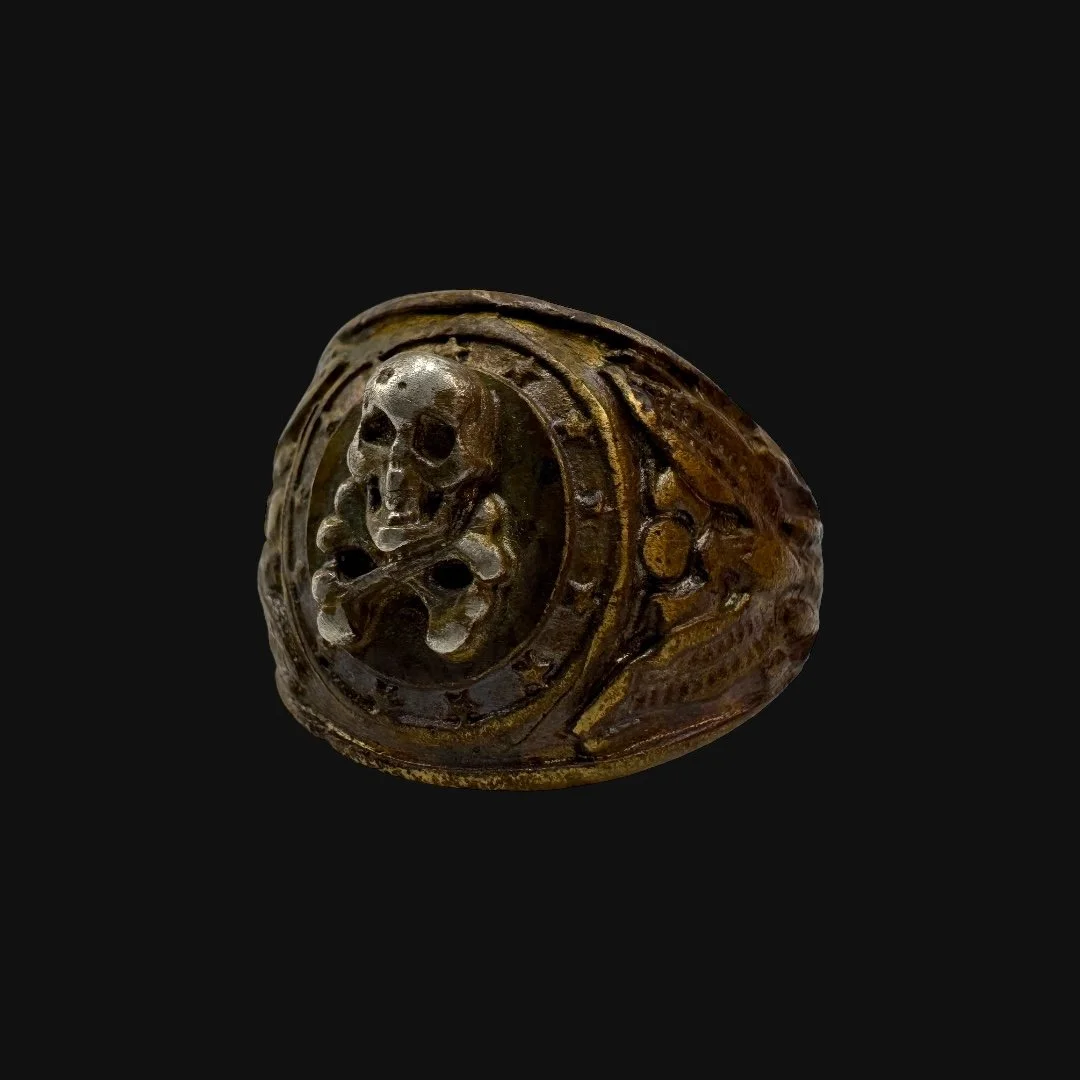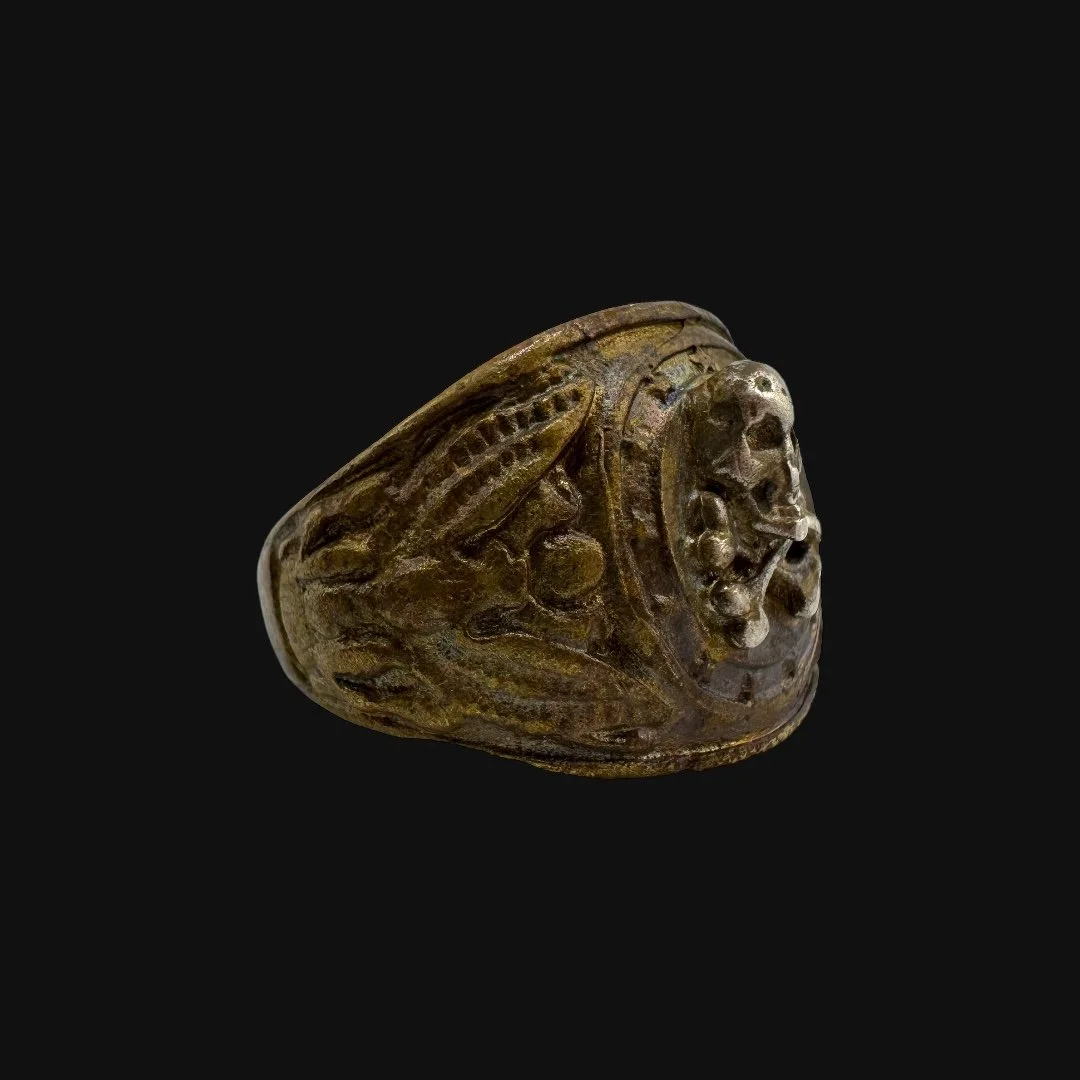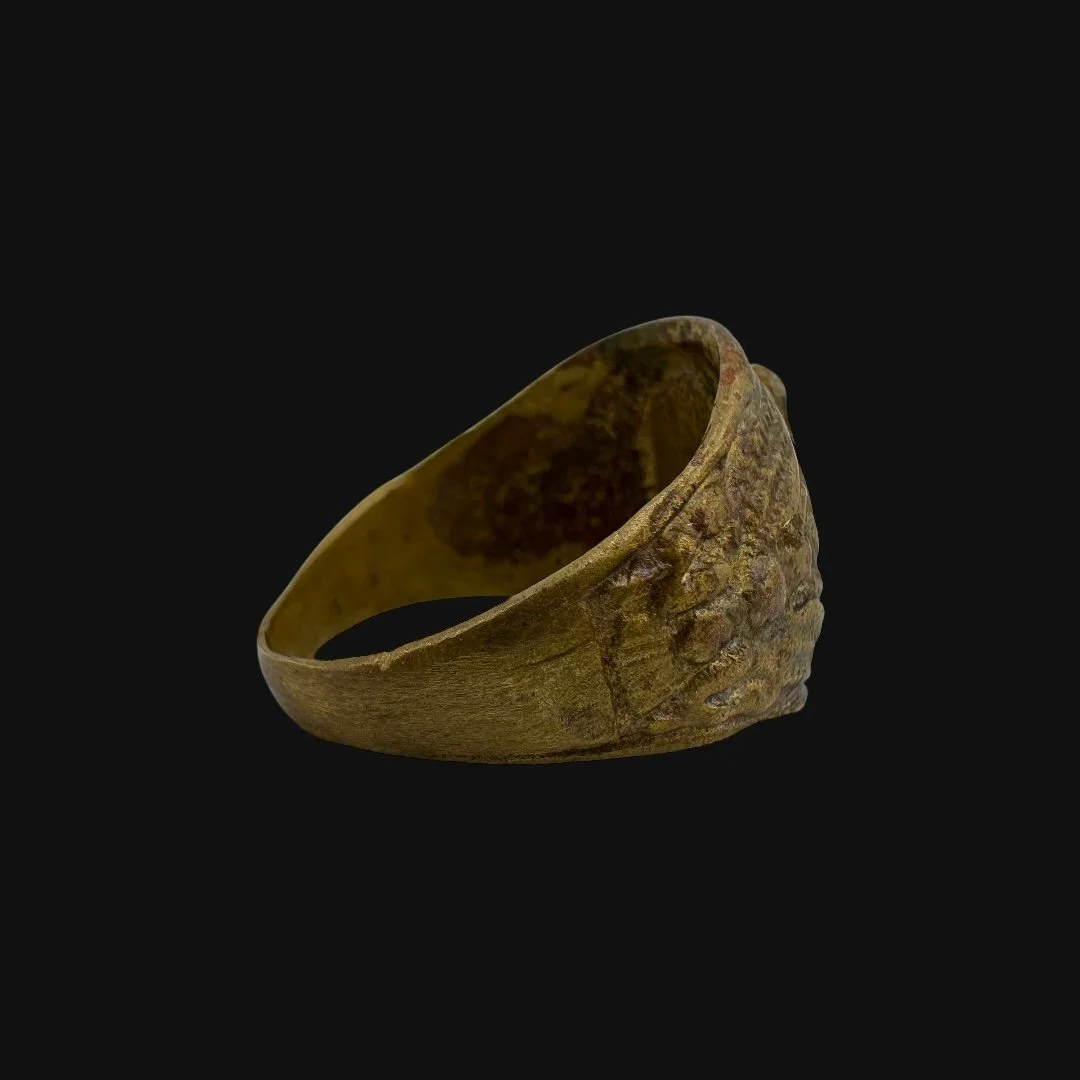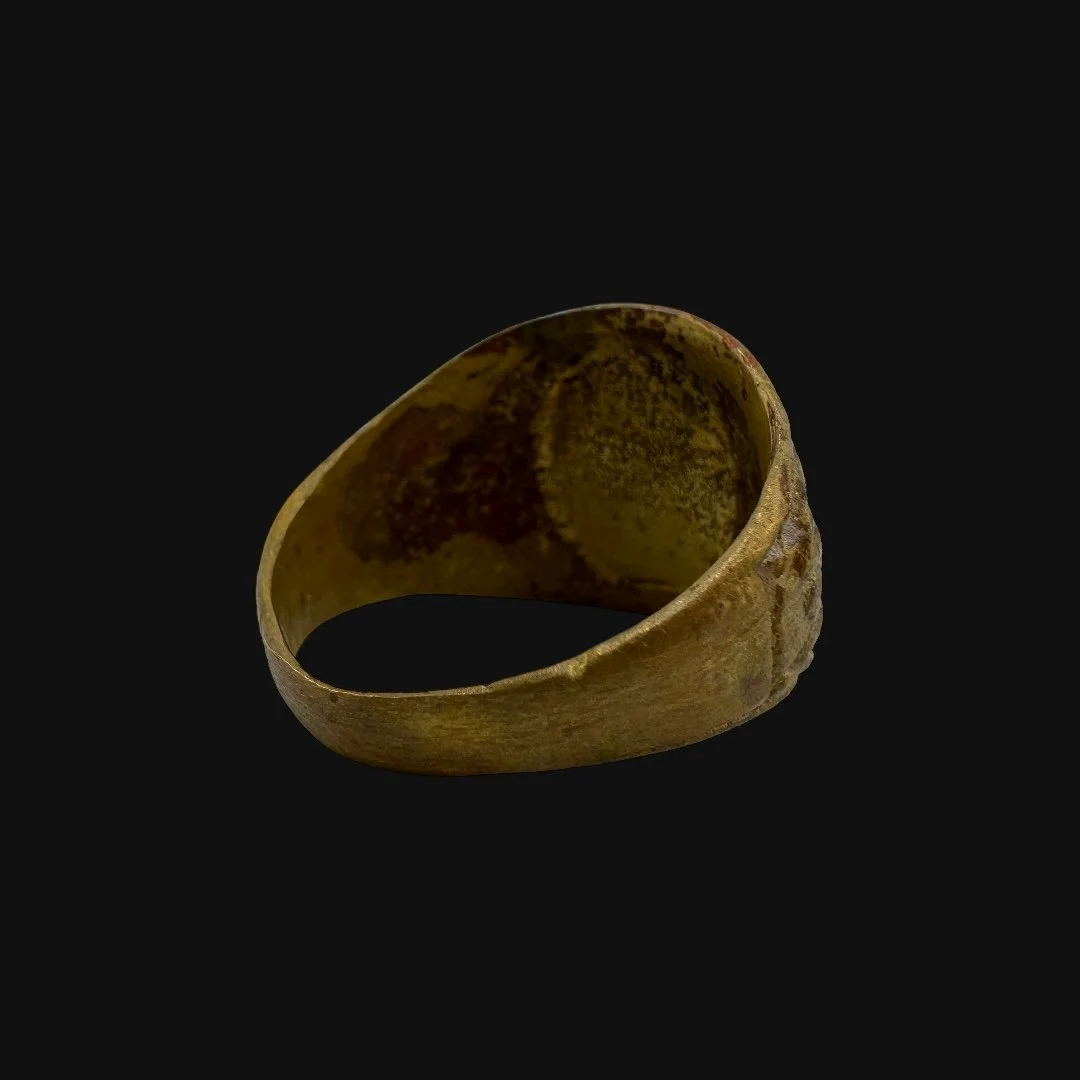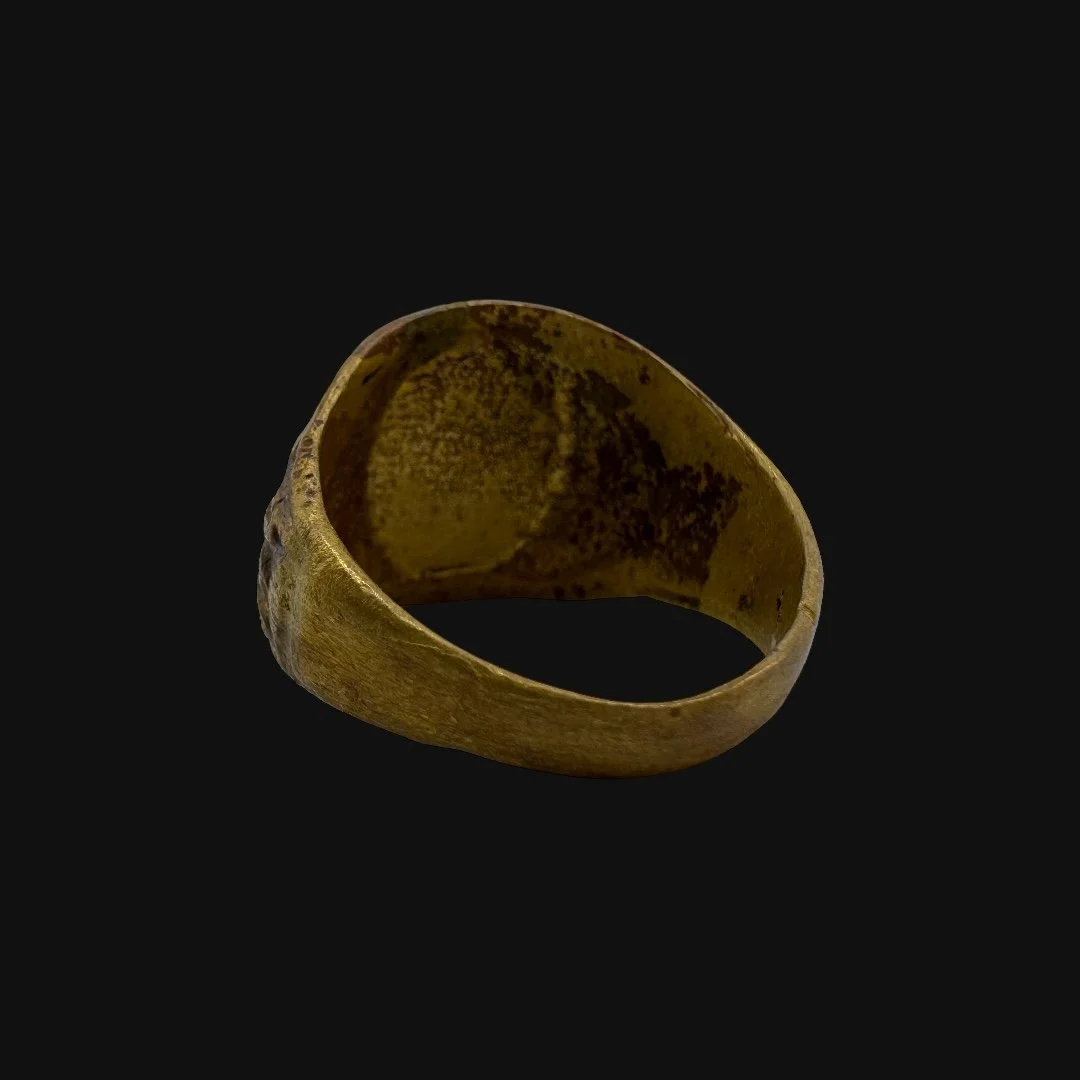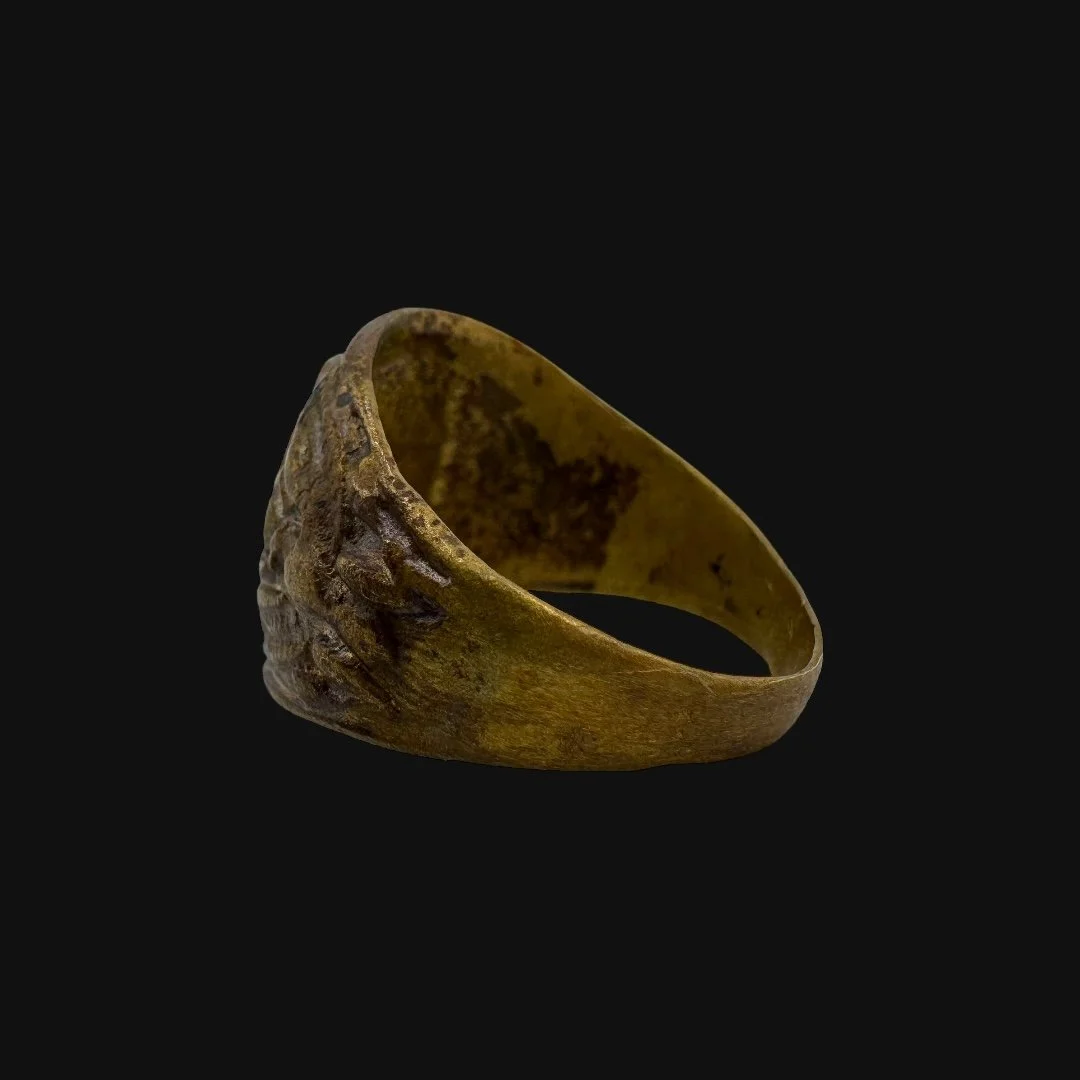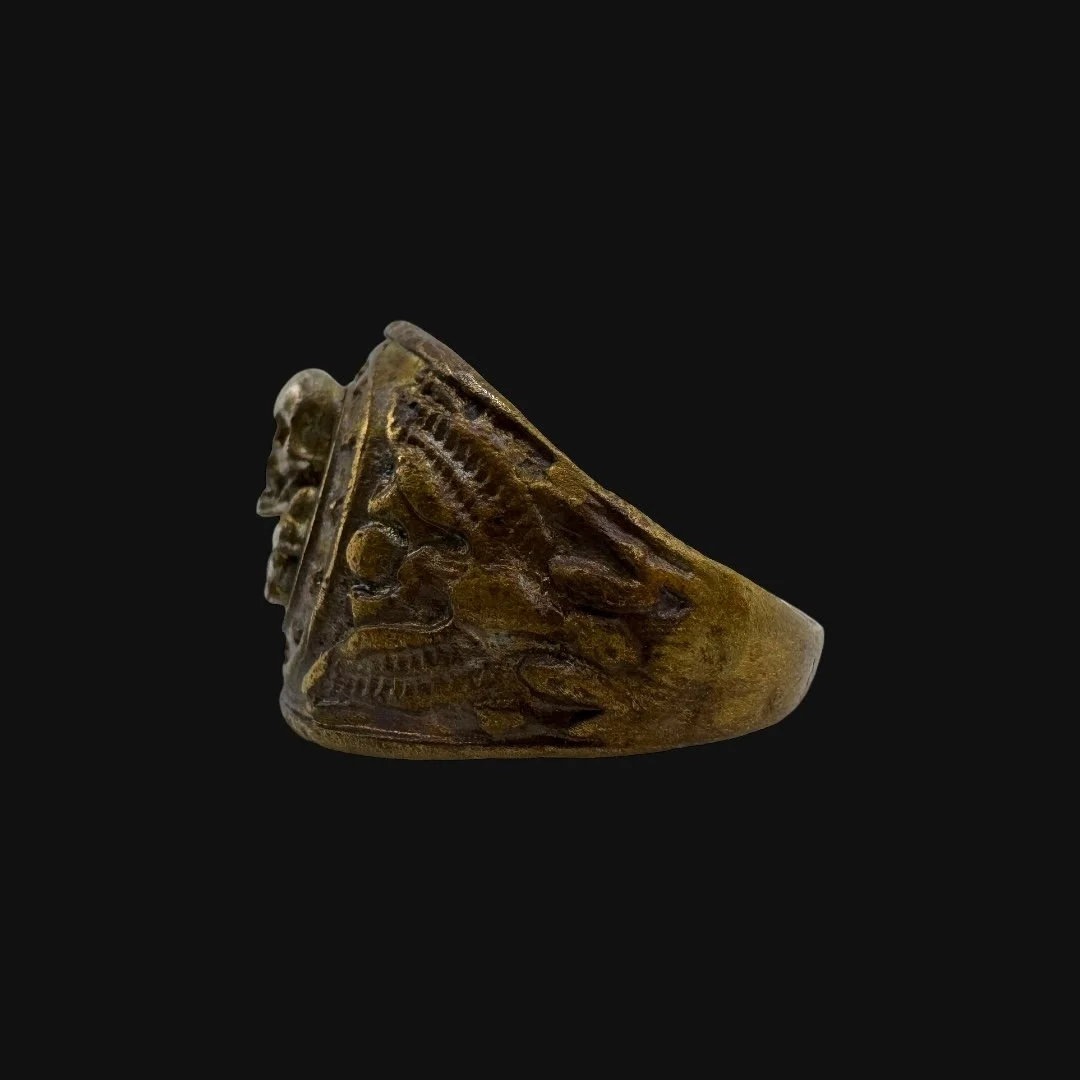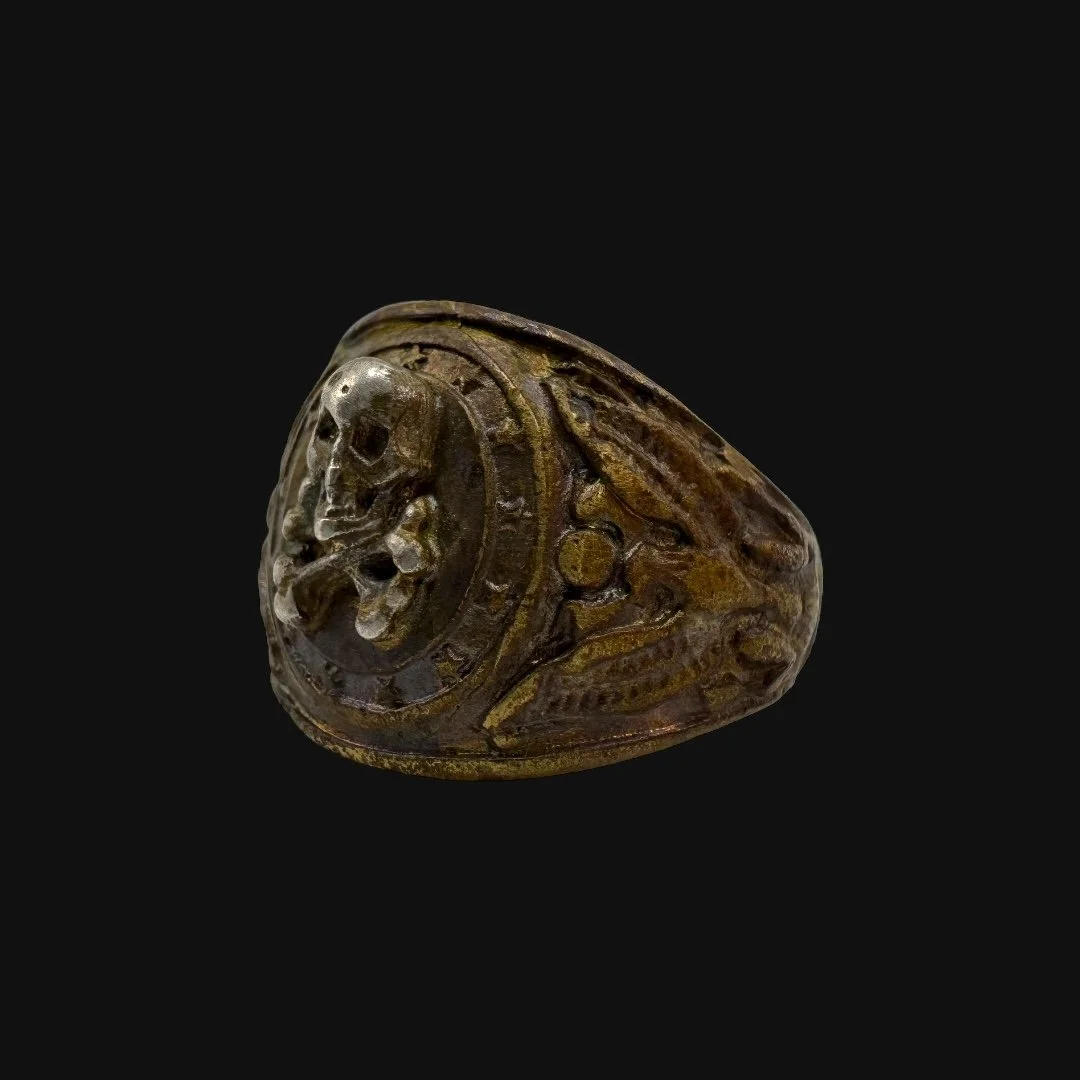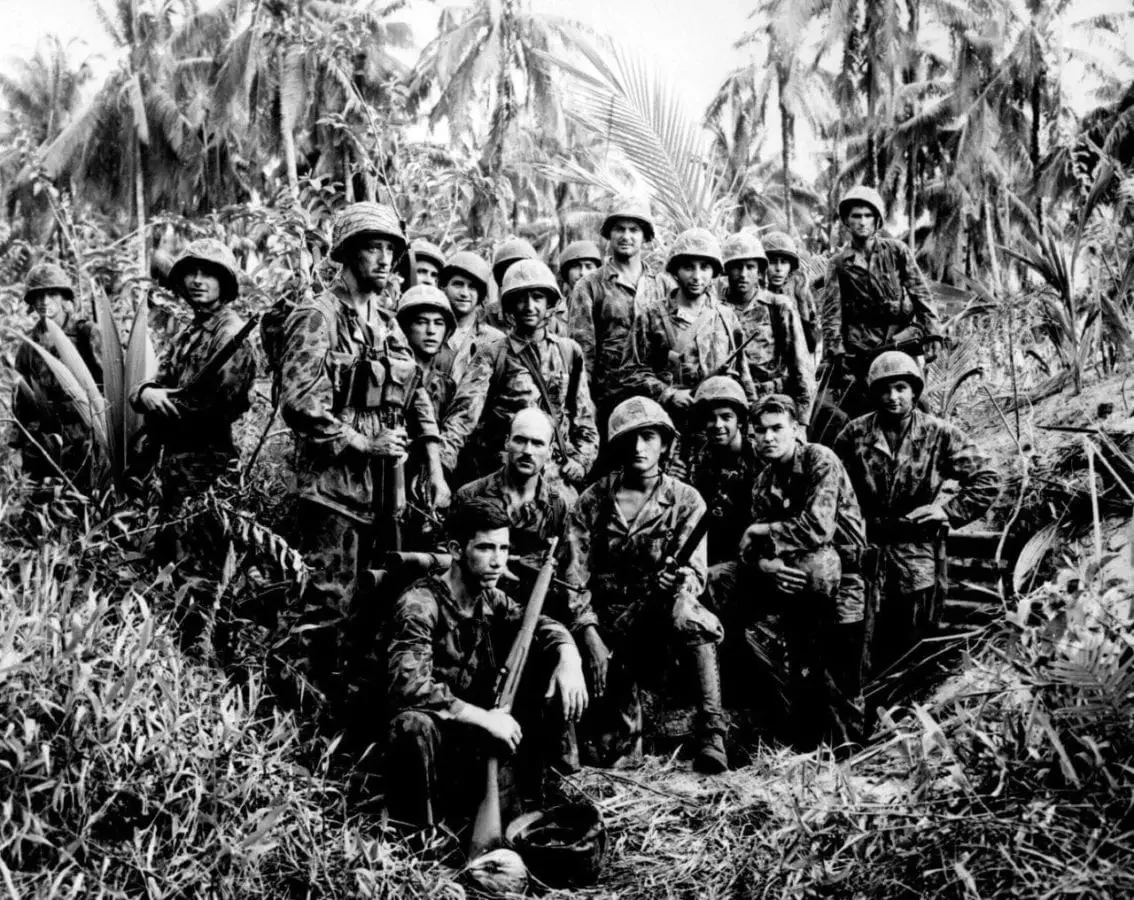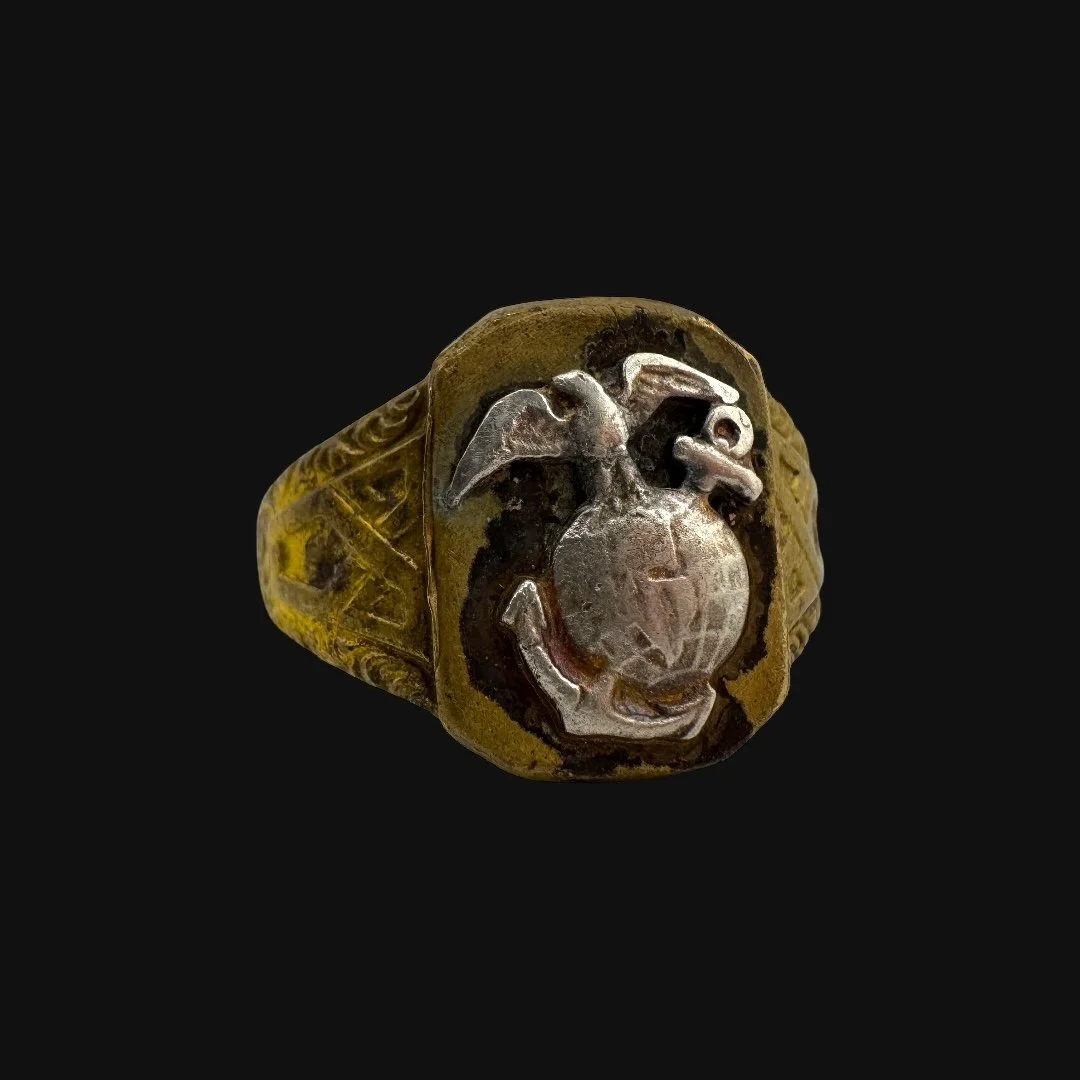 Image 1 of 14
Image 1 of 14

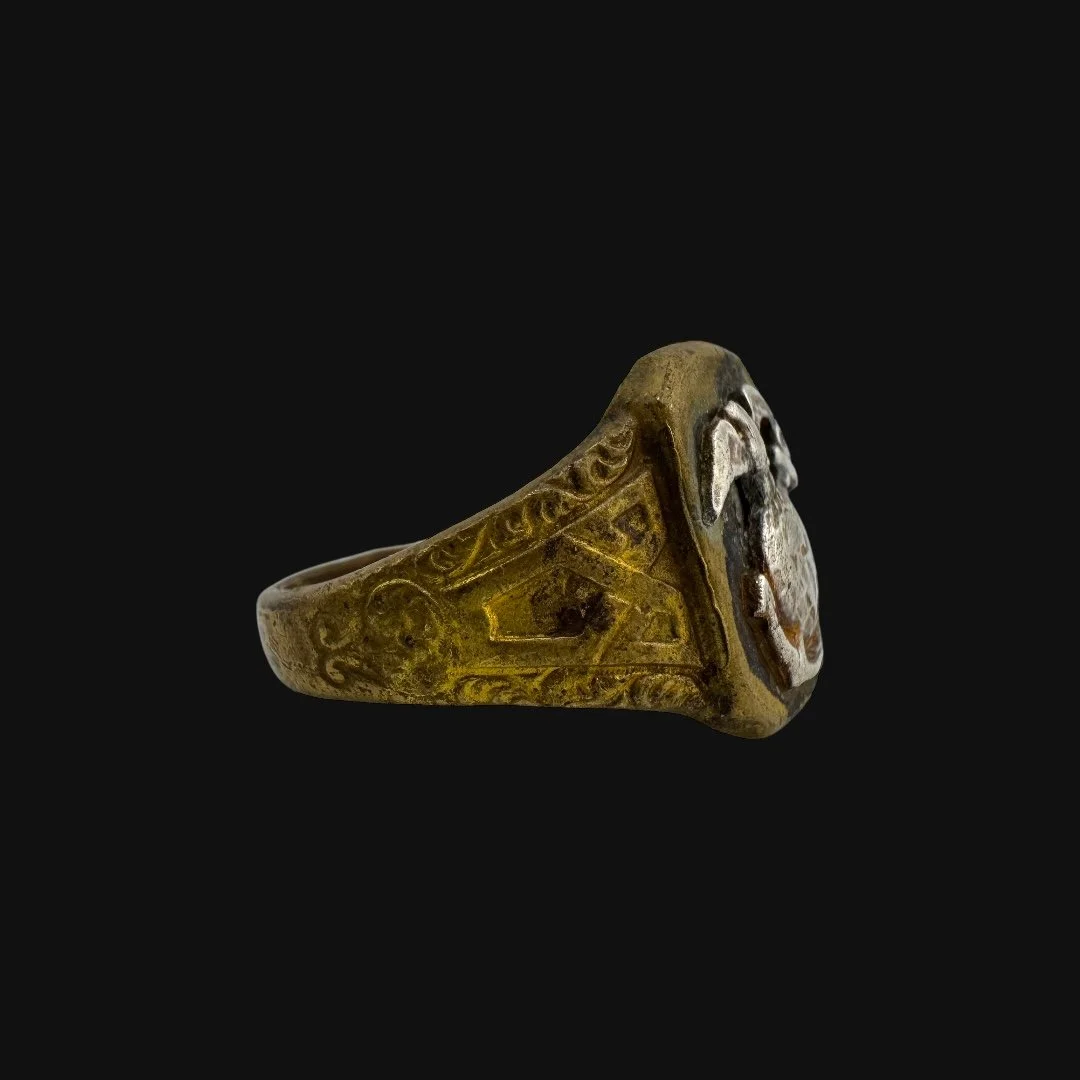 Image 2 of 14
Image 2 of 14

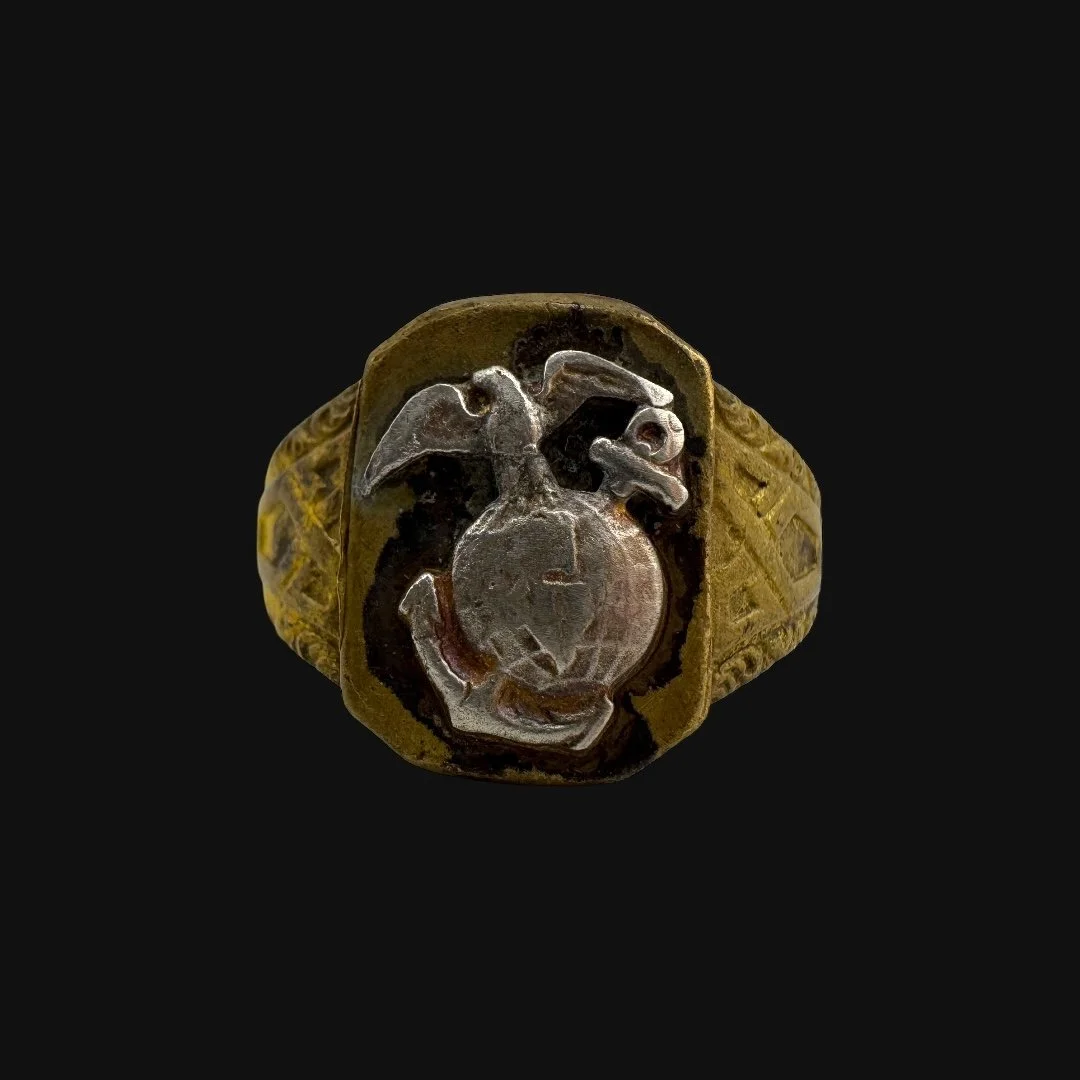 Image 3 of 14
Image 3 of 14

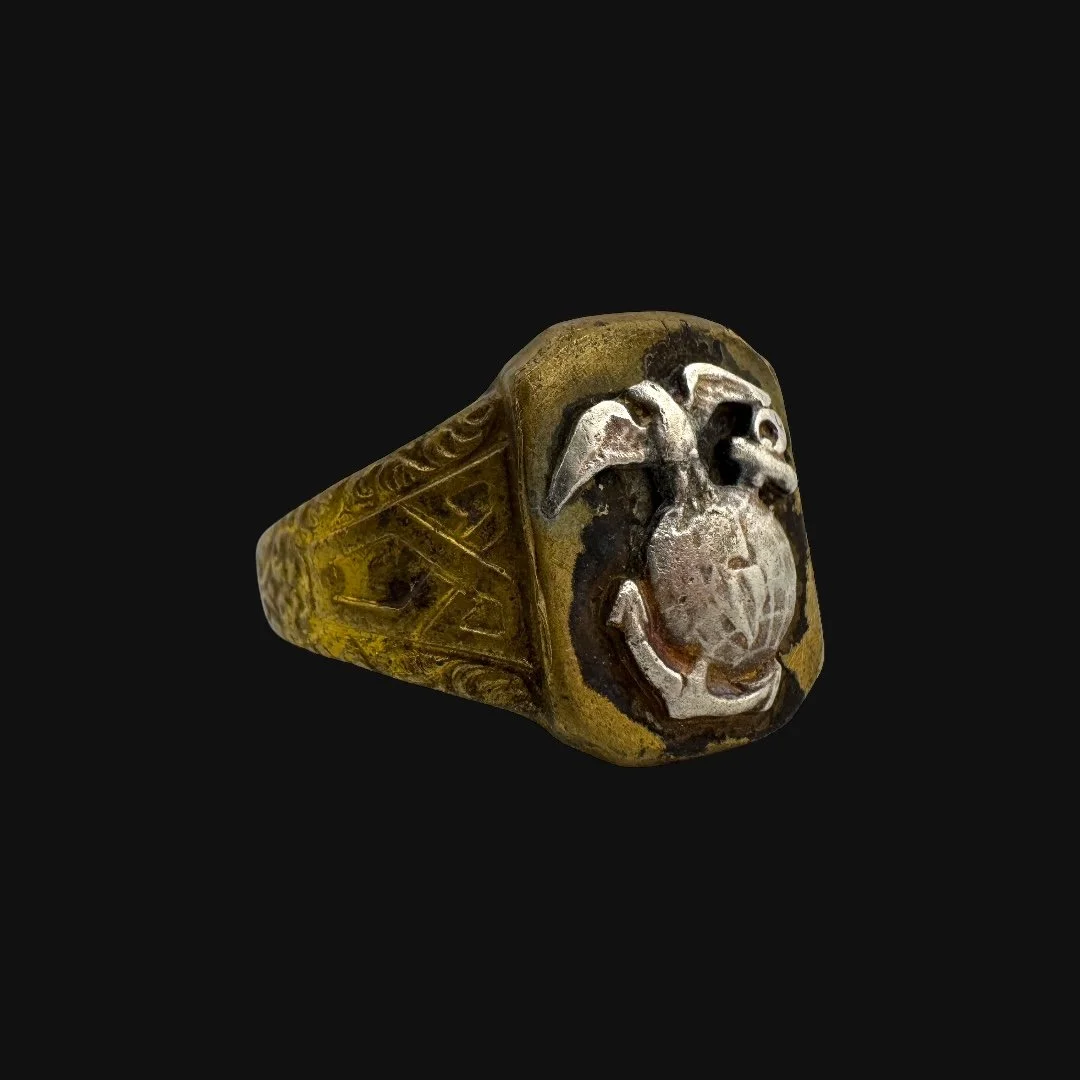 Image 4 of 14
Image 4 of 14

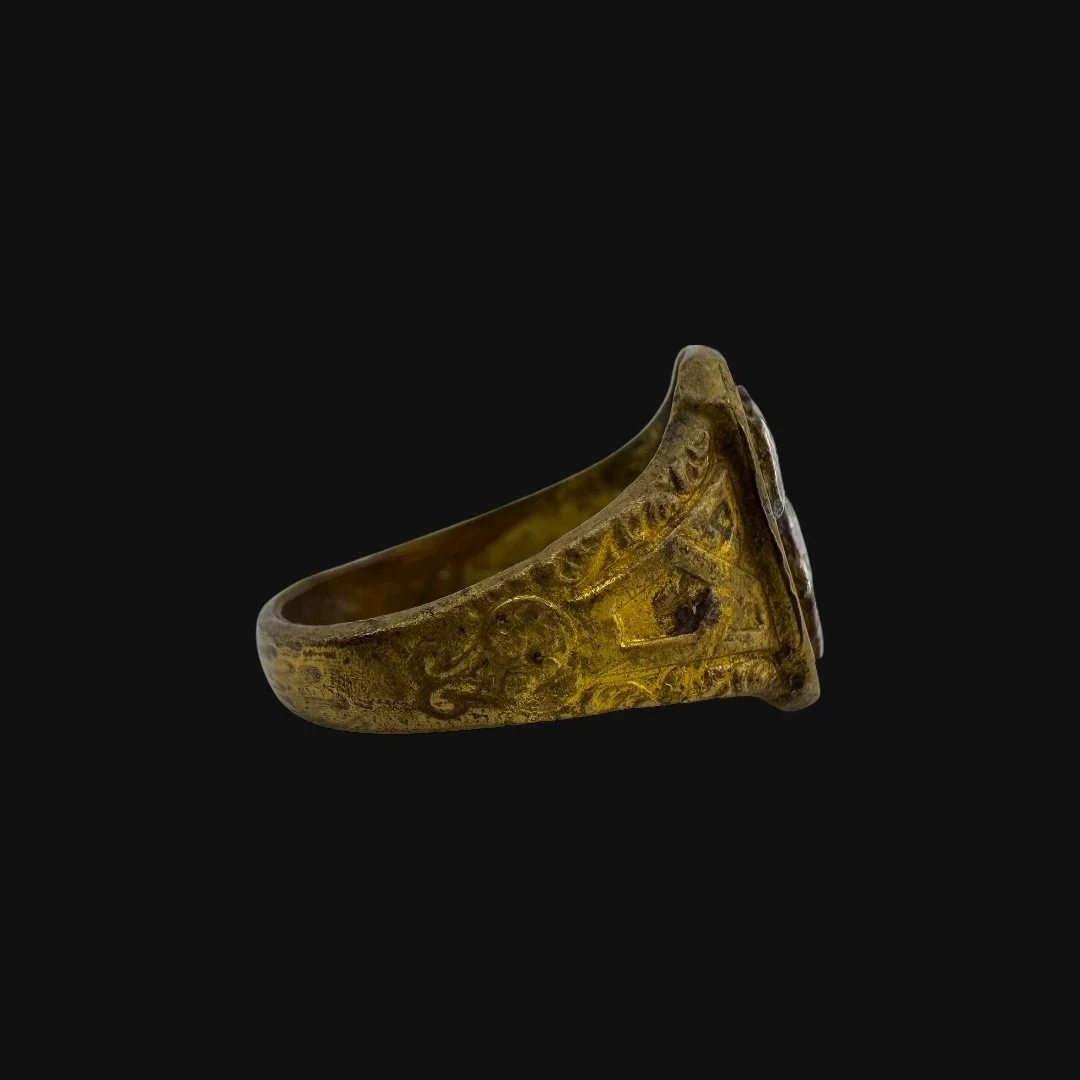 Image 5 of 14
Image 5 of 14

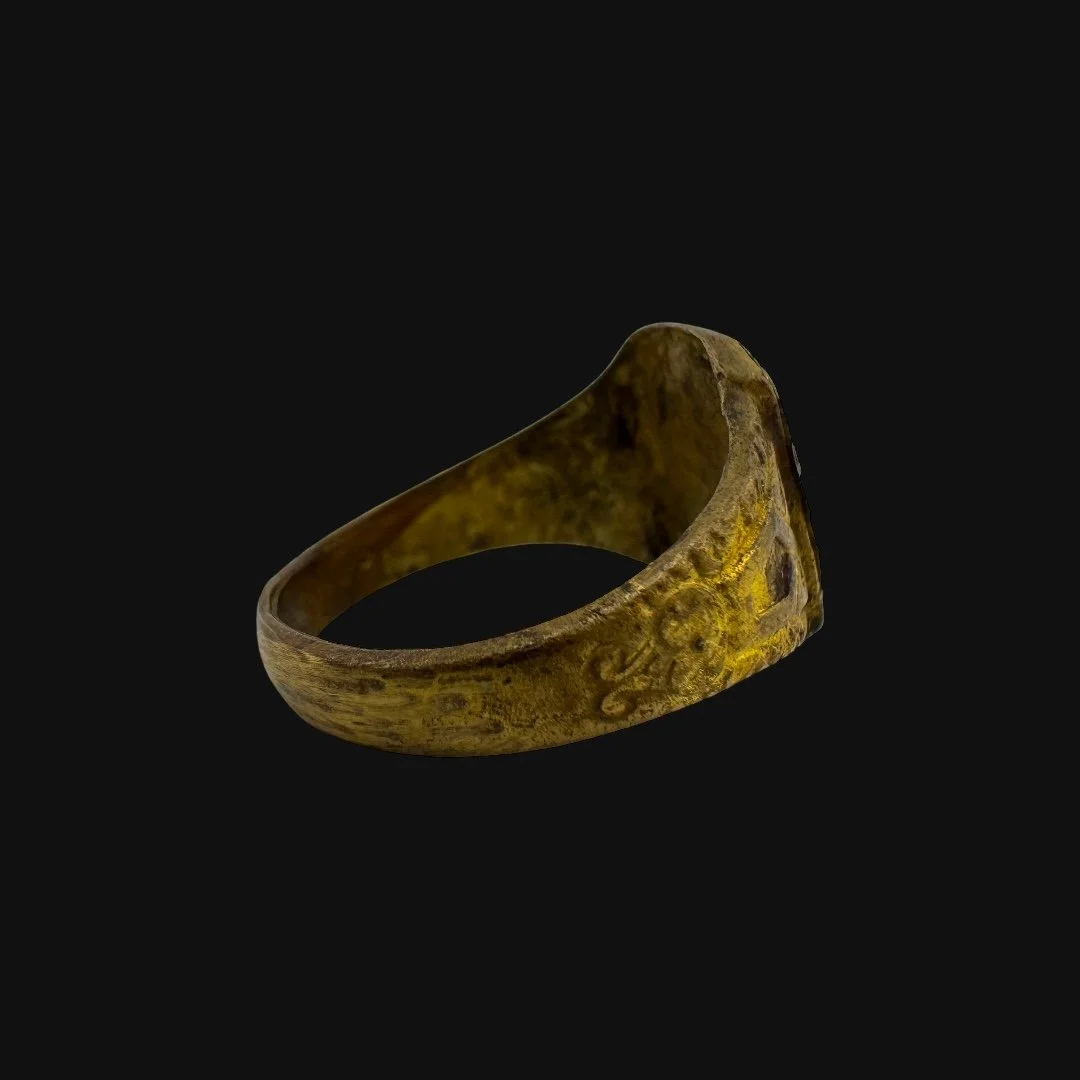 Image 6 of 14
Image 6 of 14

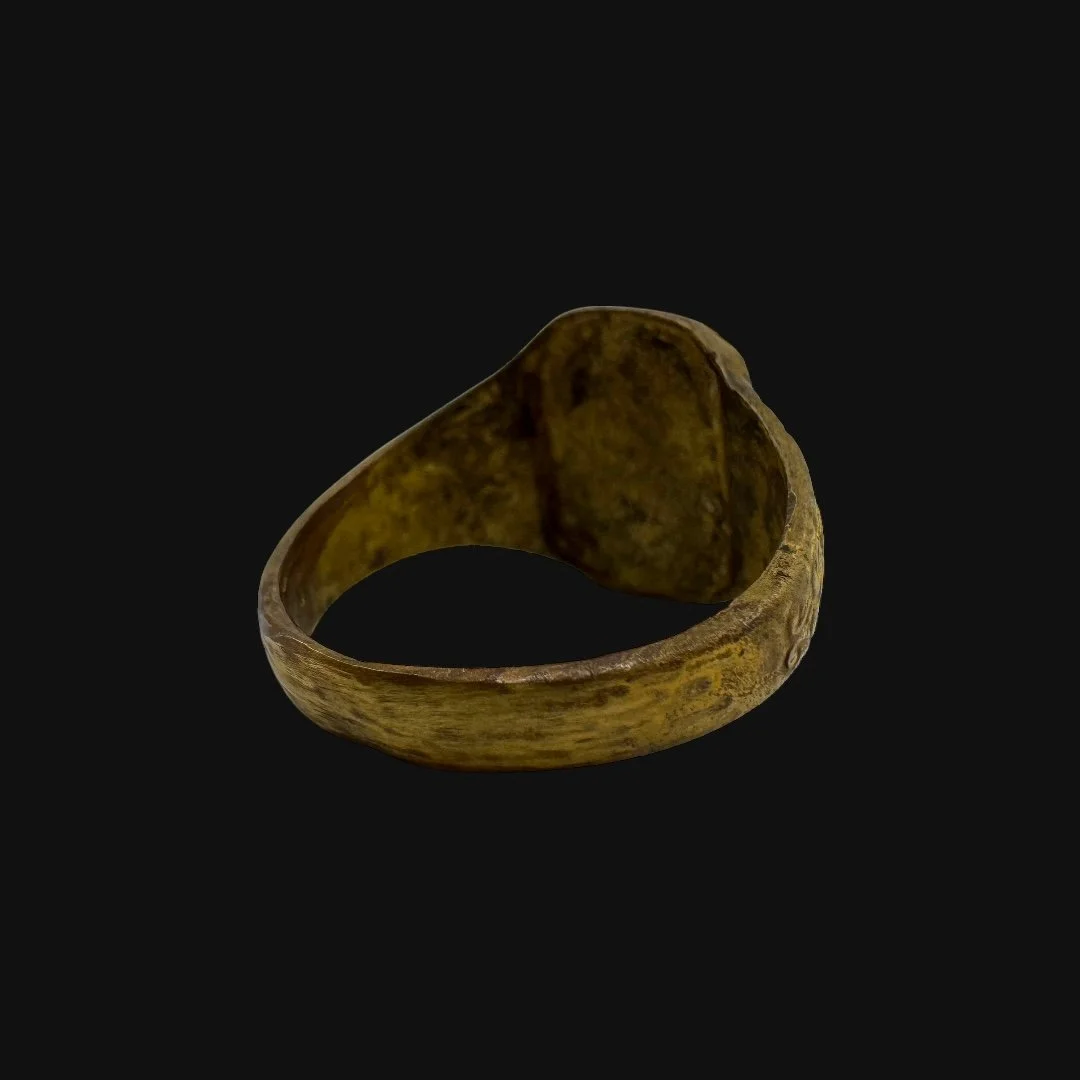 Image 7 of 14
Image 7 of 14

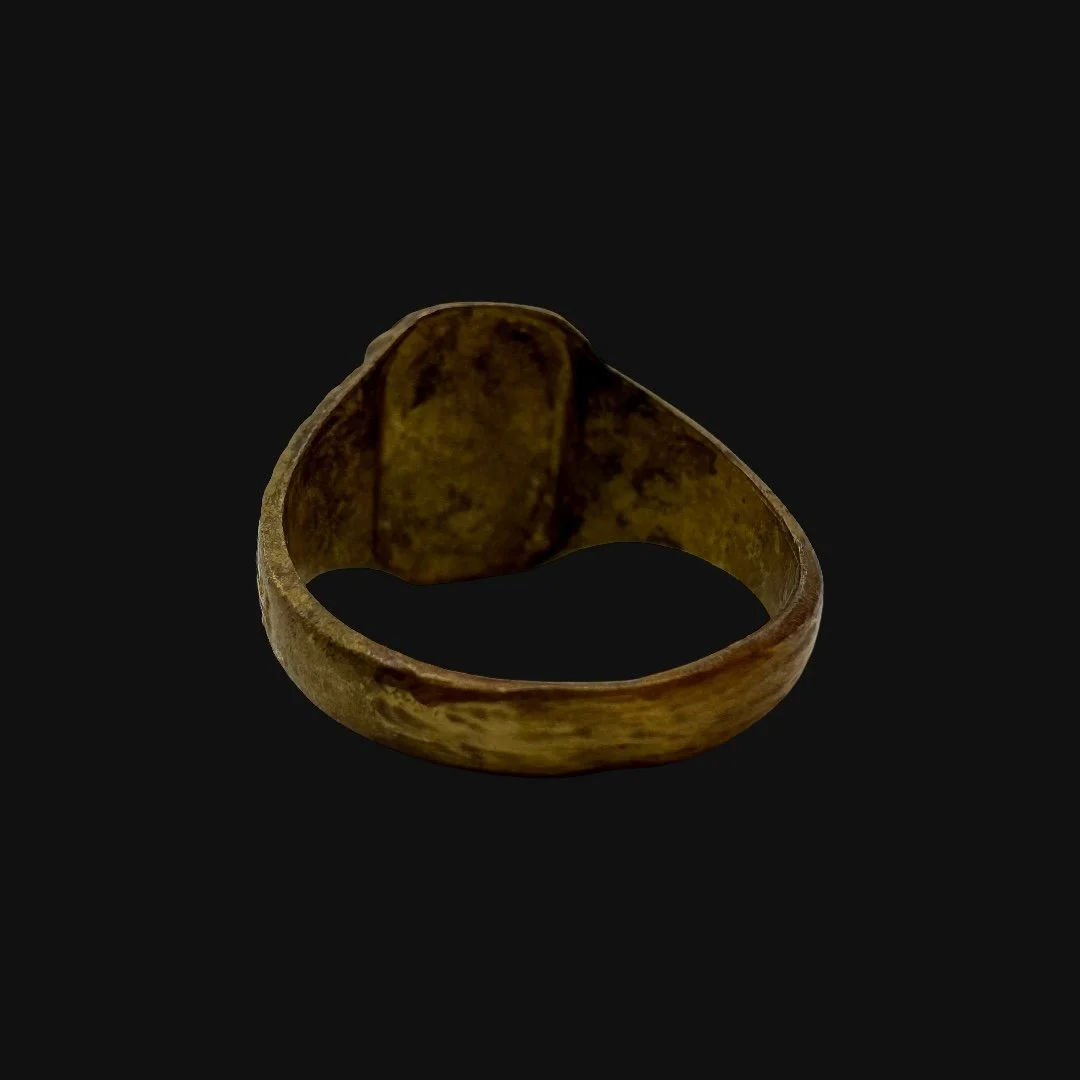 Image 8 of 14
Image 8 of 14

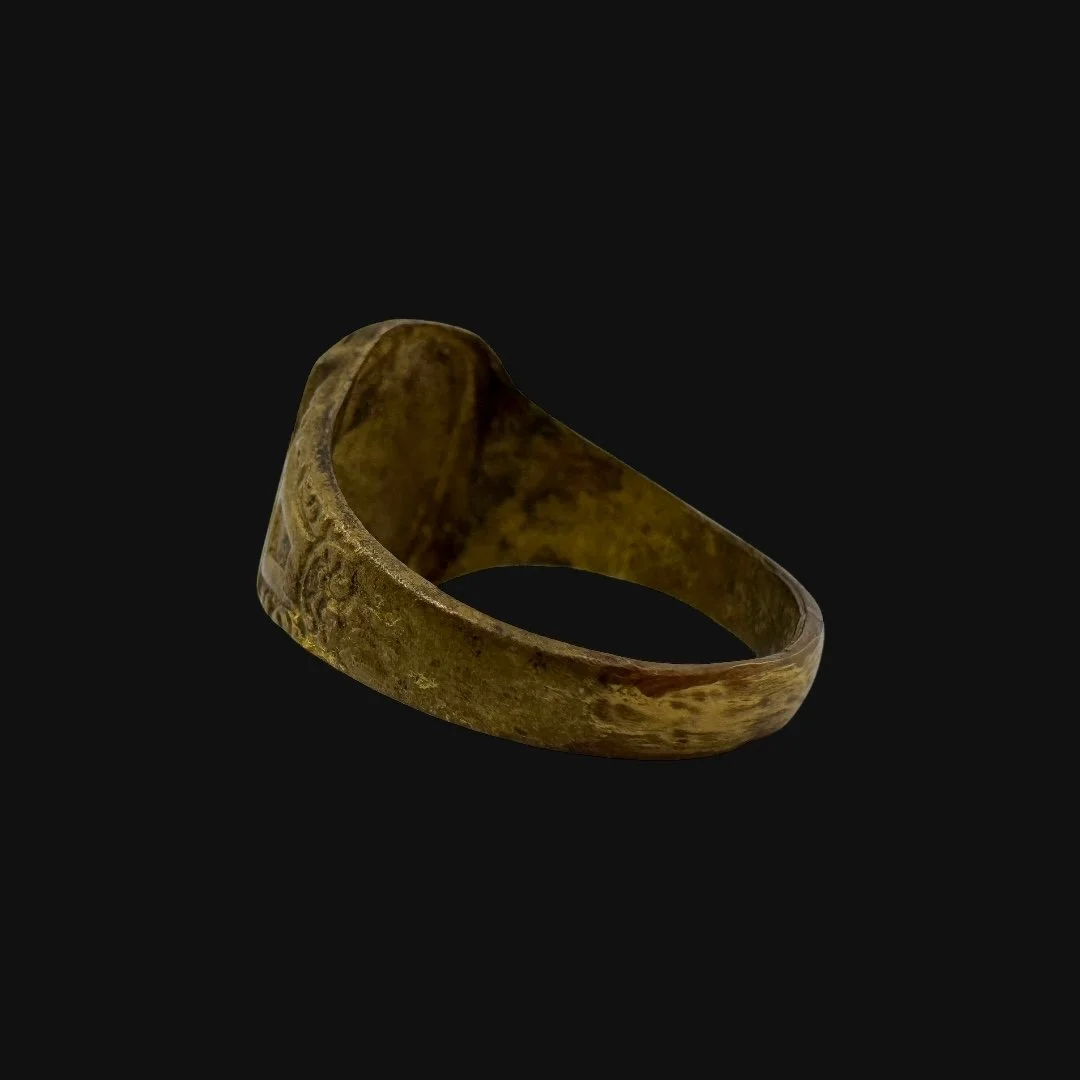 Image 9 of 14
Image 9 of 14

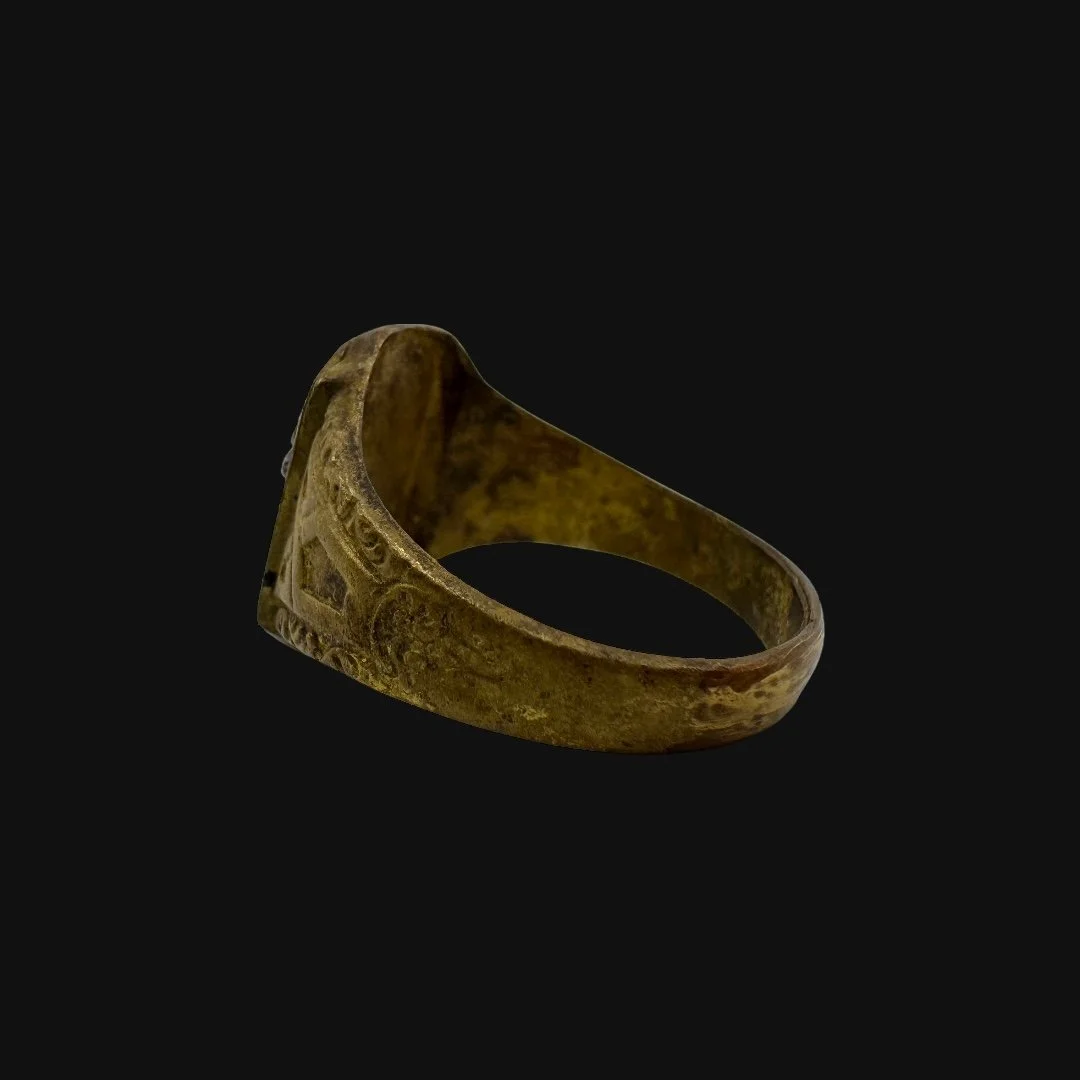 Image 10 of 14
Image 10 of 14

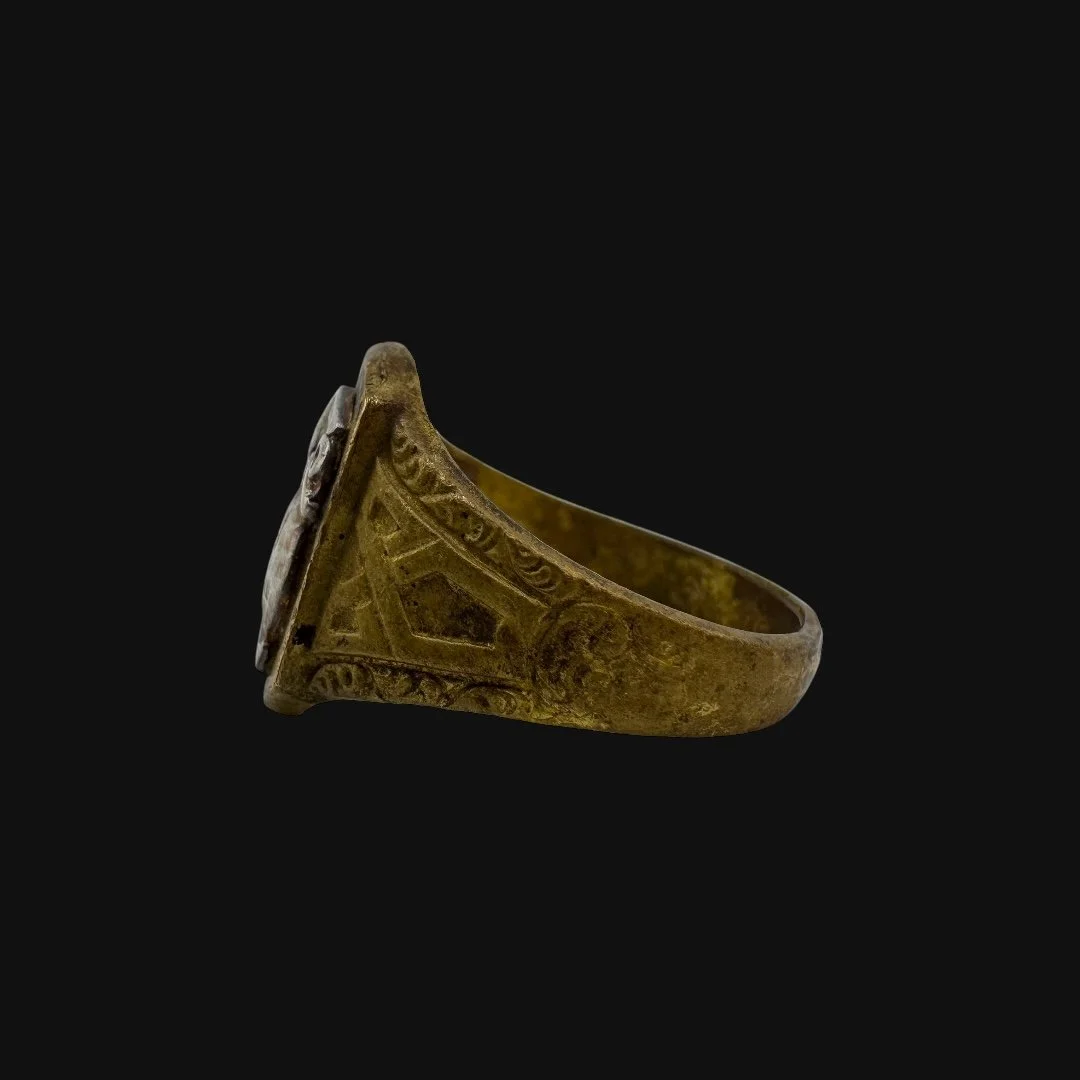 Image 11 of 14
Image 11 of 14

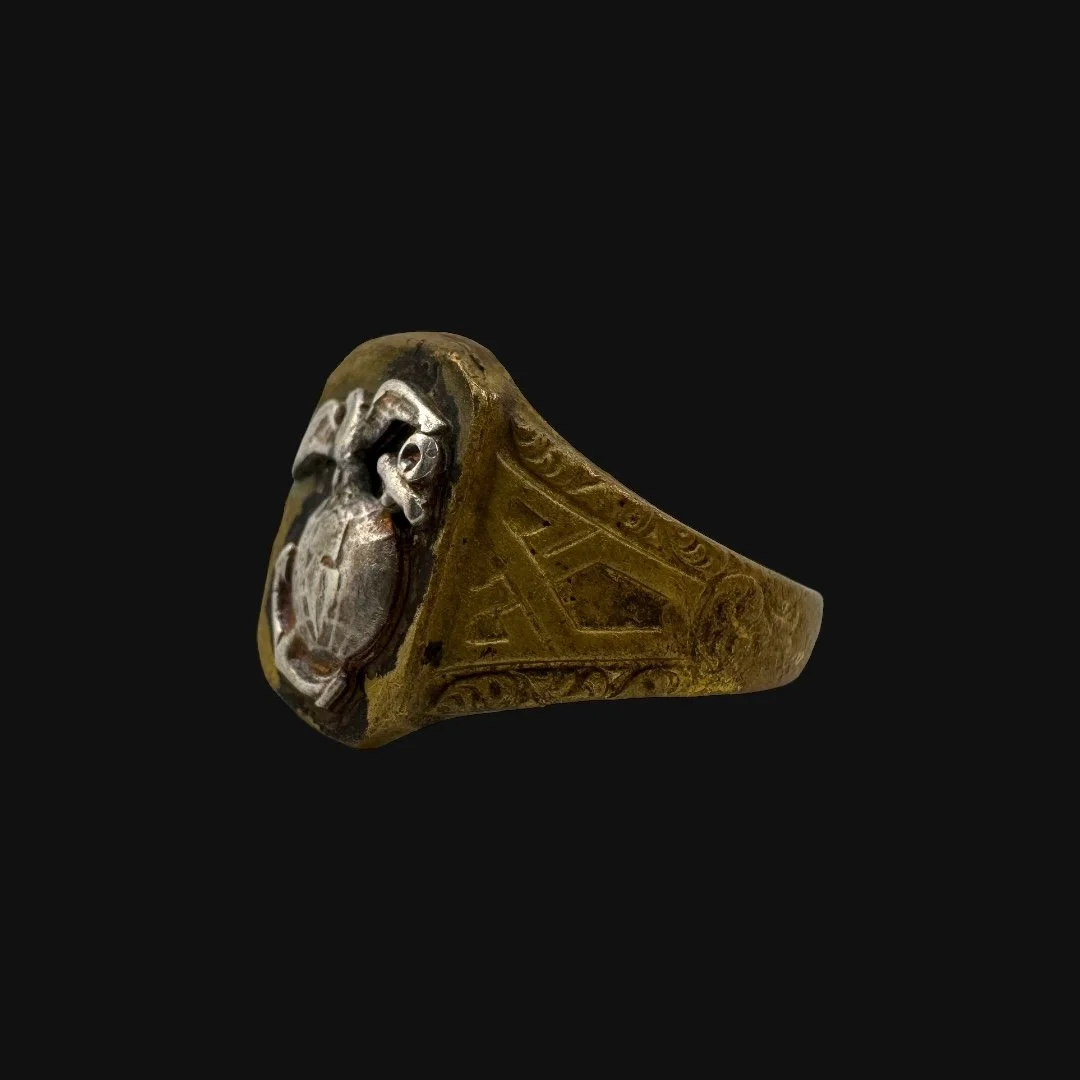 Image 12 of 14
Image 12 of 14

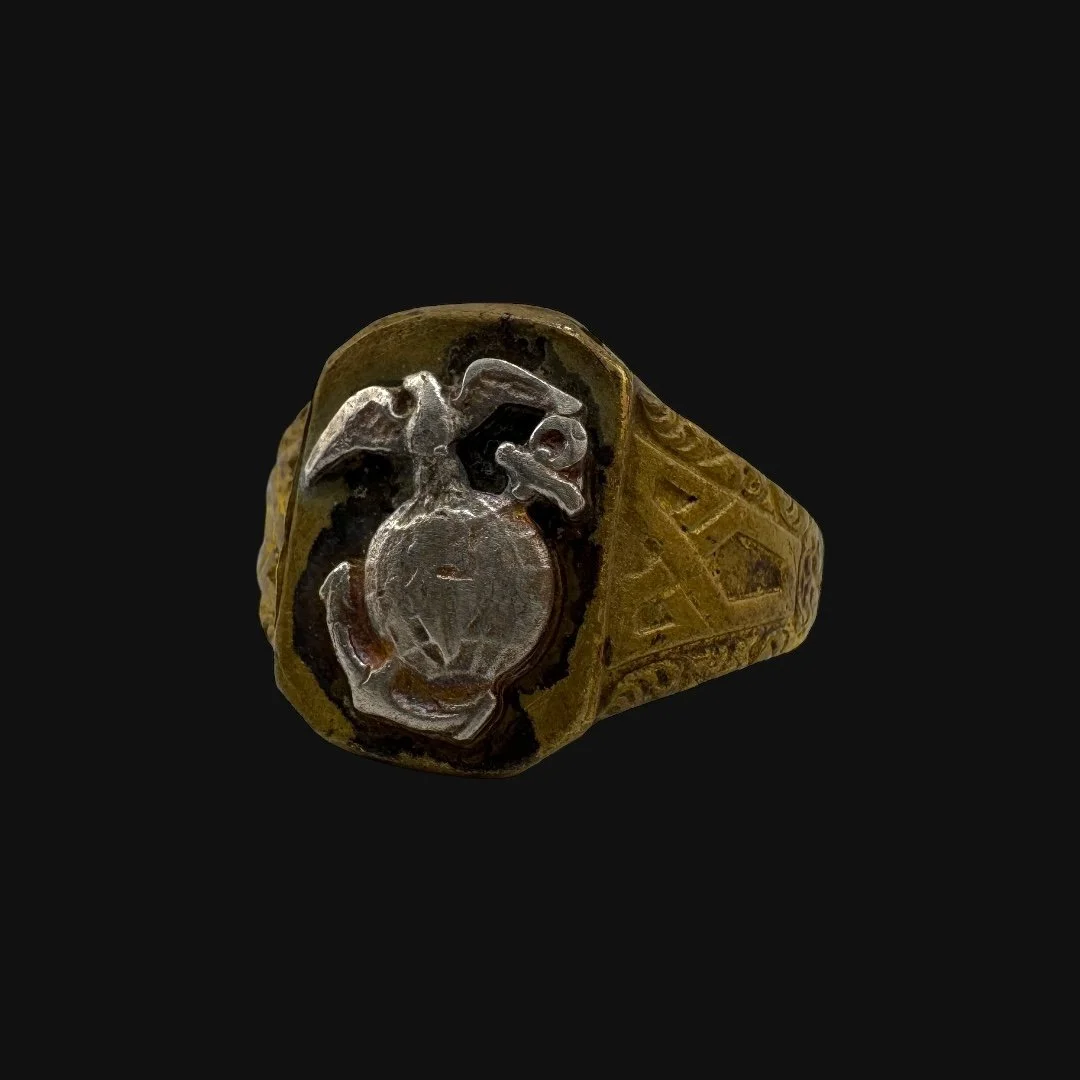 Image 13 of 14
Image 13 of 14

 Image 14 of 14
Image 14 of 14















Original WWII 1943-1945 U.S. Marine Corps “USMC Emblem” Marine's Pacific Theater Military Ring (Size 10.5)
Comes with a hand-signed C.O.A. and a full historical research write-up
From: World War II
Branch: U.S. Marine Corps
Dated: 1943-1945
Ring Size: 10.5 (US)
Material: Bronze & Sterling Silver
Wearable History Collection:
This authentic 1943-1945 WWII-era ring, preserved in its original and unaltered condition, combines exceptional craftsmanship with lasting durability, making it fully suitable for modern wear today. As part of our exclusive World War II “Wearable History Ring Collection,” it offers the rare opportunity to own and wear a genuine piece of World War II. Both a timeless accessory and a tangible link to the past, this truly one-of-a-kind ring stands as a wearable tribute to the courage and sacrifice of a generation.
Historical Significance to the U.S. Marine Corps During WWII:
The U.S. Marine Corps played a decisive role in World War II, particularly in the Pacific, where it became synonymous with amphibious assault and some of the war’s fiercest battles. At the war’s outset, Marines defended Wake Island, holding off Japanese forces before being overwhelmed, setting the tone for their determination throughout the conflict. Their first major offensive came at Guadalcanal, where the 1st Marine Division endured months of combat, disease, and shortages while securing Henderson Field. This victory marked the first large-scale Allied counteroffensive against Japan and proved the Marines could defeat Japanese ground forces.
The Central Pacific campaigns pushed the Marines into increasingly costly but strategically vital battles. At Tarawa, the 2nd Marine Division stormed heavily fortified positions, suffering over 1,000 dead in just 76 hours. Saipan brought Marines within striking distance of Japan, while Peleliu tested the endurance of the 1st Marine Division against entrenched Japanese defenders. These battles refined amphibious doctrine and showcased the Marines’ ability to overcome immense obstacles at great sacrifice.
The pinnacle of Marine operations came at Iwo Jima and Okinawa. At Iwo Jima, Marines of the 3rd, 4th, and 5th Divisions fought a bloody five-week battle against 22,000 Japanese defenders. Nearly 7,000 Marines were killed, but the island provided vital airfields for B-29 bombers. The flag raising on Mount Suribachi became one of the most iconic images of the war. At Okinawa, the largest Pacific amphibious assault, Marines fought alongside the Army against fierce resistance and kamikaze attacks, securing a base for the planned invasion of Japan. The scale of casualties influenced the decision to use atomic weapons rather than invade the Japanese homeland.
By 1945, the Marine Corps had grown from 66,000 to nearly 475,000 personnel, suffering over 19,000 killed but securing a reputation for unmatched toughness and innovation. Their development of amphibious tactics, use of landing craft like the Higgins boat and LVT, and coordination with naval and air forces reshaped modern warfare. From Wake to Okinawa, the Marines’ courage, sacrifice, and effectiveness made them indispensable to Allied victory and solidified their identity as America’s elite expeditionary force.
The Legacy Within This Ring:
This original World War II U.S. Marine Corps ring is a rare and deeply personal artifact, privately commissioned by a Marine who served in the Pacific campaigns of the war. Bearing the proud eagle, globe, and anchor emblem on its face, the ring allowed its owner to carry the symbol of his service not only on his uniform but also as a constant reminder on his hand. For Marines who stormed beaches at Tarawa, Saipan, Iwo Jima, and Okinawa, such rings became more than jewelry. They were tangible reminders of sacrifice, brotherhood, and the unyielding spirit of the Corps in the face of some of the war’s bloodiest battles. Every engraved detail reflects the pride these men carried in their calling…fighters trained to strike from sea to land, who carved a path across the Pacific island by island. The eagle, globe, and anchor marked their identity as Marines, part of a tradition of service that demanded endurance, loyalty, and honor. Today, this ring endures as a wearable relic of the Marine Corps’ legacy in World War II. It represents not only the courage of those who fought through fire-swept beaches and entrenched defenses, but also the enduring bond of the Marines who proved, time and again, their devotion to one another and to the nation they swore to defend.
Comes with a hand-signed C.O.A. and a full historical research write-up
From: World War II
Branch: U.S. Marine Corps
Dated: 1943-1945
Ring Size: 10.5 (US)
Material: Bronze & Sterling Silver
Wearable History Collection:
This authentic 1943-1945 WWII-era ring, preserved in its original and unaltered condition, combines exceptional craftsmanship with lasting durability, making it fully suitable for modern wear today. As part of our exclusive World War II “Wearable History Ring Collection,” it offers the rare opportunity to own and wear a genuine piece of World War II. Both a timeless accessory and a tangible link to the past, this truly one-of-a-kind ring stands as a wearable tribute to the courage and sacrifice of a generation.
Historical Significance to the U.S. Marine Corps During WWII:
The U.S. Marine Corps played a decisive role in World War II, particularly in the Pacific, where it became synonymous with amphibious assault and some of the war’s fiercest battles. At the war’s outset, Marines defended Wake Island, holding off Japanese forces before being overwhelmed, setting the tone for their determination throughout the conflict. Their first major offensive came at Guadalcanal, where the 1st Marine Division endured months of combat, disease, and shortages while securing Henderson Field. This victory marked the first large-scale Allied counteroffensive against Japan and proved the Marines could defeat Japanese ground forces.
The Central Pacific campaigns pushed the Marines into increasingly costly but strategically vital battles. At Tarawa, the 2nd Marine Division stormed heavily fortified positions, suffering over 1,000 dead in just 76 hours. Saipan brought Marines within striking distance of Japan, while Peleliu tested the endurance of the 1st Marine Division against entrenched Japanese defenders. These battles refined amphibious doctrine and showcased the Marines’ ability to overcome immense obstacles at great sacrifice.
The pinnacle of Marine operations came at Iwo Jima and Okinawa. At Iwo Jima, Marines of the 3rd, 4th, and 5th Divisions fought a bloody five-week battle against 22,000 Japanese defenders. Nearly 7,000 Marines were killed, but the island provided vital airfields for B-29 bombers. The flag raising on Mount Suribachi became one of the most iconic images of the war. At Okinawa, the largest Pacific amphibious assault, Marines fought alongside the Army against fierce resistance and kamikaze attacks, securing a base for the planned invasion of Japan. The scale of casualties influenced the decision to use atomic weapons rather than invade the Japanese homeland.
By 1945, the Marine Corps had grown from 66,000 to nearly 475,000 personnel, suffering over 19,000 killed but securing a reputation for unmatched toughness and innovation. Their development of amphibious tactics, use of landing craft like the Higgins boat and LVT, and coordination with naval and air forces reshaped modern warfare. From Wake to Okinawa, the Marines’ courage, sacrifice, and effectiveness made them indispensable to Allied victory and solidified their identity as America’s elite expeditionary force.
The Legacy Within This Ring:
This original World War II U.S. Marine Corps ring is a rare and deeply personal artifact, privately commissioned by a Marine who served in the Pacific campaigns of the war. Bearing the proud eagle, globe, and anchor emblem on its face, the ring allowed its owner to carry the symbol of his service not only on his uniform but also as a constant reminder on his hand. For Marines who stormed beaches at Tarawa, Saipan, Iwo Jima, and Okinawa, such rings became more than jewelry. They were tangible reminders of sacrifice, brotherhood, and the unyielding spirit of the Corps in the face of some of the war’s bloodiest battles. Every engraved detail reflects the pride these men carried in their calling…fighters trained to strike from sea to land, who carved a path across the Pacific island by island. The eagle, globe, and anchor marked their identity as Marines, part of a tradition of service that demanded endurance, loyalty, and honor. Today, this ring endures as a wearable relic of the Marine Corps’ legacy in World War II. It represents not only the courage of those who fought through fire-swept beaches and entrenched defenses, but also the enduring bond of the Marines who proved, time and again, their devotion to one another and to the nation they swore to defend.
